List low glycemic load foods. Low Glycemic Load Foods: A Guide to Blood Sugar Management
What is glycemic load and how does it differ from glycemic index. How can understanding glycemic load improve blood sugar control. Which foods have a low glycemic load and are best for stable blood sugar levels.
Understanding Glycemic Load: A Key Tool for Blood Sugar Management
Glycemic load (GL) is a valuable measure for understanding how foods impact blood sugar levels. Unlike the glycemic index (GI), which solely ranks foods based on how quickly they raise blood glucose, glycemic load takes into account both the quality and quantity of carbohydrates in a food. This makes GL a more comprehensive and accurate tool for managing blood sugar, especially for individuals with diabetes or those seeking to maintain stable energy levels throughout the day.
What is Glycemic Load?
Glycemic load is a classification system that measures the impact of carbohydrate-containing foods on blood sugar levels. It provides insight into how much glucose a particular food can deliver per serving, helping individuals make informed dietary choices to maintain stable blood sugar levels.

How is Glycemic Load Calculated?
The formula for calculating glycemic load is:
GL = (GI x amount of carbohydrate) / 100
For example, a medium-sized apple with a GI of 40 and 15 grams of carbohydrates would have a glycemic load of 6:
(40 x 15) / 100 = 6
This low GL value indicates that an apple is a good snack choice for maintaining stable blood sugar levels.
Glycemic Load vs. Glycemic Index: Understanding the Differences
While both glycemic load and glycemic index are useful tools for managing blood sugar, they differ in their approach and application. The glycemic index ranks foods based on how quickly they are digested and raise blood glucose levels, using a scale from 0 to 100 where pure glucose is 100. In contrast, glycemic load considers the total impact of a food on blood sugar by factoring in both the glycemic index and the amount of carbohydrates in a serving.
Glycemic Index Ranges
- Low GI: 55 or less
- Medium GI: 56 to 69
- High GI: 70 or higher
Glycemic Load Values
- Low GL: 10 or less
- Medium GL: 11 to 19
- High GL: 20 or higher
The key advantage of using glycemic load is that it provides a more accurate representation of a food’s impact on blood sugar. A food can have a high glycemic index but a low glycemic load, making it a better choice for blood sugar management than initially suspected.
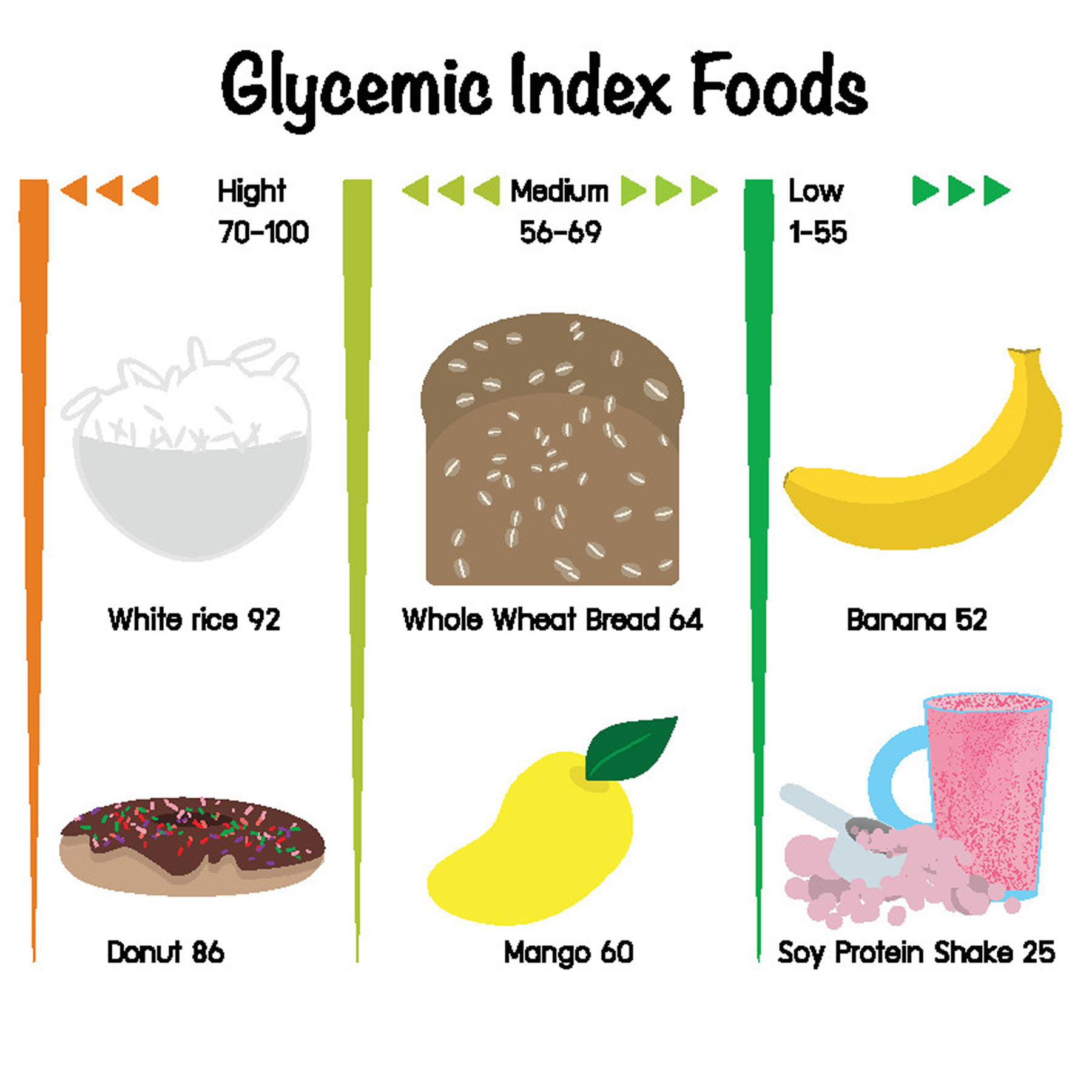
The Impact of Glycemic Load on Health and Blood Sugar Management
Understanding and applying the concept of glycemic load can have significant benefits for overall health and blood sugar management. For optimal health, experts recommend keeping daily glycemic load under 100. This approach can help individuals with diabetes lower their A1C levels and reduce the risk of experiencing hypoglycemia or hyperglycemia.
Benefits of a Low Glycemic Load Diet
Research has shown that following a low glycemic load diet can lead to various health improvements. A study involving 100 participants with poorly managed diabetes found that adhering to a low-GL diet for 10 weeks resulted in weight loss, lower cholesterol levels, and improved A1C readings. These findings highlight the potential of using glycemic load as a tool for better diabetes management and overall health.
Low Glycemic Load Foods for Stable Blood Sugar
Incorporating low glycemic load foods into your diet can help maintain stable blood sugar levels throughout the day. Here’s a list of foods that typically have a low glycemic load:

- Non-starchy vegetables (e.g., leafy greens, broccoli, cauliflower)
- Berries (strawberries, blueberries, raspberries)
- Nuts and seeds
- Legumes (lentils, chickpeas, black beans)
- Whole grains (quinoa, barley, oats)
- Greek yogurt
- Apples and pears
- Lean proteins (chicken, fish, tofu)
These foods can be excellent choices for individuals looking to manage their blood sugar levels effectively.
Practical Tips for Incorporating Low Glycemic Load Foods into Your Diet
Adopting a low glycemic load diet doesn’t have to be complicated. Here are some practical tips to help you make the transition:
- Replace refined grains with whole grains
- Include a source of protein with each meal
- Snack on nuts and seeds instead of high-carb options
- Fill half your plate with non-starchy vegetables
- Choose fruit over fruit juices
- Experiment with different types of legumes in your meals
By gradually incorporating these changes, you can create a sustainable low glycemic load eating plan that supports stable blood sugar levels and overall health.
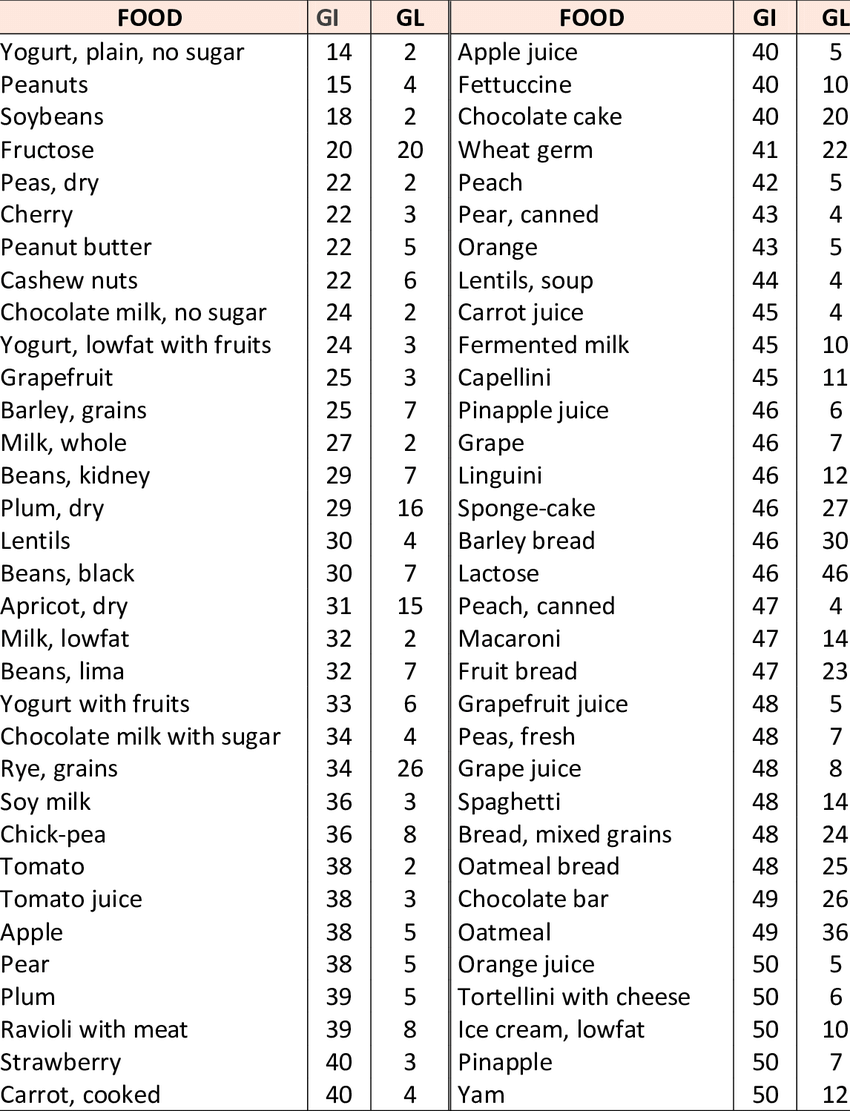
The Role of Glycemic Load in Diabetes Management
For individuals with diabetes, understanding and applying the concept of glycemic load can be particularly beneficial. By focusing on low GL foods, people with diabetes can better manage their blood sugar levels, potentially reducing the need for medication and lowering the risk of diabetes-related complications.
How Can Glycemic Load Help with Diabetes Management?
Glycemic load provides a more accurate picture of how foods affect blood sugar levels compared to looking at carbohydrate content alone. This allows individuals with diabetes to make more informed food choices, potentially leading to better glycemic control. By consistently choosing foods with a lower glycemic load, people with diabetes may experience more stable blood sugar levels throughout the day, reducing the frequency of hyperglycemic and hypoglycemic episodes.
Glycemic Load and A1C Levels
The A1C test provides a two- to three-month average of blood sugar levels and is a key indicator of diabetes management. Research suggests that following a low glycemic load diet can help lower A1C levels. This improvement in long-term blood sugar control can significantly reduce the risk of diabetes-related complications, such as cardiovascular disease, kidney problems, and nerve damage.
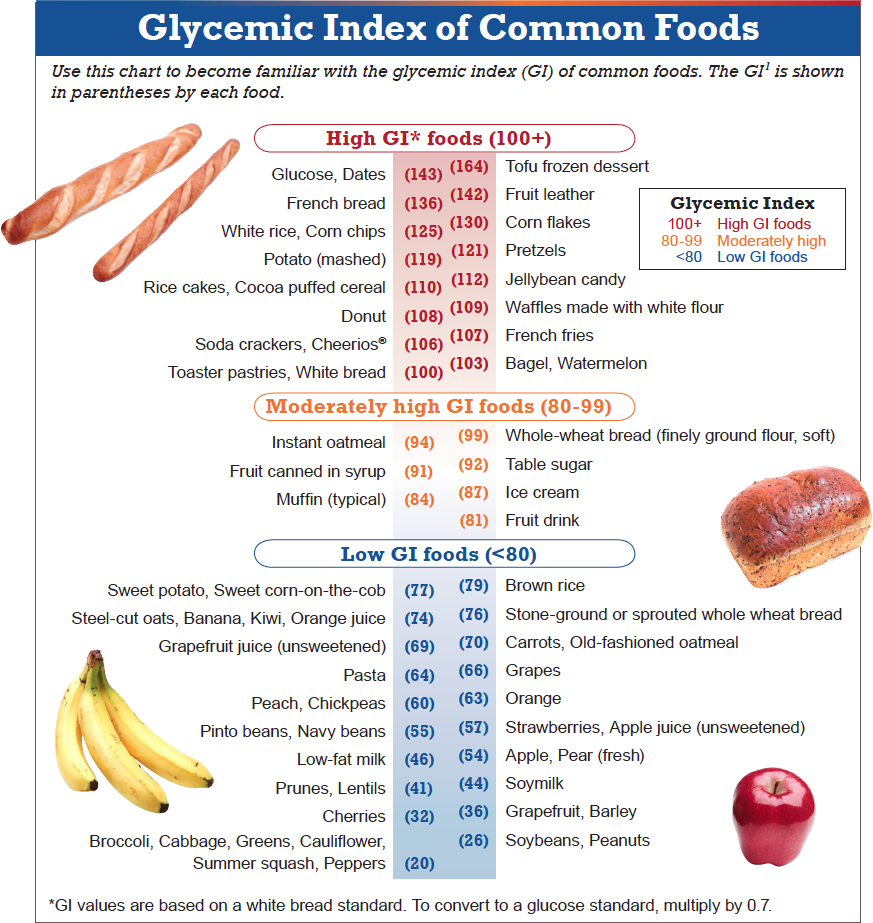
Glycemic Load and Weight Management
Beyond its benefits for blood sugar control, understanding glycemic load can also be a valuable tool for weight management. Foods with a lower glycemic load tend to be more satiating, helping individuals feel fuller for longer periods. This can naturally lead to reduced calorie intake and support weight loss or weight maintenance efforts.
How Does Glycemic Load Affect Appetite and Satiety?
Low glycemic load foods typically cause a slower and more gradual rise in blood sugar levels. This gradual increase helps prevent the rapid spikes and subsequent crashes in blood sugar that can lead to increased hunger and cravings. By choosing foods with a lower glycemic load, individuals may find it easier to manage their appetite and avoid overeating.
Glycemic Load and Sustainable Weight Loss
Incorporating low glycemic load foods into a balanced diet can support sustainable weight loss. These foods often provide a good balance of nutrients, including fiber and protein, which can help maintain muscle mass during weight loss. Additionally, the stable energy levels provided by low GL foods can make it easier to stay active and maintain a consistent exercise routine, further supporting weight management efforts.

Glycemic Load and Cardiovascular Health
The benefits of understanding and applying glycemic load extend beyond blood sugar management and weight control. Research suggests that a diet focused on low glycemic load foods may also have positive effects on cardiovascular health.
How Can Glycemic Load Impact Heart Health?
A diet high in low glycemic load foods is often rich in fiber, vitamins, minerals, and antioxidants. These nutrients play crucial roles in maintaining heart health. Additionally, by promoting stable blood sugar levels, a low GL diet may help reduce inflammation and oxidative stress in the body, both of which are risk factors for cardiovascular disease.
Glycemic Load and Cholesterol Levels
Studies have shown that following a low glycemic load diet can help improve cholesterol profiles. Specifically, it may lead to reductions in total cholesterol and LDL (bad) cholesterol levels, while potentially increasing HDL (good) cholesterol. These changes in lipid profiles can significantly reduce the risk of heart disease and stroke.

By understanding and applying the concept of glycemic load, individuals can make informed food choices that support not only blood sugar management but also overall health and well-being. Whether you’re managing diabetes, trying to lose weight, or simply aiming to improve your general health, incorporating low glycemic load foods into your diet can be a powerful strategy for achieving your health goals.
The Lowdown on Glycemic Load: How This Tool Can Aid Blood Sugar Management
Have you ever eaten a snack in hopes of curing your afternoon slump only to feel up and then down again? That’s called a blood sugar (glucose) dip, and while for people with diabetes this kind of fluctuation can be more pronounced and dangerous, as John Hopkins Medicine notes, for everyone else, it can be the ultimate downer and productivity killer.
Fortunately, there’s a free, easy-to-use tool that can help you keep your blood sugar level steady, regardless of whether you have diabetes.
Meet: the glycemic load.
By using an easy formula (no major arithmetic required!) you can learn how quickly foods that contain carbs — from cookies to carrots — lead to blood sugar spikes or dips, and, if you have diabetes, potentially help or hurt your A1C number. (That’d be the two- to three-month average of your blood sugar levels, as the American Diabetes Association notes.)
Here’s how glycemic load and its counterpart glycemic index work.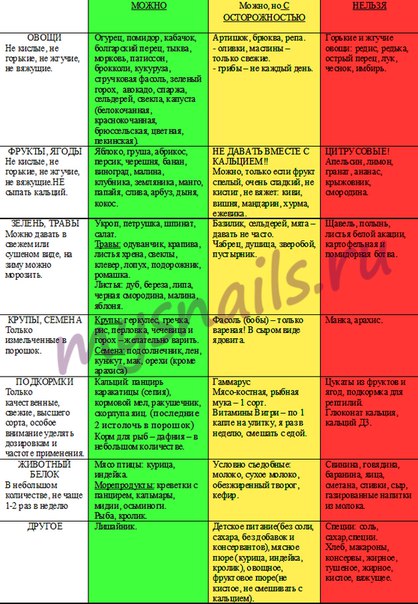
RELATED: How Many Carbs Are in That? A Cheat Sheet for Type 2 Diabetes
Glycemic Load vs. Glycemic Index: What’s the Difference?
Maybe you’ve already heard of glycemic index. “The glycemic index ranks foods based on how quickly they’re digested and raise blood glucose levels,” says Sandra Meyerowitz, MPH, RD, owner of Nutrition Works in Louisville, Kentucky.
Glycemic load is similar but markedly different, especially when it comes to making food choices to better manage diabetes, notes the Mayo Clinic. “It’s glycemic load that takes into consideration every component of the food as a whole,” Meyerowitz adds, “so it’s a different number. It changes everything.”
Because the glycemic load of a food looks at multiple components, the same food can be high on the glycemic index but carry an overall low glycemic load. In these cases, the food is a better choice for blood sugar management than suspected, according to Harvard Medical School.
Glycemic load is a classification of foods with carbohydrates that measures their impact on the body and blood sugar. “It’s used to help you know how high your blood sugar could go when you actually eat the food, and this measurement also lets you know how much glucose per serving a particular food can deliver,” explains Melissa Nieves, RD, with Kemtai, a virtual personal trainer company and who is based in Bayamón, Puerto Rico.
The glycemic index ranges from 0 to 100, where 100 is pure glucose or sugar, according to the British Diabetic Association (BDA). “The lower a food’s glycemic index, the slower blood sugar rises after eating that food, and vice versa,” continues Nieves.
RELATED: The Best and Worst Foods to Eat in a Type 2 Diabetes Diet
How to Calculate a Food’s Glycemic Load With Glycemic Index
According to researchers at the University of Sydney, who were among the first to study glycemic load, you can calculate a GL with the following formula:
GL = (GI x the amount of carbohydrate) divided by 100
They provide the following example with an apple: (40 x 15) divided by 100 = 6
Thus, a medium-sized apple would have a low glycemic load, making it a great snack for people managing diabetes.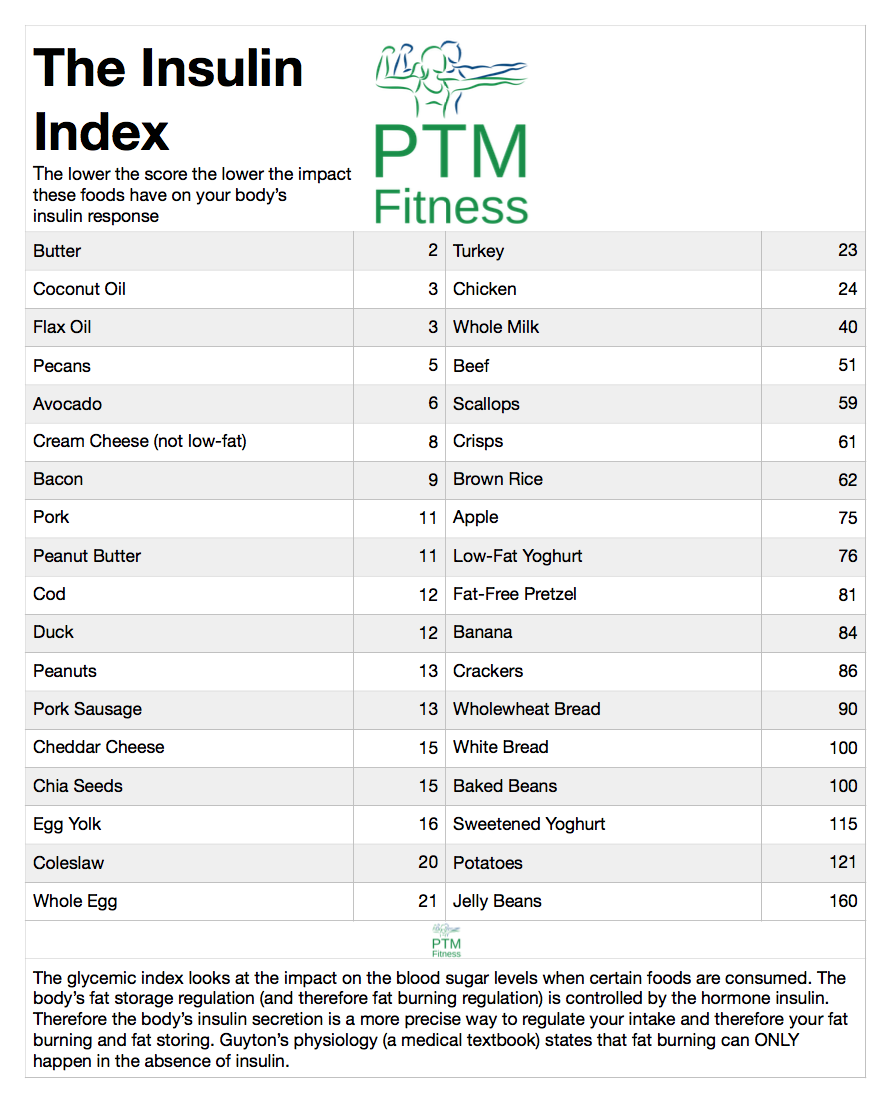 More on this next!
More on this next!
RELATED: 8 Fruits That Are Good for People With Type 2 Diabetes
Glycemic Load and Diet: The Effect on Your Health
The University of California in San Francisco (UCSF) defines glycemic load values as:
- Low GL: 10 or less
- Medium GL: 11 to 19
- High GL: 20 or higher
Look at the GI ranges, as a comparison:
- Low GI: 55 or less
- Medium GI: 56 to 69
- High GI: 70 or higher
According to Diabetes.co.uk, a global diabetes community, this information helps determine which foods can keep your blood sugar level consistent, meaning that you avoid the highs and lows caused by blood sugar jumping too high and quickly dropping — aka the candy bar effect.
For optimal health, the Glycemic Index Foundation recommends keeping your daily glycemic load under 100. This will help get your A1C down if you have diabetes and make you less likely to avoid unpleasant side effects of low blood sugar called hypoglycemia, which can trigger irritability, confusion, headaches, fatigue, and even seizures, warns the American Diabetes Association (ADA). If your blood sugar is too high in diabetes, called hyperglycemia, symptoms may include frequent urination, increased thirst, vomiting, and shortness of breath, the ADA warns.
If your blood sugar is too high in diabetes, called hyperglycemia, symptoms may include frequent urination, increased thirst, vomiting, and shortness of breath, the ADA warns.
Keeping the glycemic load of your diet in mind can help you avoid diabetes-related complications as well. For example, a past study found that when 100 participants with poorly managed diabetes, who were on insulin or oral diabetes medications, followed a low-glycemic load diet for 10 weeks, they lost weight, lowered their cholesterol levels, and improved their A1C. Another small past randomized study found that low-glycemic-load foods, regardless of calorie restriction, was more helpful with weight loss than a diet rich in high-glycemic-load foods. However, insulin secretion was needed to see the benefit.
“It makes more sense to use the glycemic load because when you eat a food, you don’t just eat one food by itself — you eat a whole bunch of foods together,” says Meyerowitz. Looking at the total picture of foods you eat, rather than just the individual pieces, gives you a clearer and more accurate picture of the foods that make up your diet.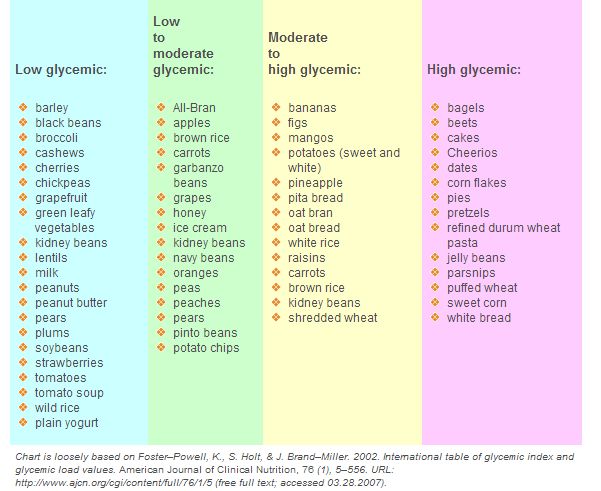
RELATED: 7 Healthy Meal Tips for Type 2 Diabetes
Glycemic Load and Diet: Glycemic Loads in Favorite Foods
Here is a glycemic load reference list with many common foods to let you know which are low, medium, and high, per UCSF.
Foods with a low glycemic load of 10 or less include:
- ¼ cup peanuts (GL of 1)
- 8 oz skim milk (GL of 4)
- 2 cups watermelon (GL of 4.3)
- 1 cup kidney beans (GL of 7)
- 1 cup all bran cereal (GL of 9)
Foods with a medium glycemic load of 11 to 19 include:
- 1 cup cooked oatmeal (GL of 11.7)
- 1 tablespoon (tbsp) honey (GL of 11.9)
- 1 large banana (GL of 12.4)
- 1 medium donut (GL of 17)
- 1 cup boiled brown rice (GL of 18)
Foods with a high glycemic load of 20 or more include:
- 1 cup corn flakes (GL of 21)
- 10 large jelly beans (GL of 22)
- 1 Snickers candy bar (GL of 22.1)
- 1 medium baked russet potato (GL of 23)
- 2 tbsp raisins (GL of 27.
 3)
3)
Why Using Glycemic Load Independently Isn’t Enough to Maintain Health
Knowing the glycemic load of food is a helpful meal planning tool, but you shouldn’t rely on this ranking system alone.
“There is research to support that diabetic patients benefit from knowing how to apply GI and GL as a dietary approach for diabetes management, but it’s important to mention that variability in nutritional content of different foods with the same GI value is a concern,” warns Sotiria Everett, EdD, RD, clinical assistant professor in the department of family, population, and preventive medicine’s nutrition division at Stony Brook Medicine in Stony Brook, New York.
Plus, various factors can change where a food ranks on the glycemic index. For example, some foods with carbs become easier to digest after a longer cooking time, which can subsequently raise their glycemic load, says the Canadian Society of Intestinal Research.
So while adding low glycemic load foods can help balance your glycemic response, focusing on overall dietary quality and promoting the healthful aspects of a diet may be a better approach to help reduce chronic disease, says Dr.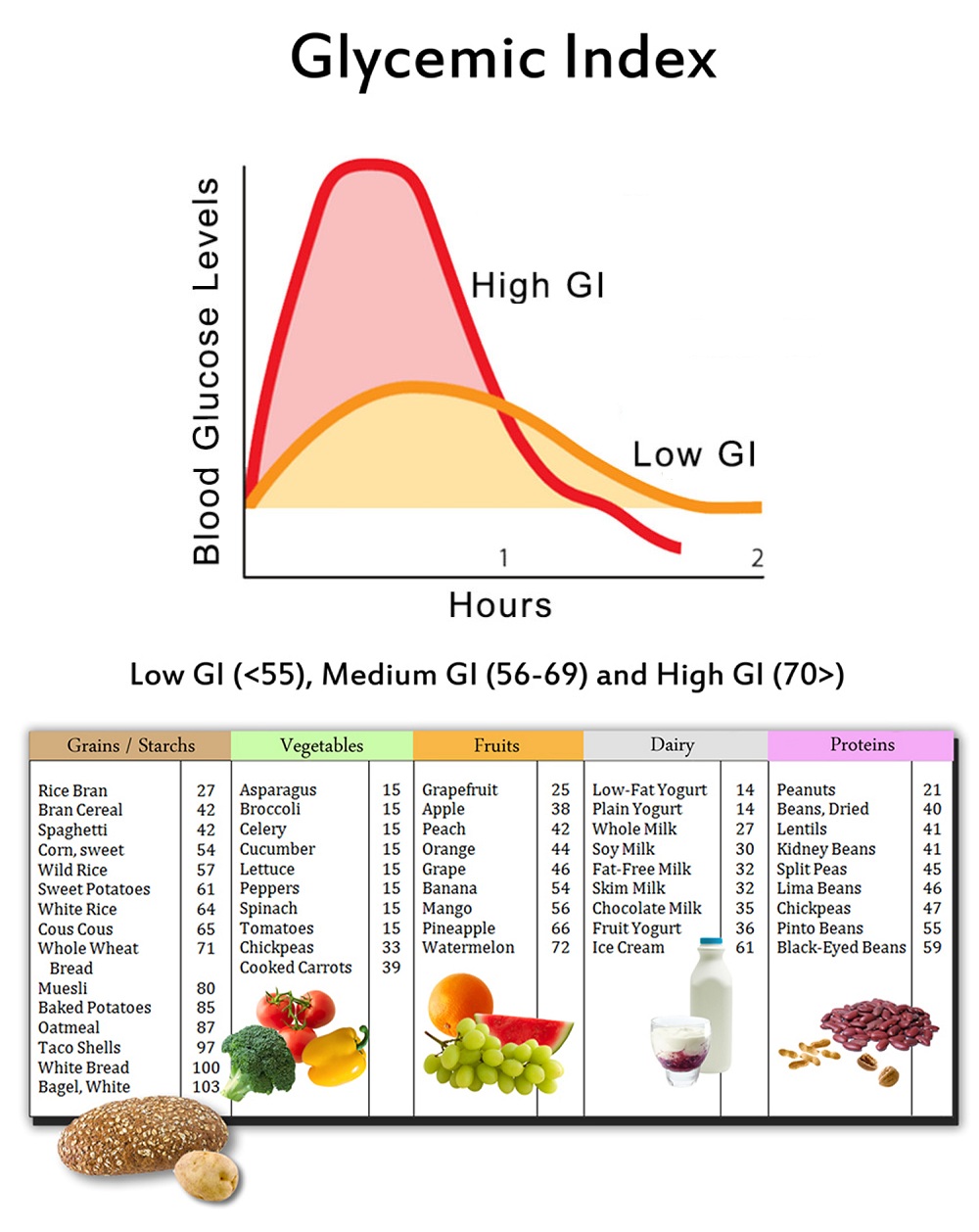 Everett. “Glycemic index and glycemic load are both tools to assist with diet and nutrition, but not to be completely relied upon as the sole source and guide for all meal planning.”
Everett. “Glycemic index and glycemic load are both tools to assist with diet and nutrition, but not to be completely relied upon as the sole source and guide for all meal planning.”
How to Determine High vs Low Glycemic Foods
Some foods can make your blood sugar shoot up very fast. That’s because carbohydrates like refined sugars and bread are easier for your body to change into glucose, the sugar your body uses for energy, than more slowly digested carbs like those in vegetables and whole grains. Eat a lot of those easy carbohydrates and you’ll have a hard time controlling your blood sugar, even with insulin and diabetes medications.
The glycemic index gives you a way to tell slower-acting “good carbs” from the faster “bad carbs.” You can use it to fine-tune your carb-counting and help keep your blood sugar more steady.
What Is the Glycemic Index?
Glycemic index is a number. It gives you an idea about how fast your body converts the carbs in a food into glucose. Two foods with the same amount of carbohydrates can have different glycemic index numbers.
Two foods with the same amount of carbohydrates can have different glycemic index numbers.
The smaller the number, the less impact the food has on your blood sugar.
- 55 or less = Low (good)
- 56- 69 = Medium
- 70 or higher = High (bad)
Look for the glycemic index on the labels of packaged foods. You can also find glycemic index lists for common foods on the Internet. Oregon State University has one with more than 100. Or ask your dietitian or nutrition counselor.
Foods that are close to how they’re found in nature tend to have a lower glycemic index than refined and processed foods.
Glycemic Index Can Change
That number is a starting point on paper. It could be different on your plate, depending on several things.
Preparation. Fat, fiber, and acid (such as lemon juice or vinegar) lower the glycemic index. The longer you cook starches like pasta, the higher their glycemic index will be.
Ripeness. The glycemic index of fruits like bananas goes up as they ripen.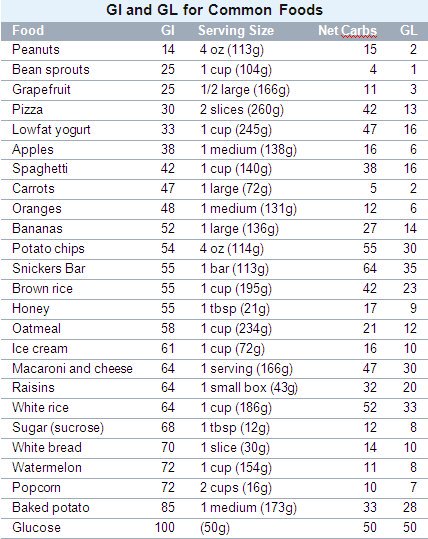
Other foods eaten at the same time. Bring down the overall glycemic index of a meal by combining a high-glycemic index food with foods that have lower ones.
Your age, how active you are, and how fast you digest food also affect how your body reacts to carbs. If you have a diabetes complication called gastroparesis, which delays your stomach from emptying, your body will absorb food much more slowly.
The Bigger Picture: Glycemic Load and a Good Diet
The glycemic index shouldn’t be the only thing you consider when making choices about what to eat. The fact a food has a low glycemic index doesn’t mean it’s super-healthy, or that you should eat a lot of it. Calories, vitamins, and minerals are still important.
For example, potato chips have a lower glycemic index than oatmeal and about the same as green peas. But oatmeal and green peas have more nutrients.
Portion sizes matter, too. The more of whatever kind of carbs you eat, the more they’ll affect your blood sugar.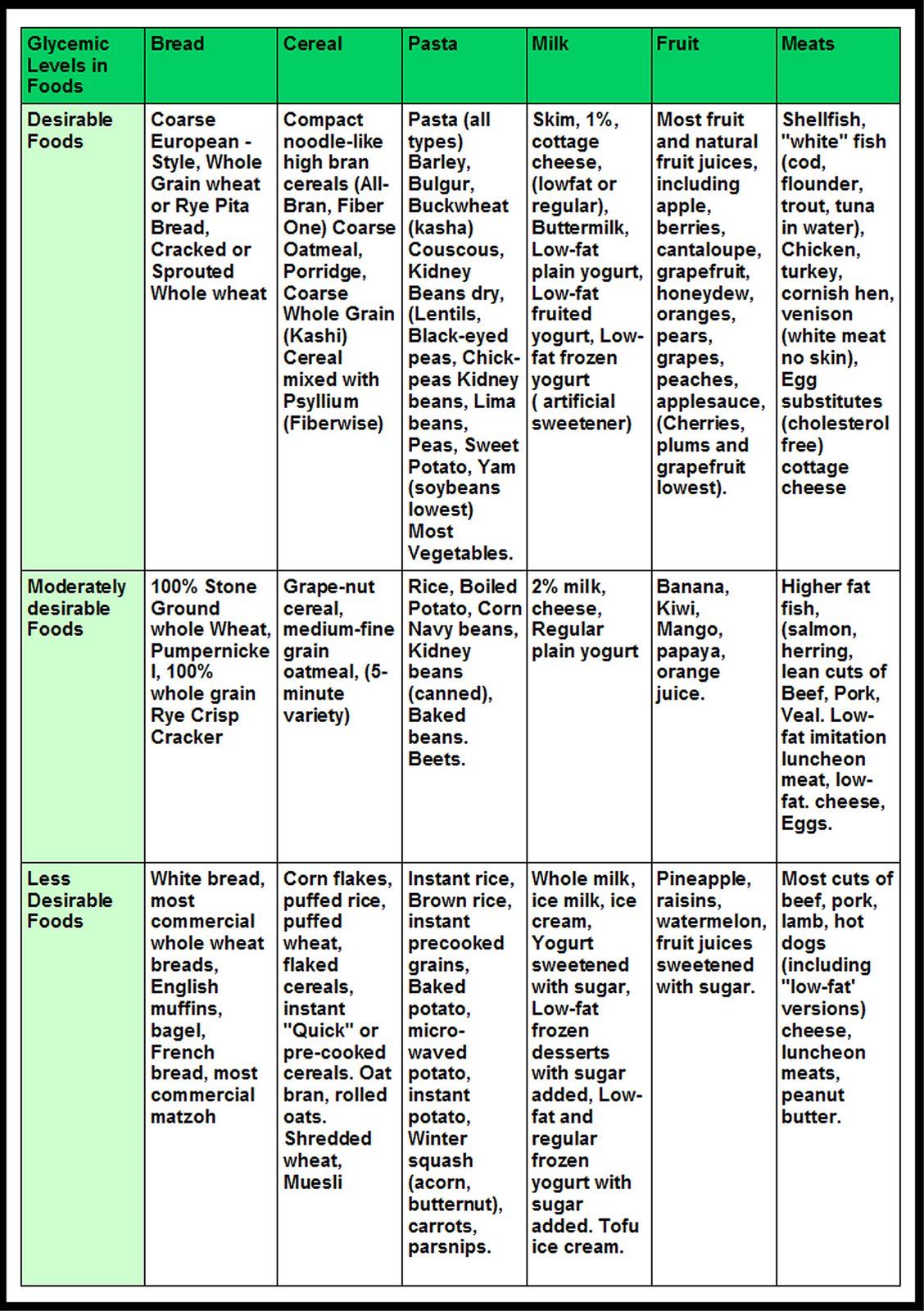 That’s what the glycemic load tells you. It’s a number you may see along with the glycemic index in lists. Think of it as the glycemic index for a specific amount of that food.
That’s what the glycemic load tells you. It’s a number you may see along with the glycemic index in lists. Think of it as the glycemic index for a specific amount of that food.
Glycemic load helps you account for both the quantity and the quality of your carbs at the same time. Less than 10 is low; more than 20 is high.
For a diet with a lower glycemic load, eat:
- More whole grains, nuts, legumes, fruits, vegetables without starch, and other foods with a low glycemic index
- Fewer foods with a high glycemic index, like potatoes, white rice, and white bread
- Less of sugary foods, including candy, cookies, cakes, and sweet drinks
You can still eat foods with a high glycemic index. Just enjoy them in smaller portions, and offset them with nutritious, low-glycemic index foods when you do.
Glycaemic Index Tables: Check the GI of Popular Foods
Share
What is Glycaemic Index?
Glycaemic Index (GI) is a measure of the effect an individual food or drink has on blood sugar levels after it is consumed.
- Foods that are digested slowly and release glucose into the bloodstream gradually have a low GI value
- Foods that are digested quickly and release glucose into the bloodstream rapidly have a high GI value
The GI Index is a Scale from 1-100
Glucose has the highest score of all foods at a GI of 100. All other foods are measured against this refence point.
- Low GI Foods have a glycaemic index of 55 or lower
- Medium GI Foods have a glycaemic index of 56-69
- High GI Foods have a glycaemic index of 70 or more
Foods only appear on the GI index if they contain carbohydrates. This explains why you won’t find foods like meat, chicken, fish, eggs and cheese in GI lists. However, you may find some processed foods like sausages or chicken nuggets in a GI list because they contain carbs.
Glycaemic Load
Glycemic Load (GL) is based on a food’s glycaemic index and the carbohydrate content of a 100g serving of the food.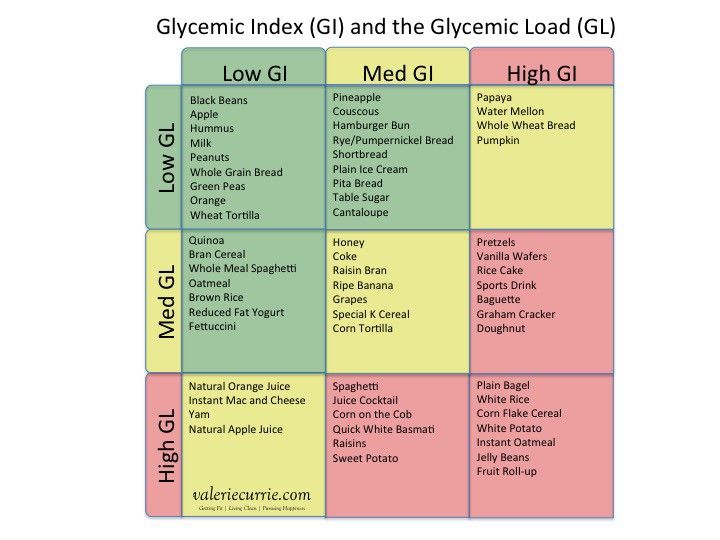 Because GL takes account of the amount of carbs in a food it gives a more accurate idea of the food’s effect on blood sugar.
Because GL takes account of the amount of carbs in a food it gives a more accurate idea of the food’s effect on blood sugar.
Why Are GI and GL Important?
Low GI (and GL) foods are better for us because they don’t cause a rapid rise and fall in blood sugar levels, known as a sugar spike.
Sugar spikes can cause us to over eat because the fast fall in blood sugar can leave us feeling hungry.
Eating low GI foods help to keep us ‘fuller for longer’. Especially important for those who want to lose weight.
Combinations of Foods
We mostly eat foods in combination, adding proteins like meat, fish and eggs, and fats, to our meals. This mitigates the effect of higher GI foods somewhat, and slows down the release of sugars into the blood.
The table at the bottom of this list will give you an idea of the effect of combining different foods. You’ll also find plenty of low GI meal ideas in our low GI diet plan.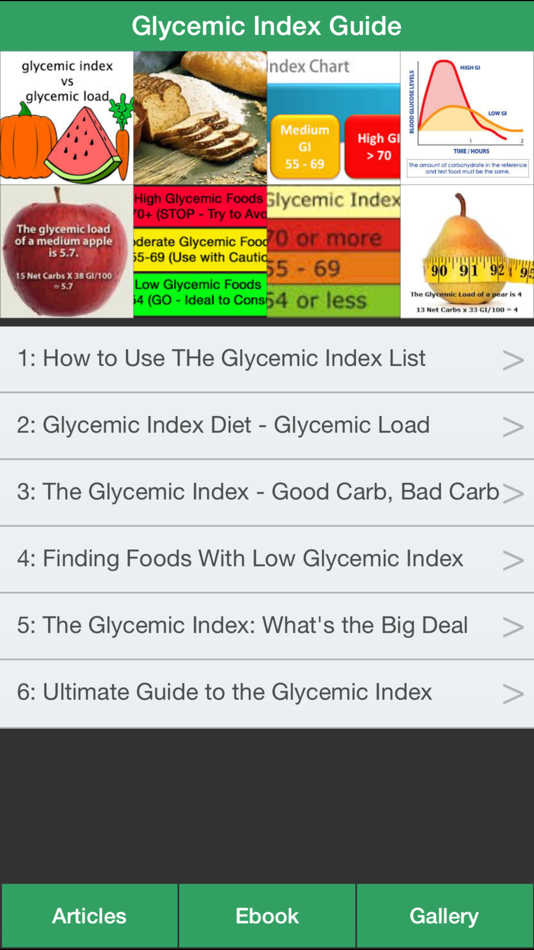
Glycaemic Index Food Lists
We’ve organised our tables into different food types so it’s easier to make comparisons between similar foods. Each table is split into 3 charts with low Gi foods at the top.
Gycaemic Index (GI) and Glycaemic Load (GL) is given for each food.
Table 1 – Bread
Low GI Bread
| Bread Type | GI | GL |
|---|---|---|
| Tortilla Wraps | 30 | 16 |
| vogel’s sunflower and barley brown bread | 40 | 16 |
| Chapatis (made with fat) | 50 | 24 |
| Sourdough Bread | 54 | 27 |
Low Carb Breads
GI values for ‘low carb’ breads are not currently available on recognised glycaemic index lists. But it’s safe to assume that these products will have a lower GI than their normal carb counterparts.
But it’s safe to assume that these products will have a lower GI than their normal carb counterparts.
These types of bread are increasingly available in supermarkets such as Tesco, Sainsbury’s, Waitrose and Lidl. Livlife Seriously Seeded, Hovis Lower Carb Deliciously Seeded and Hi-Lo Seeded Wholemeal are all available in the UK.
Medium GI Bread
| Bread Type | GI | GL |
|---|---|---|
| Granary bread | 62 | 29 |
| Naan bread | 63 | 32 |
| Wholemeal pitta bread | 63 | 25 |
| Ryvita crispbread | 64 | 37 |
| Croissant | 67 | 29 |
| White pitta bread | 67 | 37 |
| Crumpets (toasted) | 69 | 31 |
High GI Bread
| Bread Type | GI | GL |
|---|---|---|
| Rye bread | 70 | 32 |
| Soda bread | 70 | 38 |
| White bread (average) | 72 | 35 |
| Ciabatta | 72 | 37 |
| Bagels (plain) | 72 | 42 |
| Breadsticks | 72 | 52 |
| Brown bread (average) | 73 | 31 |
| Wholemeal bread (average) | 73 | 31 |
| Soya & linseed bread (Burgen) | 74 | 22 |
| Seeded Batch Loaf (Warburtons) | 80 | 32 |
| Crackerbread | 85 | 65 |
| French stick, white | 95 | 53 |
Table 2 – Other Carbs
The GI of other carbohydrate foods including potatoes, rice, pasta and grains.
Low GI Carbs
| Carb Type | GI | GL |
|---|---|---|
| Wholemeal Spaghetti, boiled | 37 | 9 |
| Basmati rice, cooked (Tesco 250g pack) | 43 | 12 |
| Spaghetti, white, boiled | 44 | 10 |
| Macaroni. boiled | 45 | 8 |
| Pasta, fresh, cooked | 45 | 14 |
| Wholemeal pastry. cooked | 45 | 20 |
| Ebly (bulgur wheat) | 46 | 32 |
| Noodles, plain, boiled | 47 | 6 |
| White rice, easy cook, boiled | 49 | 15 |
| Brown rice. boiled | 55 | 18 |
Medium GI Carbs
| Carb Type | GI | GL |
|---|---|---|
| Noodles, egg (boiled) | 63 | 8 |
| New potatoes (boiled) | 63 | 8 |
| Dumplings | 63 | 15 |
| Egg fried rice (takeaway) | 63 | 21 |
| Pilau rice | 63 | 16 |
| Long Grain rice, polished, boiled | 64 | 19 |
| Couscous | 65 | 33 |
| Yorkshire pudding | 67 | 16 |
| Pancakes, savoury, made with whole milk | 67 | 16 |
| Pancakes, sweet, made with whole milk | 67 | 23 |
| Risotto, Plain | 69 | 24 |
High GI Carbs
| Carb Type | GI | GL |
|---|---|---|
| Cornflour | 70 | 64 |
| Soya flour (full fat) | 70 | 16 |
| Wholemeal flour (wheat) | 70 | 45 |
| White flour (wheat) | 70 | 54 |
Oatmeal.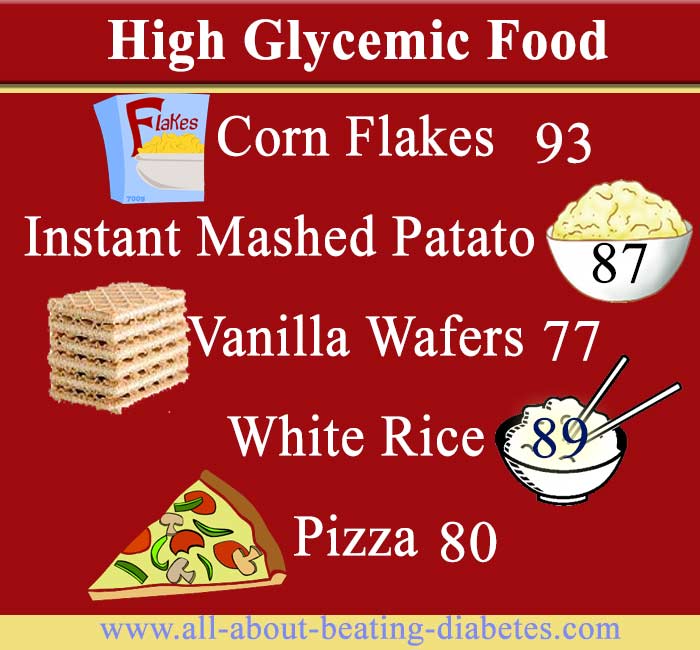 raw raw | 70 | 51 |
| Bran (wheat) | 70 | 19 |
| Rye flour, whole | 70 | 53 |
| Oven Chips, frozen (baked) | 75 | 22 |
| Chips, French fries, (retail) | 75 | 26 |
| Potato, old (jacket/baked) | 85 | 27 |
| Potatoes, old (boiled) | 85 | 14 |
| Potato, old, mashed with butter | 85 | 13 |
Table 3 – Fruits and Fruit Juices
Low GI Fruits
| Fruit Type | GI | GL |
|---|---|---|
| Cherries | 22 | 3 |
| Grapefruit | 25 | 2 |
| Apricots, dried | 32 | 14 |
| Innocent smoothie (average) | 33 | 4 |
| Pears | 38 | 4 |
| Apples | 38 | 4 |
| Tomato juice | 38 | 1 |
| Plums | 39 | 3 |
| Strawberries | 40 | 2 |
| Apple juice (unsweetened) | 40 | 4 |
| Dried mixed fruit | 41 | 28 |
| Satsumas | 42 | 4 |
| Peaches | 42 | 3 |
| Oranges | 42 | 4 |
Tomatoes. raw raw | 45 | 1 |
| Raspberries. raw | 45 | 2 |
| Avocado | 45 | 1 |
| Grapes | 46 | 7 |
| Mangoes | 51 | 8 |
| Banana | 52 | 10 |
| Orange juice (unsweetened) | 52 | 5 |
| Kiwi fruit | 53 | 6 |
Medium GI Fruits
| Fruit Type | GI | GL |
|---|---|---|
| Apricots | 57 | 4 |
| Sultanas | 58 | 40 |
| Pineapple | 59 | 7 |
| Cranberry juice | 59 | 8 |
| Figs | 61 | 6 |
| Dates, dried | 61 | 41 |
| Raisins | 64 | 44 |
High GI Fruits
| Fruit Type | GI | GL |
|---|---|---|
Blackcurrants.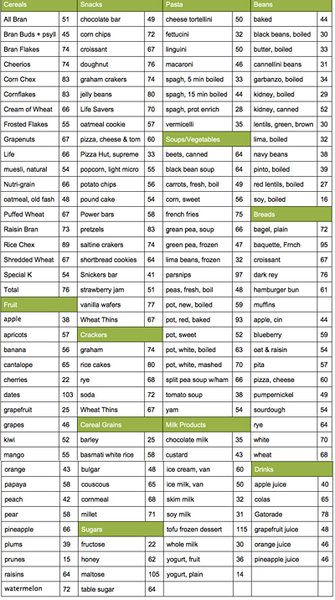 raw raw | 70 | 5 |
| Cranberries | 70 | 2 |
| Melon (all types, average) | 72 | 4 |
| Watermelon | 72 | 4 |
| Lychees | 79 | 11 |
Table 4 – Vegetables and Vegetable Juices
Low GI Vegetables
| Vegetable Type | GI | GL |
|---|---|---|
| Processed peas, canned (drained and heated) | 39 | 7 |
| Mushy peas, canned (heated) | 39 | 5 |
| Runner beans, boiled | 45 | 1 |
| Green salad | 45 | 1 |
| Onions (raw) | 45 | 4 |
| Celery (raw) | 45 | 0 |
| Broccoli, green (boiled) | 45 | 0 |
| Brussels sprouts (boiled) | 45 | 2 |
| Cauliflower (boiled) | 45 | 1 |
| Tomatoes, tinned (whole contents) | 45 | 1 |
| Mushrooms (raw) | 45 | 0 |
| Mixed vegetables, frozen (boiled) | 45 | 3 |
Curly kale.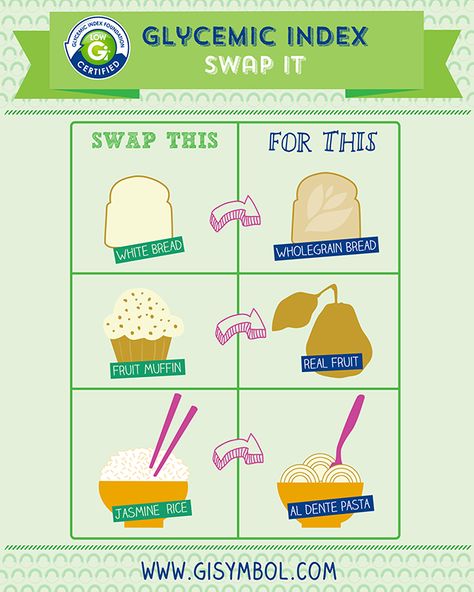 boiled in salted water boiled in salted water | 45 | 0 |
| Courgette (boiled) | 45 | 1 |
| Asparagus (boiled) | 45 | 1 |
| Red peppers, capsicum | 45 | 3 |
| Green peppers, capsicum | 45 | 1 |
| Bamboo shoots, canned | 45 | 2 |
| Butternut squash (baked) | 45 | 3 |
| Spinach | 45 | 1 |
| Carrots (boiled) | 47 | 2 |
| Peas, frozen (boiled) | 48 | 5 |
| Sweetcorn, canned | 55 | 9 |
Medium GI Vegetables
| Vegetable Type | GI | GL |
|---|---|---|
| Sweet potato (baked) | 61 | 17 |
| Turnip (boiled) | 63 | 1 |
| Beetroot, pickled | 64 | 4 |
High GI Vegetables
| Vegetable Type | GI | GL |
|---|---|---|
| Swede (boiled) | 72 | 2 |
| Pumpkin (boiled) | 75 | 2 |
| Broad Beans (boiled) | 79 | 4 |
| Parsnip (boiled) | 97 | 13 |
Table 5 – Breakfast Cereals
Popular breakfast cereal brands.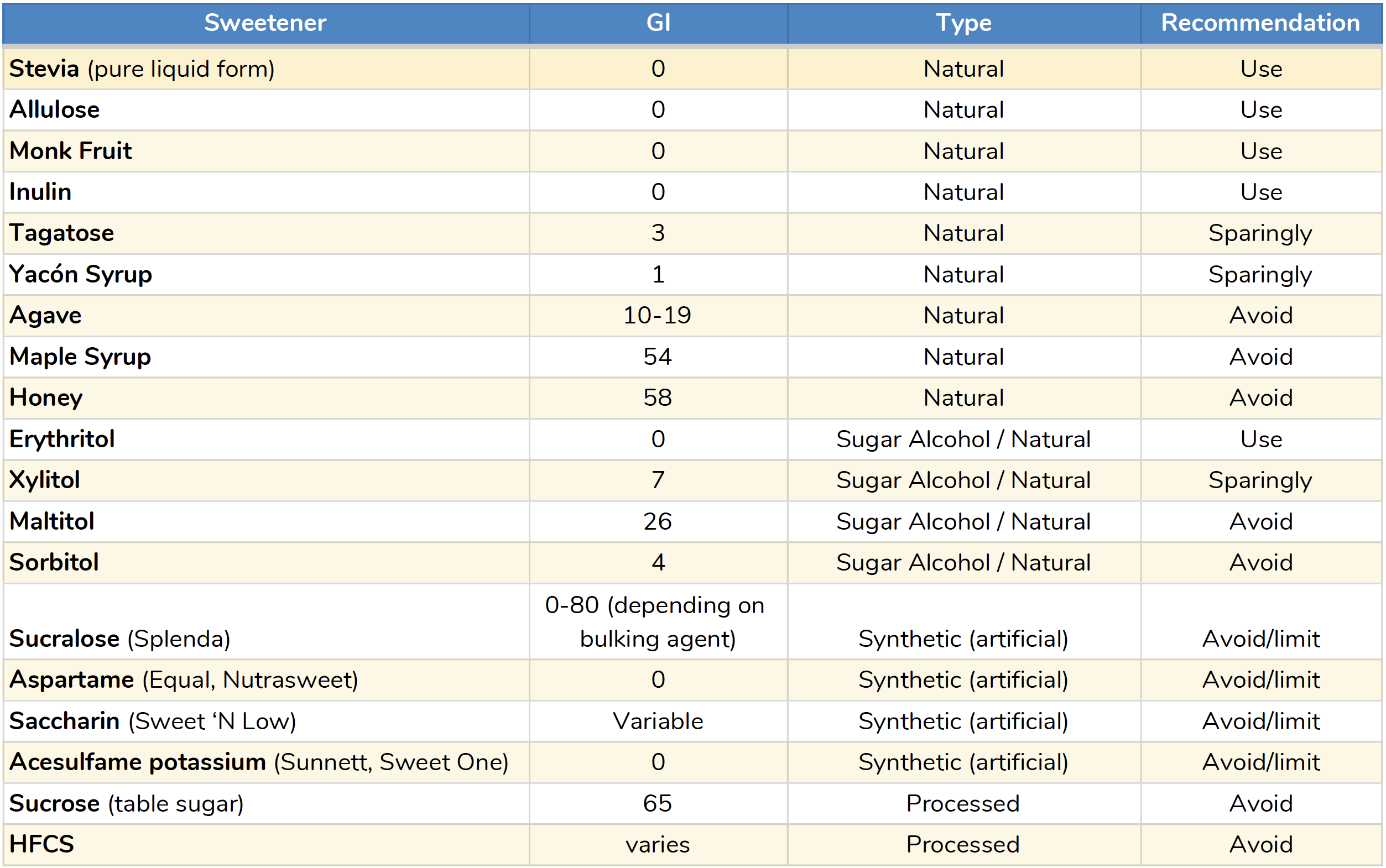
Low GI Cereals
| Cereal Type | GI | GL |
|---|---|---|
| Kelloggs All Bran | 45 | 22 |
| Porridge (made with water) | 51 | 4 |
| Porridge (made with milk) | 51 | 7 |
| Oatso Simple syrup swirl porridge (Quaker) | 51 | 36 |
| Ready Brek | 51 | 33 |
| Alpen muesli original (Weetabix) | 55 | 36 |
| Oatibix | 55 | 35 |
Medium GI Cereals
| Cereal Type | GI | GL |
|---|---|---|
| Quaker Porridge Oats | 58 | 20 |
| Just Right (Kelloggs) | 60 | 46 |
| Kelloggs Fruit and fibre | 68 | 47 |
| Special K | 69 | 56 |
High GI Cereals
| Cereal Type | GI | GL |
|---|---|---|
| Sugar Puffs | 70 | 65 |
| Nutri-Grain | 70 | 50 |
| Shreddies | 70 | 54 |
| Weetos | 70 | 56 |
| Crunchy Nut Corn Flakes | 72 | 66 |
| Cheerios | 74 | 60 |
| Bran Flakes | 74 | 53 |
| Shredded Wheat | 75 | 54 |
| Weetabix | 75 | 57 |
| Coco Pops | 77 | 70 |
| Rice Krispies | 81 | 75 |
| Corn Flakes | 93 | 83 |
Table 6 – Desserts, Cakes and Biscuits
Low GI Desserts, Cakes and Biscuits
| Dessert Type | GI | GL |
|---|---|---|
| Fruit sorbet | 34 | 8 |
| Custard tart (individual) | 34 | 11 |
| Chocolate fudge cake | 38 | 21 |
| Swiss rolls, chocolate (individual) | 38 | 22 |
| Mr Kipling Angel Slices | 42 | 25 |
| Sponge cake, jam filled | 42 | 27 |
| Lemon tart | 45 | 7 |
| Trifle, fruit | 45 | 9 |
| Chocolate mousse | 45 | 9 |
| Tiramisu | 45 | 15 |
| Suet pudding | 45 | 18 |
| Sponge cake with dairy cream and jam | 45 | 20 |
| Mince pies (individual) | 45 | 27 |
| Sponge pudding with jam or treacle | 46 | 22 |
| Go Ahead Cake Bars (McVities) | 46 | 29 |
| Chocolate chip muffins (Tesco) | 53 | 25 |
| Bourbon biscuits | 55 | 39 |
| Rich Tea biscuits | 55 | 41 |
Medium GI Desserts, Cakes and Biscuits
| Dessert Type | GI | GL |
|---|---|---|
| Oatcakes | 57 | 36 |
| Blueberry Muffin | 59 | 23 |
| Hobnobs | 59 | 38 |
| Digestive biscuits | 59 | 40 |
| Ice cream, non-dairy, vanilla | 61 | 11 |
| Cheesecake | 63 | 16 |
| Fruit crumble | 63 | 23 |
| Carrot cake (with topping) | 63 | 23 |
| Chocolate Eclairs, fresh | 63 | 24 |
| Profiteroles | 63 | 24 |
| Lemon meringue pie | 63 | 27 |
| Pandoro Italian cake | 63 | 30 |
| Danish pastries | 63 | 32 |
| Christmas pudding | 63 | 35 |
| Fruit pie (individual) | 63 | 36 |
| Flapjacks | 63 | 39 |
| Jam tarts | 63 | 39 |
| Shortbread | 63 | 40 |
| Chocolate fingers (Cadburys) | 63 | 40 |
| Chocolate chip cookies | 63 | 41 |
| Chocolate digestive biscuits | 63 | 42 |
| Fruit cake, rich, iced | 63 | 42 |
| Weight Watchers choc chip cookie | 63 | 42 |
| Oreo biscuits | 63 | 44 |
| Jaffa cakes | 63 | 48 |
| Gingernut biscuits | 63 | 50 |
| Amaretti biscuits (Doria) | 63 | 53 |
| Meringue | 68 | 65 |
High GI Desserts, Cakes and Biscuits
| Dessert Type | GI | GL |
|---|---|---|
| Banoffee pie | 70 | 26 |
| Snowballs (Tunnock’s) | 70 | 33 |
| Jammie Dodgers | 70 | 48 |
| Hot cross buns | 72 | 42 |
| Doughnut, jam | 76 | 37 |
Scones. plain plain | 92 | 49 |
Table 7 – Chocolate and Sweets
Low GI Chocolate and Sweets
| Sweet Type | GI | GL |
|---|---|---|
| Whole Nut Chocolate bar (Cadbury’s) | 43 | 21 |
| Ripple (Galaxy) | 43 | 22 |
| Organic dark chocolate 70% cocoa (Green&Blacks) | 43 | 22 |
| Wispa (Cadbury) | 43 | 23 |
| Mint Aero (Nestle) | 43 | 26 |
| Minstrels | 43 | 29 |
| Twix | 44 | 30 |
| Twister ice lolly | 45 | 9 |
| Fruit and nut bar (Cadbury’s) | 45 | 25 |
| Lion Bar (Nestle) | 45 | 29 |
| Mint crisp chocolates | 45 | 30 |
| Quality Street chocolates | 45 | 30 |
| After Eights | 45 | 33 |
| Milky Way | 45 | 34 |
| Alpen Bar (Strawberry & Yoghurt) | 51 | 37 |
| Snickers | 55 | 31 |
Medium GI Chocolate and Sweets
| Sweet Type | GI | GL |
|---|---|---|
| Tracker bar | 57 | 33 |
| Kellogg’s Fruit & Fibre Bar | 57 | 41 |
| Bounty bar | 63 | 37 |
| Maltesers (Mars) | 63 | 39 |
| Kit Kat | 63 | 40 |
| Double Decker | 63 | 41 |
| Chocolate covered caramels | 63 | 42 |
| Rolo | 63 | 42 |
| Nutrigrain bar, chocolate (Kelloggs) | 63 | 42 |
| Curly Wurly | 63 | 44 |
| Creme egg | 63 | 45 |
| Cadbury’s Fudge | 63 | 45 |
| Crunchie (Cadbury’s) | 63 | 45 |
| Mars bar | 65 | 50 |
| Foam sweets | 68 | 54 |
| Boiled sweets | 68 | 59 |
| Peppermint creams | 68 | 67 |
High GI Chocolate and Sweets
| Sweet Type | GI | GL |
|---|---|---|
| Slim Fast yogurt muesli meal bar | 70 | 32 |
| Nutty crunch bar (Jordans) | 70 | 40 |
| Raisin & Hazelnut Fruisli Bar (Jordans) | 70 | 43 |
| Nature Valley granola bar | 70 | 46 |
| Toffees, mixed | 70 | 47 |
| Coco-pops cereal & milk bar (Kelloggs) | 70 | 51 |
| Nestle Fitnesse Apricot Bar | 70 | 51 |
| Kelloggs Special K Bar | 70 | 53 |
| Liquorice allsorts | 70 | 54 |
| Fudge | 70 | 56 |
| Marshmallows | 70 | 58 |
| Wine gums | 78 | 60 |
| Jelly Babies | 78 | 61 |
| Starmix sweets (Haribo) | 78 | 62 |
| Fruit pastilles | 78 | 66 |
| Chew sweets | 78 | 68 |
| Skittles | 78 | 72 |
List of Low-Glycemic Carbohydrate Foods
A glass bowl with fresh leafy greens.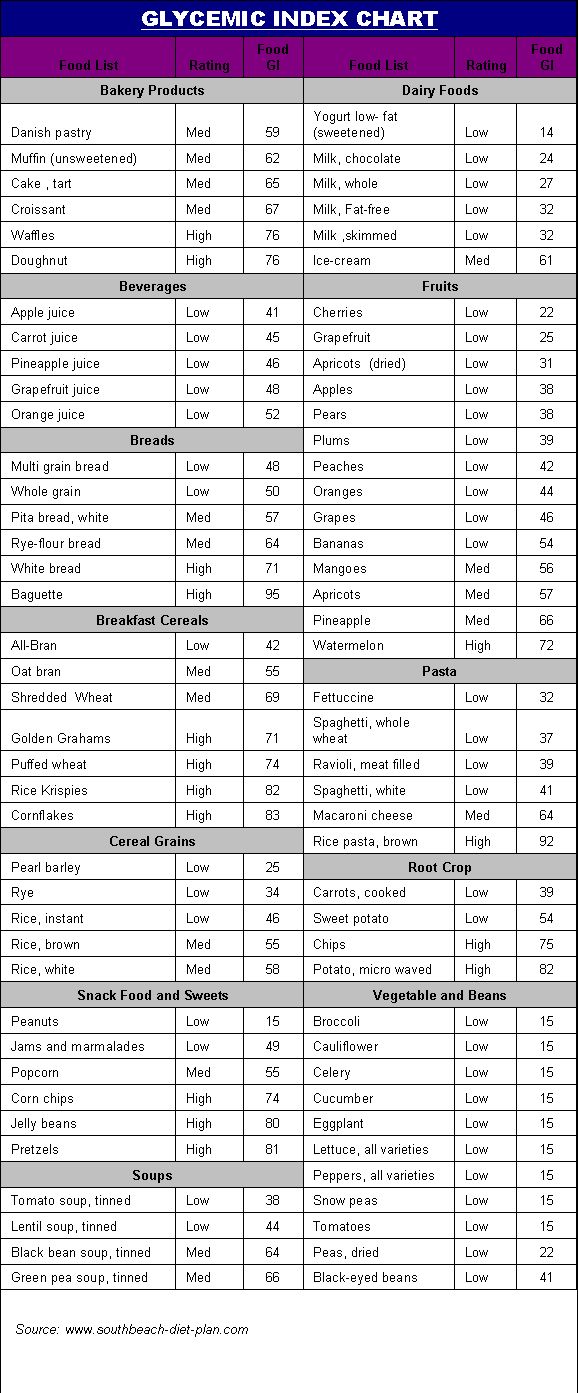
Image Credit: Hue/amanaimagesRF/amana images/Getty Images
The glycemic index is a tool that ranks carbohydrate-containing foods by how quickly they raise your blood sugar. Although originally devised to help diabetics choose the best foods for healthy blood-sugar levels, the glycemic index can also guide carb-conscious dieters in choosing so-called “slow” carbs – those foods that will help you avoid sudden drops in energy that may leave you craving sugary, nutrient-poor foods.
Glycemic Index Basics
Foods deemed low-glycemic foods, or low GI, rate a score of 55 or lower on the scale. Those foods with a GI number of 56 to 69 are considered medium-glycemic foods, while those 70 and over are deemed high-glycemic foods. Low-glycemic foods tend to be higher in fiber and lower in calories – and include more whole foods than processed – and can help keep you satisfied for a longer period of time. Protein foods like meat and fish contain no carbs, so they don’t have a GI rating.
Low-Glycemic Vegetables
All non-starchy vegetables are low on the glycemic index. Among these are asparagus, bell peppers, bok choy, broccoli, Brussels sprouts, cabbage, cauliflower, celery, cucumber, eggplant, green beans, kale and other greens, as well as lettuce, mushrooms, spinach, tomatoes and zucchini, and each have a GI rating of 20 or less; the serving size is 1 cup, cooked or raw.
Butternut squash, carrots, corn on the cob, green peas, parsnips, sweet potatoes and yams also have a low GI rank, but you’ll need to eat a smaller serving. Stick with a half-cup serving of these or have a medium potato or yam.
Low-Glycemic Fruits
Many fresh fruits make the low GI cut, especially apples, grapefruit, oranges, peaches, pears, plums, mango, and kiwi. Serving sizes vary, but have one medium-sized fruit to be on the safe side. For grapes, portion out a cup, and for cherries, serve yourself 20 cherries. Some dried fruits are also considered low-glycemic, including apricots, dates and prunes; have five or six of these to make up your serving.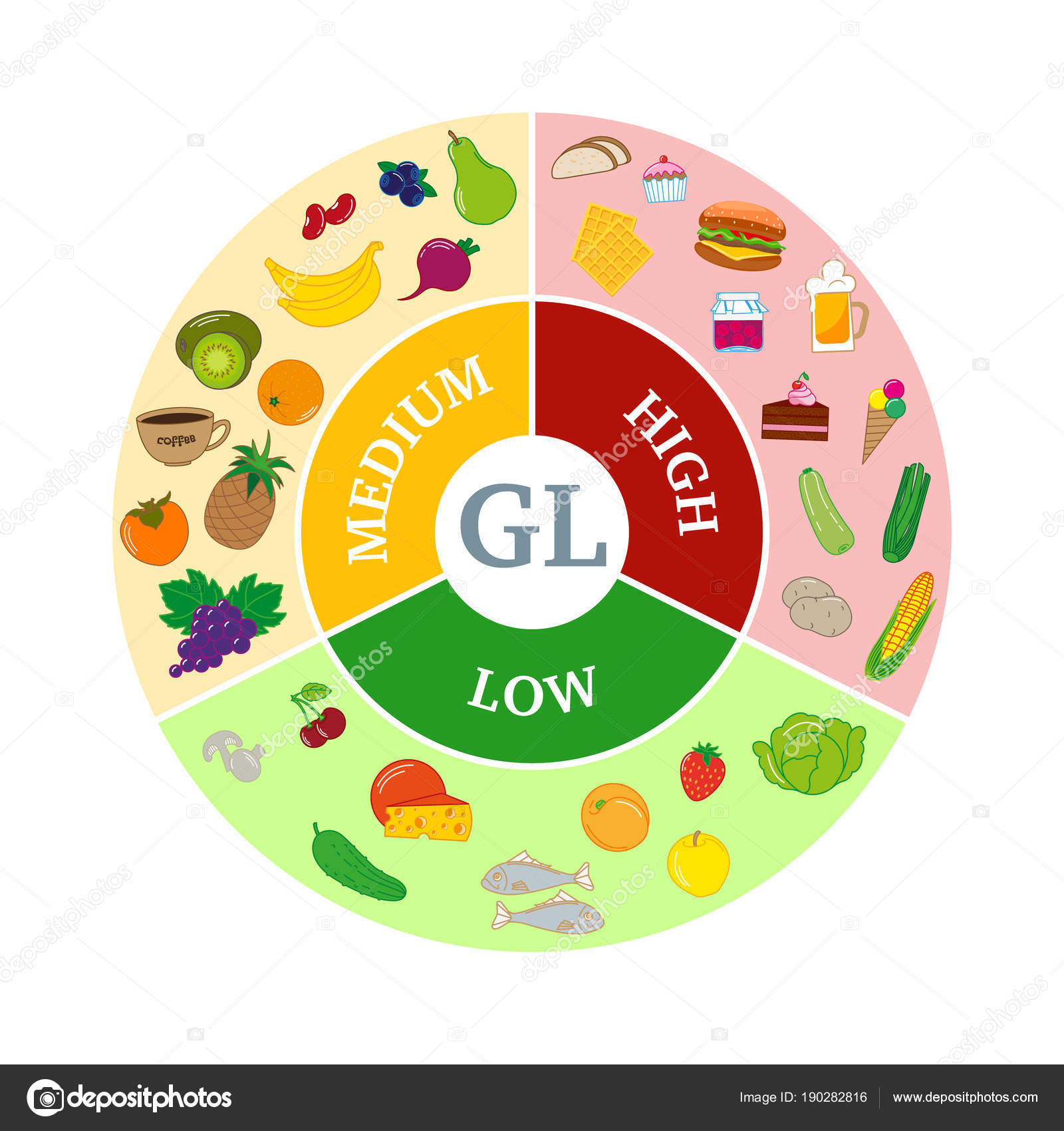 Unsweetened apple, orange, tomato and pineapple juice are low on the scale, too, although they’re not as low as the whole fruits they come from. A serving of juice is a cup.
Unsweetened apple, orange, tomato and pineapple juice are low on the scale, too, although they’re not as low as the whole fruits they come from. A serving of juice is a cup.
Low-Glycemic Grains
Grains and the food products made from them tend to be higher on the GI scale, but some do fall at the lower end. A cup of cooked barley, brown rice, buckwheat, bulgur or quinoa is low glycemic, as are corn and wheat tortillas. Unsweetened multigrain, oat bran, coarse barley, sourdough and stone-ground whole wheat breads are low GI, but stick to a single slice. Among breakfast cereals, go with a cup of low GI oatmeal. In the pasta category, opt for varieties like vermicelli, fettuccine, macaroni or spaghetti, but keep your portion size to one cooked cup.
Low-Glycemic Legumes and Nuts
Most beans will be your low-glycemic friends. Select a half cup of baked beans, black-eyed peas, black beans, chickpeas, navy beans, kidney beans, lentils, and soybeans; they are all 40 or under on the GI scale. A cup of soy milk is also low GI. For nuts, choose an ounce of cashews or peanuts.
A cup of soy milk is also low GI. For nuts, choose an ounce of cashews or peanuts.
Low-Glycemic Dairy
When you’re looking for low-glycemic dairy foods, opt for a cup of plain, low-fat yogurt. A cup of milk falls into the low GI category, too. Some kinds of premium, full-fat ice cream are low-GI, but the more sugar or sugary add-ins ice cream contains, the more likely its GI is higher. Ice cream isn’t a healthful food anyway, so is best eaten as an occasional treat.
Tips for Low-Glycemic Eating
You are better off choosing whole foods more often than processed food products, if you want to follow a low-glycemic diet. Whole foods are those in the least-refined state possible, such as fruits and vegetables, lean protein, nuts, legumes and seeds. Limit “white” foods such as white rice, white potatoes and white pasta to small, occasional portions, and swap them for brown rice, sweet potatoes and whole-grain pasta more often. Eat a lean protein such as chicken, fish or beans at each meal, and incorporate healthy fats like olive oil, nuts and avocados into your diet.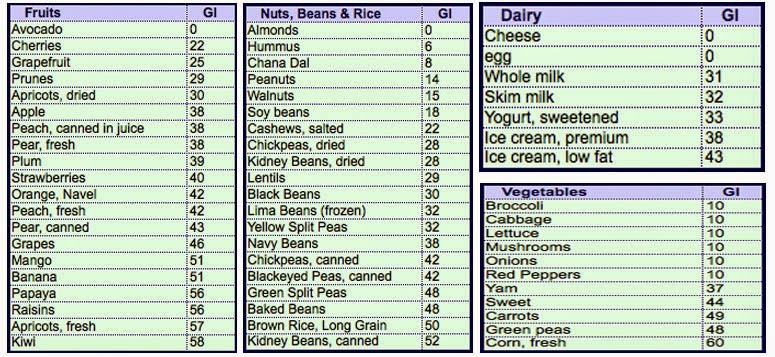 Remember to watch your portions, too.
Remember to watch your portions, too.
Talk to your doctor about the glycemic index, especially if you are diabetic or pre-diabetic.
Which Fruits Have The Lowest Glycemic Load?
A healthy diet should almost always include some fruit, and this is particularly true if you’re suffering from adrenal fatigue. The difficulty arises in choosing the best and most nutritious fruits to eat. Most nutritionists will recommend sticking to low carb fruits where possible as they usually tend to be low in sugar.
This makes a lot of sense if you’re trying to maintain a balanced diet and healthy lifestyle. It’s even more important if you’re following a low-sugar diet like Atkins, keto, or the anti candida diet. But how do we measure the sugars in a particular fruit, and which fruits have the lowest amounts?
How To Measure Sugar In Fruits
We don’t actually take a piece of fruit, examine it in the lab, and quantify the grams of sugar in each portion. What actually happens is that we measure the effect that that fruit has on our blood sugar (also called blood glucose) levels.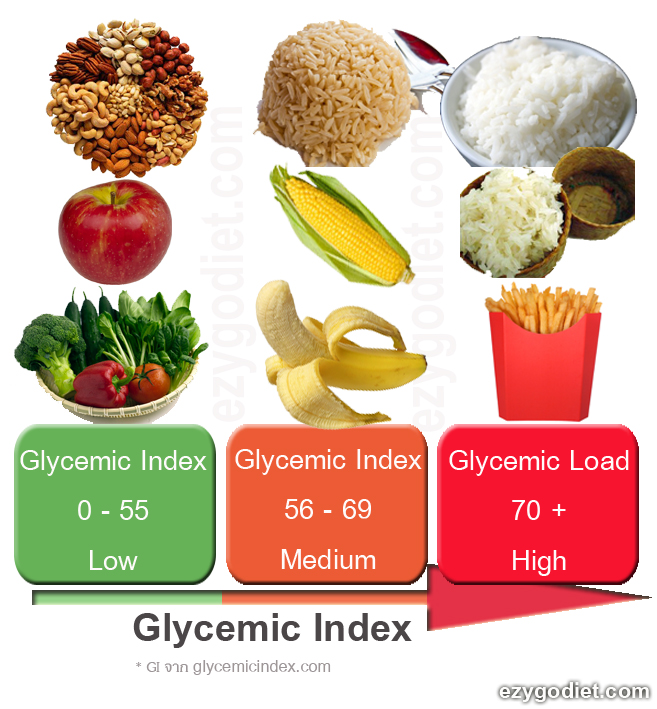 There are two ways to represent this – Glycemic Index (GI) and Glycemic Load (GL). First I’ll explain how these measures work, and at the end of article I have included two tables with the numbers for various fruits.
There are two ways to represent this – Glycemic Index (GI) and Glycemic Load (GL). First I’ll explain how these measures work, and at the end of article I have included two tables with the numbers for various fruits.
What Is Glycemic Index?
The Glycemic Index of a food is a numerical unit describing how far eating a food will raise one’s blood sugar level; effectively, it represents how ‘sugary’ the food is. The Glycemic Index uses a scale from 0 to 100, where 100 is pure glucose. A food which has a high GI will cause a large increase in blood sugar, while a food with a lower GI will not have much impact at all.
As a rough basis, mid-50s to mid-60s in a food’s GI is considered average, while 70 and above is considered high. Foods with a GI of less than 55 are considered to have a low glycemic index, and thus will have smaller impact on blood sugar levels. As a general rule of thumb, dried fruits, like many processed foods, have higher GI.
Glycemic Index Vs. Glycemic Load: What’s The Difference?
The main problem with the Glycemic Index is that it does not factor in typical portion sizes.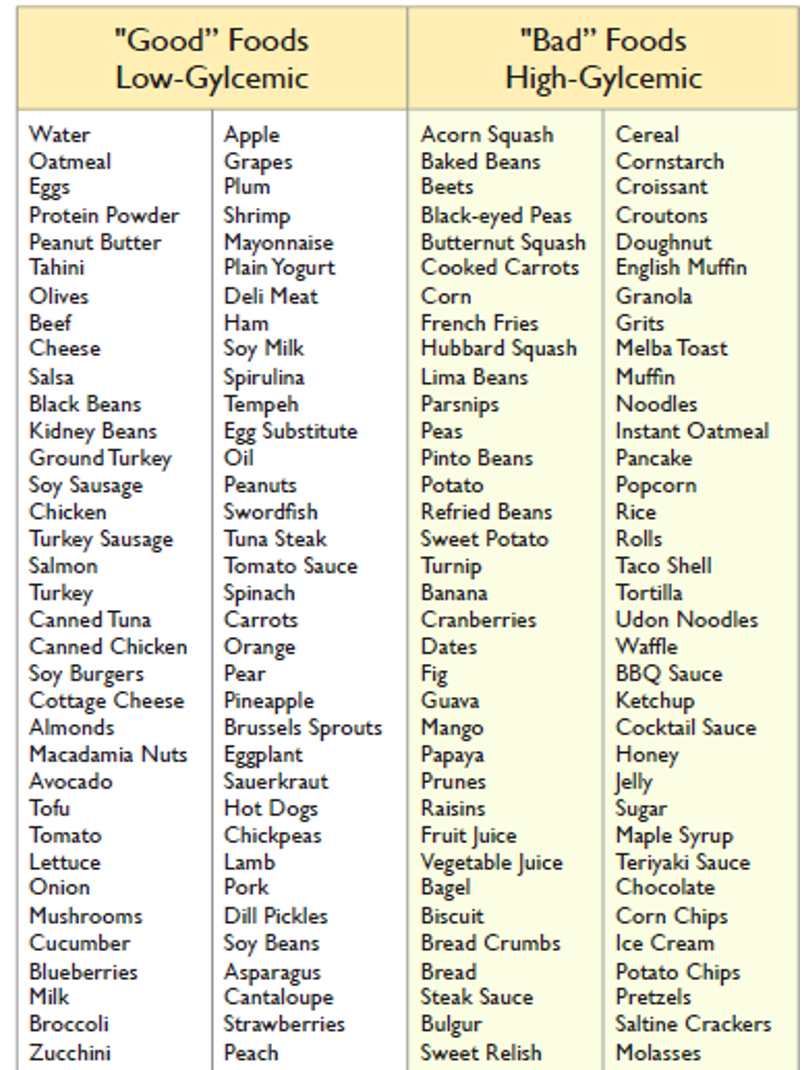 In fact, it standardizes each food to include 50 grams of carbohydrates. This leads to some peculiar distortions. For example, to obtain 50 grams of carbohydrates you would need either 2.8 ounces of a Snickers bar or 35 ounces of pumpkin. It hardly seems fair to compare the two when these portion sizes are so unrealistic!
In fact, it standardizes each food to include 50 grams of carbohydrates. This leads to some peculiar distortions. For example, to obtain 50 grams of carbohydrates you would need either 2.8 ounces of a Snickers bar or 35 ounces of pumpkin. It hardly seems fair to compare the two when these portion sizes are so unrealistic!
In 1997, researchers at Harvard University introduced the concept of Glycemic Load with the aim of solving this problem. The Glycemic Load seeks to balance the Glycemic Index by accounting for serving size. Let’s take watermelon’s glycemic index as an example. It has a high GI, as the carbohydrate will increase blood sugar levels rapidly, but it contains a relatively small amount of carbohydrates per serving, meaning that it has a low glycemic load.
A food’s Glycemic Load is calculated directly from its Glycemic Index. We simply take the food’s Glycemic Index, divide it by 100, and multiply it by the grams of carbohydrate (excluding fiber) in a typical serving size. A GL of above 20 is considered high, the 11-19 range is considered average, and below 11 is low.
A GL of above 20 is considered high, the 11-19 range is considered average, and below 11 is low.
Let’s look again at watermelon. It has a Glycemic Index of 72, which is relatively high. However, a typical serving size only has 5 grams of carbohydrate. This means we can calculate the Glycemic Load like this: 72/100*5 = 3.6. As you can see from this example, sometimes what is classified as a high glycemic fruit can still be a healthy snack that will barely affect your blood sugar.
However, watermelons are an unusual case, insofar as they have a high Glycemic Index (above 70 is considered high), yet have a low Glycemic Load (below 11 is low). This is not common, as most foods with a high GI will have a correspondingly high GL.
The Glycemic Load Of Fruits
Here are two tables containing the Glycemic Load of various fruits, taken mostly from the American Journal of Clinical Nutrition in 2002 (full version here) and the American Diabetes Association in 2008 (full version here).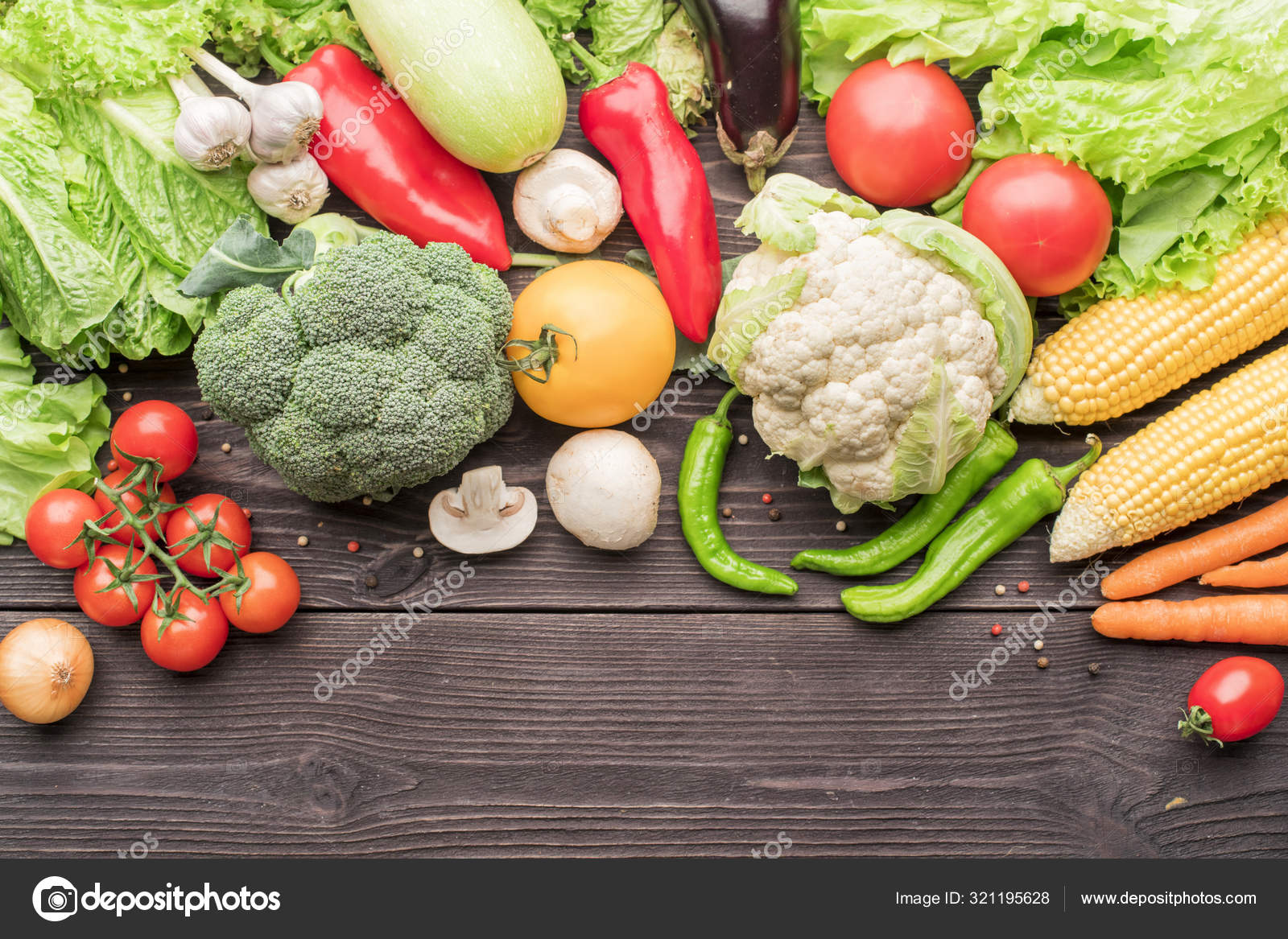 I have created one table showing the fruits ordered by Glycemic Index, and another showing them ordered by Glycemic Load.
I have created one table showing the fruits ordered by Glycemic Index, and another showing them ordered by Glycemic Load.
Glycemic Index Chart For Fruits
Remember that a GI of more than 70 is considered high, a GI of 55-70 is considered average, and a GI of below 55 is considered low.
| Fruit | Glycemic Index |
|---|---|
| Cherries | 22 |
| Apricot | 23 |
| Lime | 24 |
| Plum | 24 |
| Grapefruit | 25 |
| Lemon | 25 |
| Peach | 28 |
| Prunes | 29 |
| Nectarines | 30 |
| Dates | 36 |
| Apple | 38 |
| Pear | 38 |
| Strawberry | 41 |
| Oranges | 44 |
| Grapes | 46 |
| Kiwi | 52 |
| Blueberries | 54 |
| Banana | 55 |
| Mango | 56 |
| Figs | 60 |
| Raisins | 64 |
| Pineapple | 66 |
| Cantaloupe | 67 |
| Watermelon | 72 |
| Guava | 78 |
Glycemic Load Chart For Fruits
Remember that a GL of more than 20 is considered high, a GL of 11-19 is considered average, and a GL of below 11 is considered low.
| Fruit | Glycemic Load | Serving Size (grams) |
|---|---|---|
| Lime | 1 | 120g |
| Strawberry | 1 | 120g |
| Apricot | 3 | 120g |
| Grapefruit | 3 | 120g |
| Lemon | 3 | 120g |
| Cantaloupe | 4 | 120g |
| Guava | 4 | 120g |
| Nectarines | 4 | 120g |
| Oranges | 4 | 120g |
| Pear | 4 | 120g |
| Watermelon | 4 | 120g |
| Blueberries | 5 | 120g |
| Peach | 5 | 120g |
| Plum | 5 | 120g |
| Apple | 6 | 120g |
| Pineapple | 6 | 120g |
| Kiwi | 7 | 120g |
| Mango | 8 | 120g |
| Cherries | 9 | 120g |
| Prunes | 10 | 60g |
| Banana | 11 | 120g |
| Grapes | 11 | 120g |
| Figs | 16 | 60g |
| Dates | 18 | 60g |
| Raisins | 28 | 60g |
Glycemic Index And Diabetes
The concept of GI was initially developed to help diabetes patients. It’s important for diabetics and pre-diabetics to pay close attention to their blood glucose fluctuations and insulin levels. However, we can all benefit from paying attention to the carbohydrates we eat.
It’s important for diabetics and pre-diabetics to pay close attention to their blood glucose fluctuations and insulin levels. However, we can all benefit from paying attention to the carbohydrates we eat.
Here’s what happens to your body when you eat high glycemic foods. Through the process of digestion, carbohydrates are turned into glucose – our body’s essential fuel. Whether we eat a donut or an orange, in the end, both will be converted into glucose. What will be different, though, is how quickly this fuel enters the bloodstream.
Donuts have high GI and GL and will release a lot of glucose all at once. In response, the pancreas will secrete large amounts of insulin. This hormone helps stabilize blood glucose levels by storing the excess in your liver. Yet, if the surge in insulin is too big, too much glucose is removed and blood sugar levels plummet as a result.
This is why you will most likely feel hungry again soon after having eaten a donut. Overconsumption of processed foods may even make us feel sluggish and demotivated, while consuming certain fruits can make you feel happy.
A Low-Glycemic Diet Could Help Manage Your Weight And Energy Levels
A diet consisting of high-GI and GL foods produces large spikes and drops in blood sugar, ultimately leading to weight gain and fatigue. The opposite is also true – if you maintain more stable blood glucose levels, you will feel more energetic. Low GI and GL foods usually contain a lot of fiber that slows down digestion and supports blood sugar stability.
When we eat high-fiber foods – like many fruits – glucose is released more gradually into the bloodstream. We feel full for longer, eat less, and burn fat instead of storing it. So in the end, it makes a huge difference whether you get your carbohydrates from a donut or an orange.
This has implications for more than just your weight or looks. Studies have shown that people on high GL diets have a higher risk of diabetes and heart disease. It’s important to note that high glycemic foods are usually also highly processed, high in calories, and low in vitamins and minerals.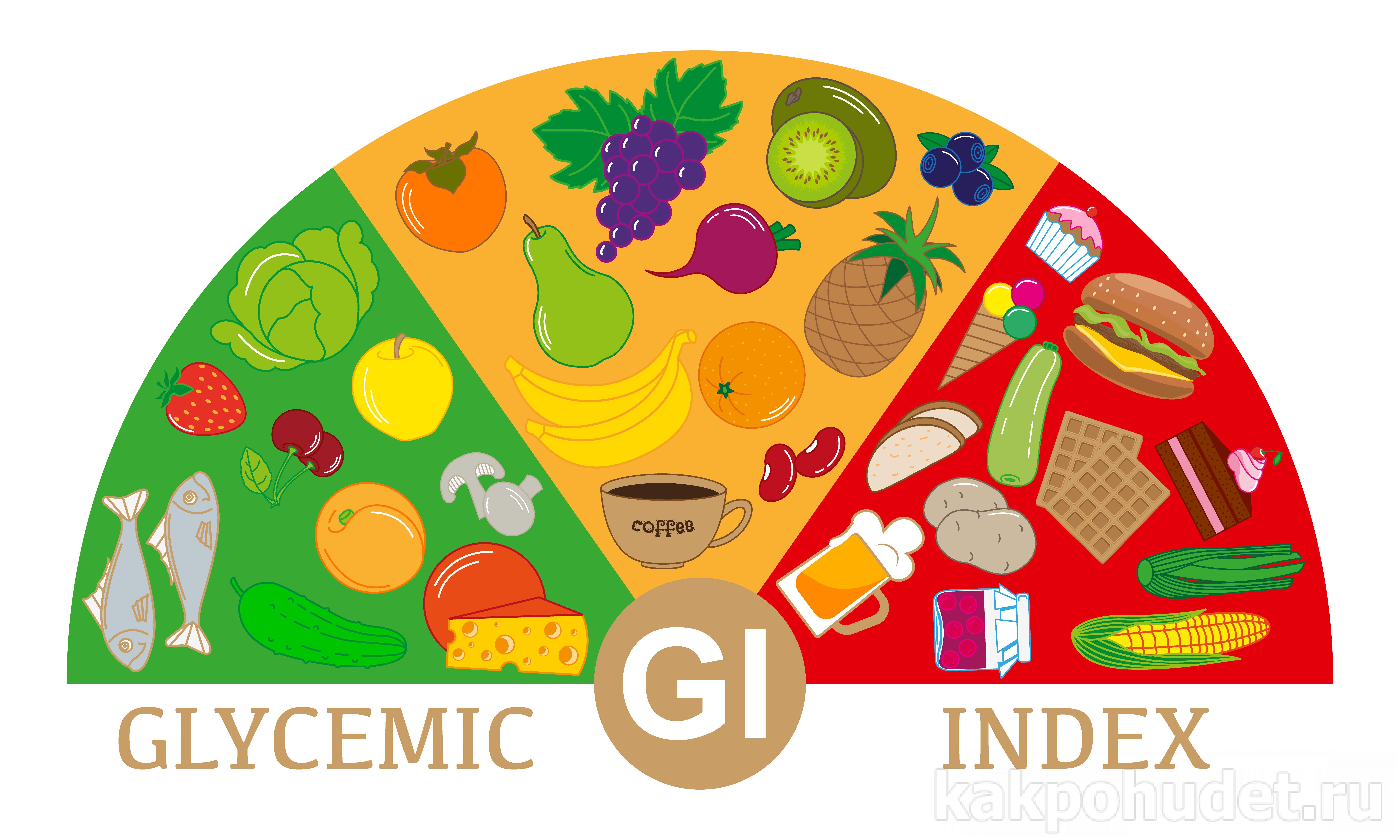 Maintaining stable blood sugars can help with energy levels, liver repair, heart health, weight, and much more.
Maintaining stable blood sugars can help with energy levels, liver repair, heart health, weight, and much more.
Should You Avoid High GI And GL Fruits?
Bear in mind that a high GI and GL does not necessarily mean that fruits are unhealthy and should be avoided. Compared to refined carbs, whole foods are a much more nutritious option. In fact, fruits are some of the healthiest carbohydrates a person can consume. They contain lots of antioxidants and vitamins, and the sugar they contain is paired with lots of fiber so is less likely to spike your blood sugar.
However, if you’re following a low-carb diet or worried about your blood sugar, you may use the above tables to select fruits that are just as rich in vitamins and minerals but low on carbs. Generally, high GI fruits have more total carbohydrates.
Create Your Own Healthy Eating Plan
Are you looking for more healthy eating tips? In The Adrenal Fatigue Solution, Dr. Wood and I lay out a healthy eating plan with lists for the foods that you should eat and avoid. I have also included lots of super-nutritious recipes that will help to boost your energy levels.
I have also included lots of super-nutritious recipes that will help to boost your energy levels.
List of Low GI Indian Veg Foods| TarlaDalal.com
Want to stay healthy and lean, then follow the Glycemic Index of foods to eat and you will get it 90% right. Foods with Low GI when eaten don’t create a surge in blood sugar levels. Thats good as this is the ideal state to burn FAT in our body. We have complied a list of Indian Foods which have low GI as there are standard questions if Indian Dals are healthy or is it okay to have Strawberries or Bhindi. Check our tables below.
What Is Glycemic Index (GI) Of Food?
The glycemic index, invented in 1981 by David Jenkins and Thomas Wolever of the University of Toronto, is a system for classifying carbohydrate-rich foods, according to how fast they raise blood-glucose levels, compared to a standard food i.e. glucose, inside the body. In simple terms, a food with a lower glycemic value raises blood glucose slowly than a food which scores higher.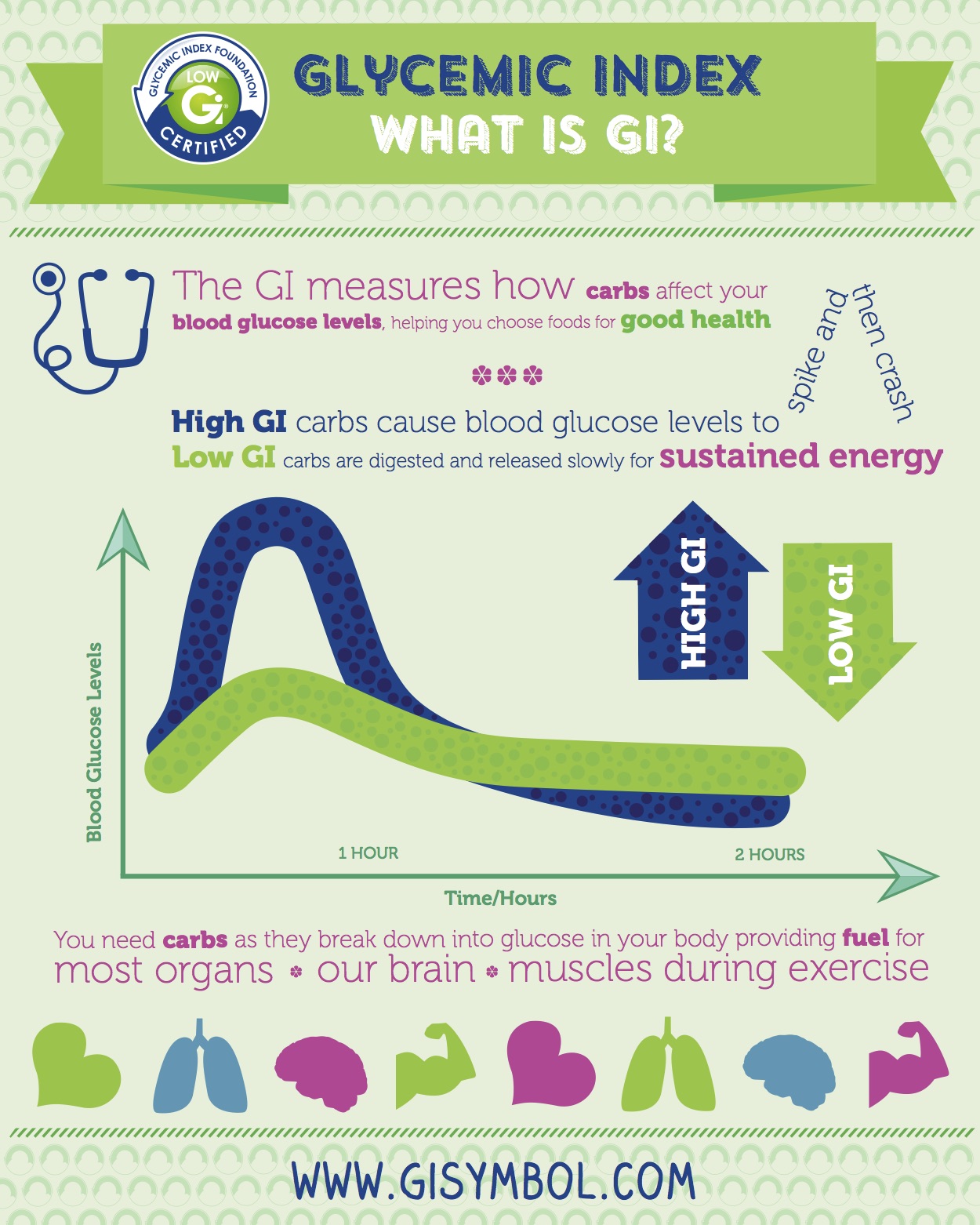
Glycemic Index Range
Zero to 55 – Low glycemic index foods (free foods / eat freely/ consume frequently).
56 to 69 – Medium glycemic index foods (foods to be restricted or consumed with low GI foods).
70 + – High glycemic index foods (preferably to be avoided).
5 Reasons to eat foods with a low Glycemic Index?
1. Increase body’s sensitivity to insulin and control your blood glucose level
2. Control your cholesterol level
3. Control your appetite
4. Lower your risk of getting heart disease
5. Lower your risk of getting type 2 diabetes
Remember that the Glycemic Index is just one part of helping a diabetic make healthy food choices. But, other factors like the form (raw or cooked) in which the food is ingested; the fat, fibre and protein content of food as well the process of digestion also has a impact in the selection of diabetic-friendly foods.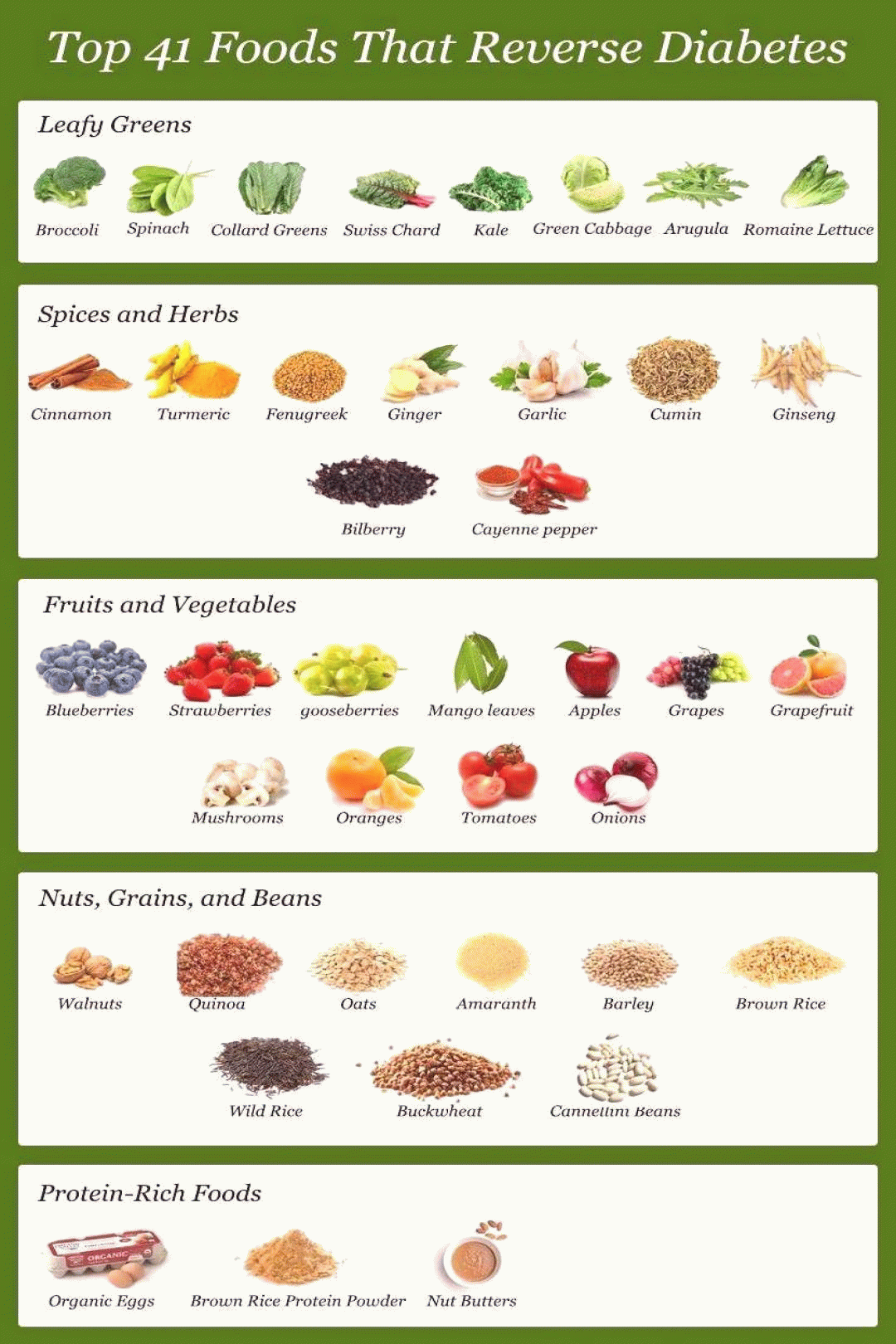 Use the chart below to help you make healthier choices.
Use the chart below to help you make healthier choices.
Low Glycemic Index Indian Foods
1. Low Glycemic Index Pulses: These include all whole beans like moong, matki, chana, chawli, rajma and their split dals like moong dal, toovar dal etc. These range high on protein scale and fiber count and thus have a low glycemic index. It is wise to include them in your daily diet.
Rajma Dhokla
Include them for breakfast in the form of Moong Dal and Paneer Chilla and Rajma Dhokla. Both these delicacies are easy to make and perfect to keep you satiated till your next meal.
Moong Dal and Paneer Chilla
Including them for lunch isn’t difficult either. Sprouted Kala Chana Amti, a classic Maharashtrian dish, is a classic example of this.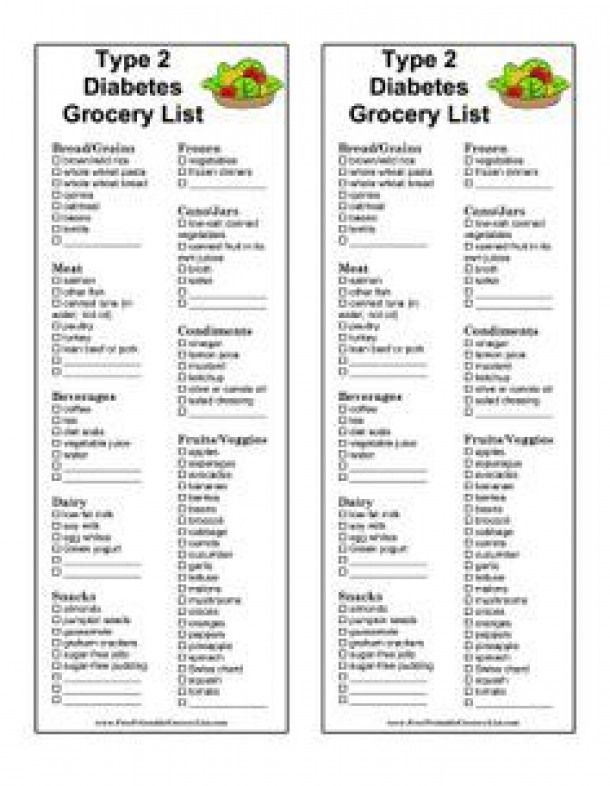 Sprout the beans and pulses. IT increases their nutrient count further. They become more easily digestible too. Learn More Benefits of Sprouting.
Sprout the beans and pulses. IT increases their nutrient count further. They become more easily digestible too. Learn More Benefits of Sprouting.
Sprouted Kala Chana Ambti
How about a Non fried Pakodi Chaat at snack time? Do you think it’s healthier when compared to a fried samosa or a vada? If yes, go for it. Don’t worry, you don’t need to invest in buying any new equipment for that. You just need a non-stick tava. Cook the pakodis on a tava and you are set for a healthy snack.
Non Fried Pakodi Chaat, Healthy North Indian Chaat
Planning for dinner with it? Simple opt for any khichdi. But remember to avoid rice as it is high in glycemic index scale. Pair them with another low glycemic index ingredient like barley and enjoy your healthy bowl of comfort food – Barley and Moong Dal Khichdi.
Barley and Moong Dal Khichdi
2. Low Glycemic Index Cereals: Barley tops the list in this category. It has a glycemic index of only 25. Try including it in the form an appetizer like Nourishing Barley Soup. The vegetables add plenty of colour and fibre to this nourishing broth too. Gain a whole lot of antioxidants with this pleasing bowl of hot soup.
Low Glycemic Index Cereals: Barley tops the list in this category. It has a glycemic index of only 25. Try including it in the form an appetizer like Nourishing Barley Soup. The vegetables add plenty of colour and fibre to this nourishing broth too. Gain a whole lot of antioxidants with this pleasing bowl of hot soup.
Nourishing Barley Soup
Whole Bajra is another low glycemic index cereal.
Bajra is also a good source of iron. It helps prevents anaemia. Try the Bajra Methi Khakhra – a crunchy evening snack. You are never sure of the quality of the flour used by small packaged food makers and also the quality of oil used. Street food vendors tends to use oil which has been used multiple times which will affect your health. So try making these at home and carry to work to share with your friends and colleagues.
Bajra Methi Khakhras
Buckwheat with a glycemic index of 55, just touching the higher range of low glycemic index is very healthy to be added to most diet plans.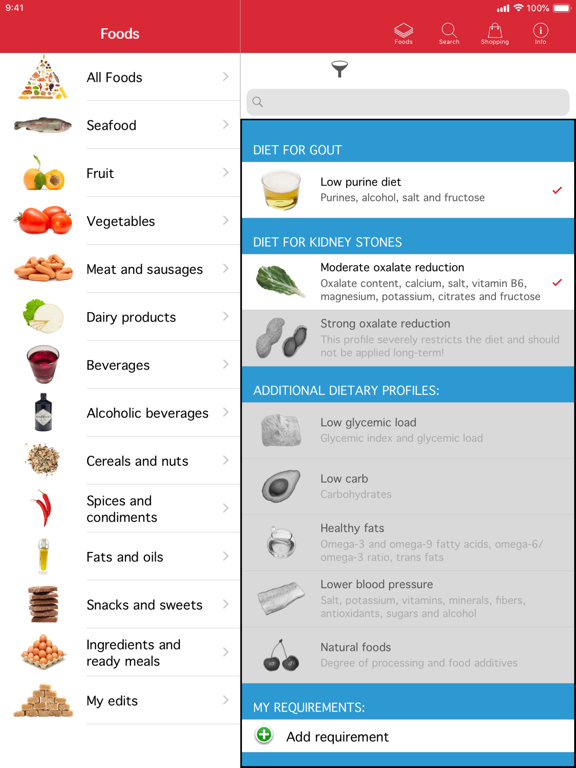 It is high in protein and fiber. This makes it a wise choice for weight watchers, diabetics, heart patients and even cancer patients. When we talk of protein, this is the only cereal which has all the 9 essential amino acids. Try Buckwheat Pancakes and enjoy them hot with green chutney. You get about 2.1 gram of protein per each buckwheat pancake.
It is high in protein and fiber. This makes it a wise choice for weight watchers, diabetics, heart patients and even cancer patients. When we talk of protein, this is the only cereal which has all the 9 essential amino acids. Try Buckwheat Pancakes and enjoy them hot with green chutney. You get about 2.1 gram of protein per each buckwheat pancake.
Buckwheat Pancakes, Kuttu Pancake Diabetic Snacks
You can even try Buckwheat Groats for breakfast. Buckwheat Groats Porridge which also has the goodness of apple is a nutritious breakfast idea for vegans.
Buckwheat Groats Strawberry Porridge
Oats, another cereal with a glycemic index of 55, is a wise choice. The best part about this cereal is that it lends itself to any flavours well. Whether you cook it in the form of Oats Methi Muthia or Oats Moong Dal Tikki.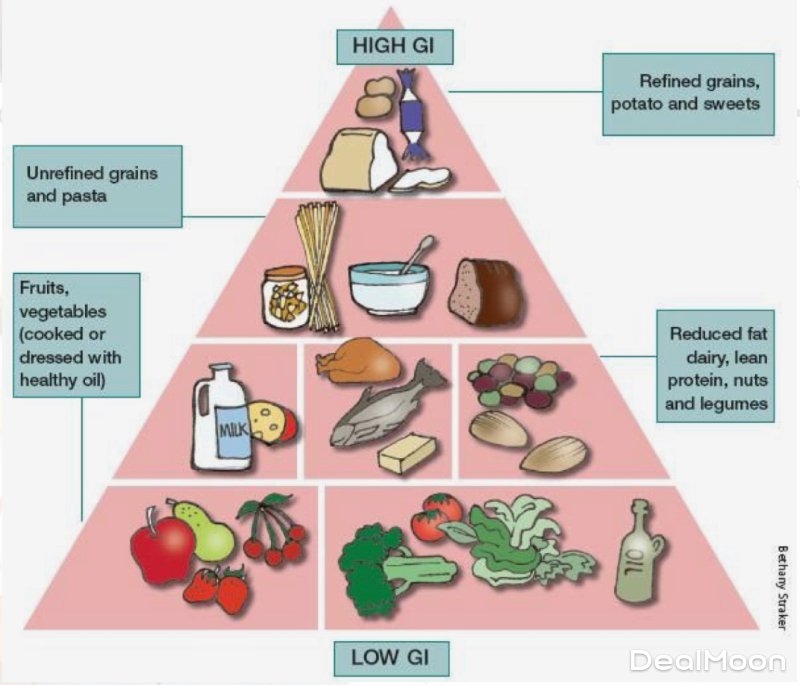
Oats Methi Muthia
3. Low Glycemic Index Dairy Products: Dairy products show higher protein content than carbs and therefore they fall in low glycemic index food category. Their glycemic index ranges from 27 to 33. Well, you can opt for milk, but we would suggest curd. Curd is probiotic and it improves your gut flora. It is easily digestible. Have a plan bowl of curds or in the form of Flax Seeds with Curd.
Flax Seeds with Curd, Good For Endurance Athletes, Weight Loss
Explore a whole of raitas you can make with curd. Beetroot, cucumber and tomato raita is a nourishing accompaniment to any main meal. Healthy cucumber tomato beetroot raita is sure to satisfy your taste buds and hunger both.
Beetroot, Cucumber and Tomato Raita
The traditional Cucumber and Mint Raita is equally nourishing. Have it as a part of your meal or in-between meals as a healthy snack to satify your hunger.
Have it as a part of your meal or in-between meals as a healthy snack to satify your hunger.
Cucumber and Mint Raita
Don’t forget God’s nectar – Chaas. Try it plain or as a Masala Chaas. It is very good for digestion and to make up for your water intake of the day as well.
Masala Chaas Recipe, Spicy Buttermilk Recipe
4. Low Glycemic Index Vegetables: Green leafy vegetables top this list with a glycemic index of less than 15. Everyone’s favourite spinach, not so commonly used kale, lettuce – our salad greens all can be used freely. They are a wealth of antioxidants which help reduce inflammation in the body and prevent many chronic diseases like diabetes, heart disease, cancer etc.
You can easily include the fresh green coloured spinach in place of calories loaded with saturated fats and simple sugars.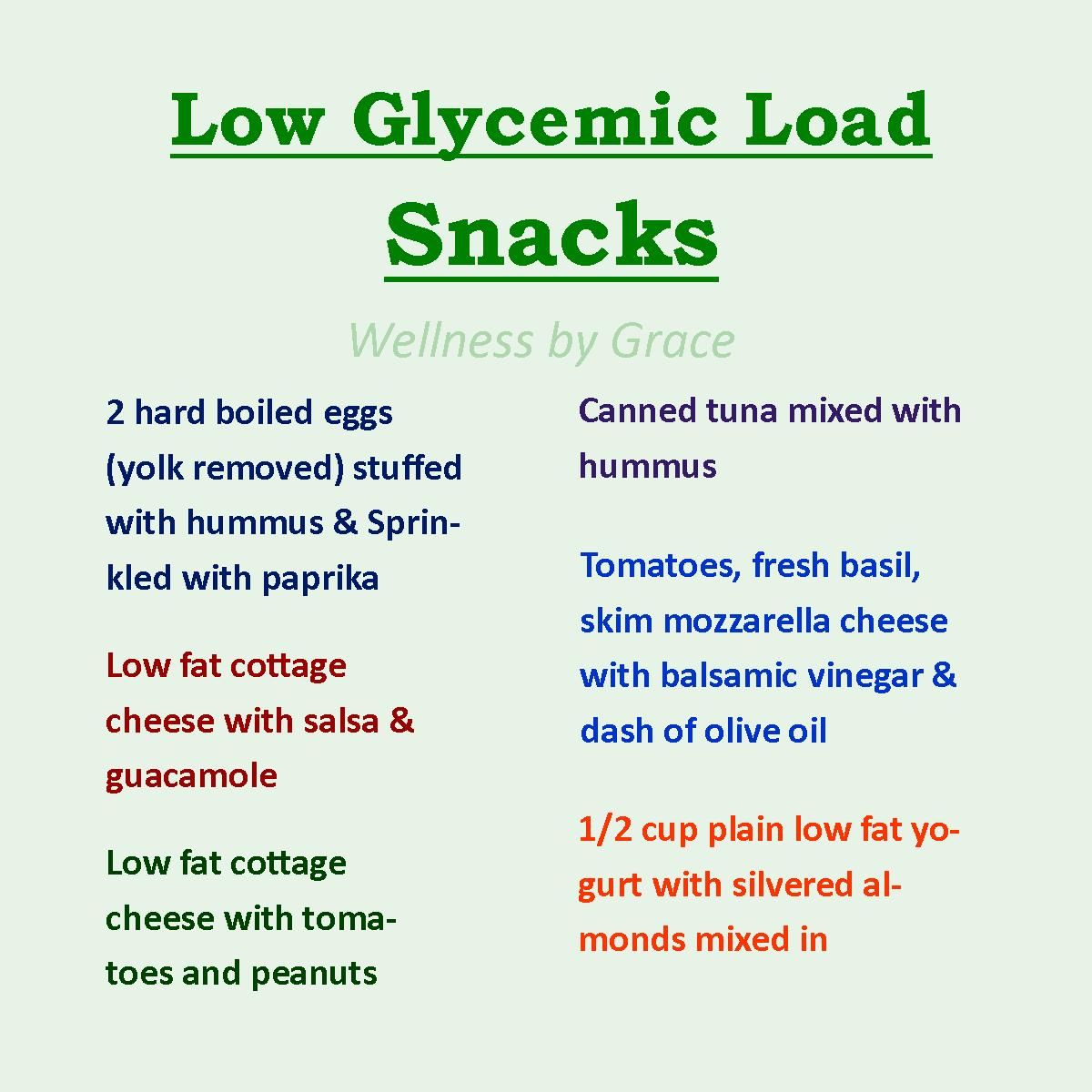 How about Spinach Hummus – made with 2 main ingredients palak and kabuli chana, both which are low in glycemic index. Serve it with Vegetable Crudites.
How about Spinach Hummus – made with 2 main ingredients palak and kabuli chana, both which are low in glycemic index. Serve it with Vegetable Crudites.
Spinach Hummus with Cucumber Sticks ( Tiffin Treats)
Explore kale to make a one dish meal – Kale Masoor Veg Antioxidant Salad. Vibrant kale leaves and soft well-cooked masoor add to the goodness of this lunch salad, while a tongue-tickling dressing with lemon juice, herbs and garlic adds to the fun!
Kale, Masoor Veg Antioxidant Healthy Office Salad
Mushrooms are another low glycemic index ingredient. They have a glycemic index of 10. Quick Mushroom Soup with just 52 calories and 4.3 g of carbs is a good start to any meal. Tandoori Mushrooms with 27 calories per serving can also be opted for when you want to make a healthy starter with this low glycemic ingredient.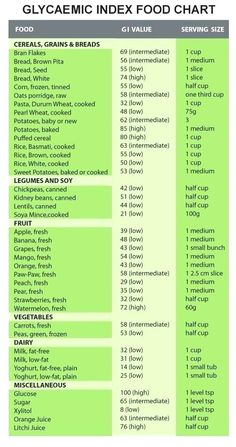
Mushroom Soup, Quick Mushroom Soup
Don’t miss out on other veggies like ladies finger, tomatoes and cauliflower. These also follow in the glycemic range less than 15. Thus best suited to be included in your diet. Remember not to cook them in loads of oil and pile up in calories and fats. Bhindi which usually needs lots of oil is here cooked in just 1 tbsp of oil. Try Bhindi Onion Stir-fry.
Bhindi Onion Stir-fry , Kerala-style Ularthu
Use a bit of your creativity and experiment with the fresh herbs found on your kitchen shelf. Try Cauliflower Methi Roti. It is perfect for any meal of the day – be it breakfast, lunch, snack or dinner. Be wise enough to choose your portion size accordingly.
Cauliflower Methi Roti, Healthy Gobi Methi Roti, Heart Friendly
With so much of goodness, these low glycemic index foods are good enough to satisfy most of your hunger pangs.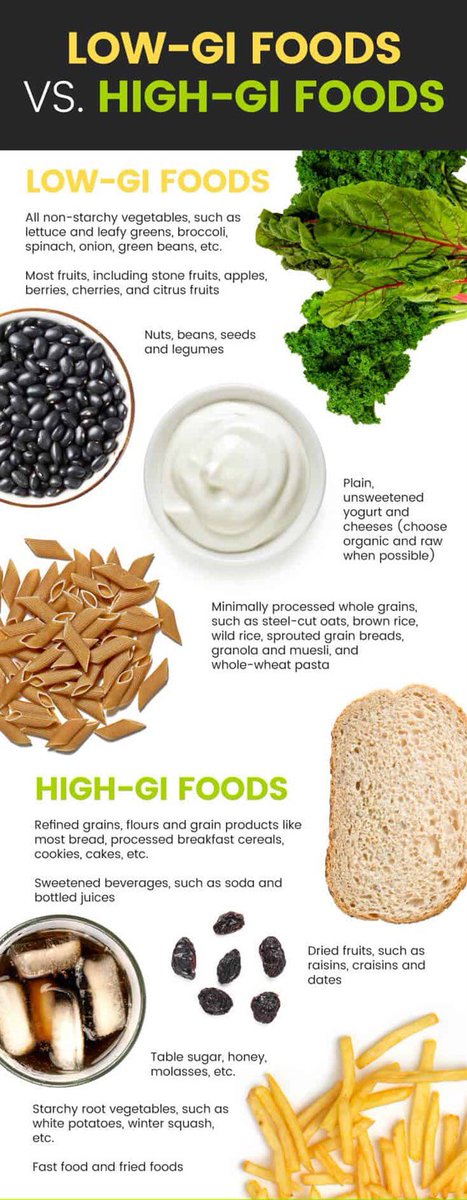 Explore this new world of cooking and share your comments with us.
Explore this new world of cooking and share your comments with us.
Low Glycemic Index of Indian Pulses
Low Glycemic Index of Cereals
Low Glycemic Index of Dairy Foods
Low GI Vegetables List
Low GI Fruits List
Want Great Skin? Why You Should Follow a Low Glycemic Diet…
Low glycemic diet – have you heard of such a thing? If you’re currently on the quest for fabulous skin – glycemic index is a must know. It sounds strange, it’s the kind of word spellcheck was invented for and it looks just a wee-bit complicated.
Trust me my friend – following a low glycemic diet is none of these things.
Let’s boot complicated.
Let’s shun strange.
Let’s… keep spell-check ‘eh.
A low glycemic diet is a fabulous approach to healthy eating for great skin. It can help to treat an oily/combination skin type, it can help calm acne, it can manage skin sensitivity, it can help avoid pimples, it can even delay fine lines and wrinkles.
A must know list ‘eh.
By the end of this article you will be a low glycemic diet pro – promise.
A low glycemic diet is very simply a diet that follows something called the glycemic index. Think of it like a food ruler. Every food positioned on this ruler has a number between 0-100. The closer the food is to zero, the lower its glycemic value, the closer a food is to 100, the higher its glycemic value.
But what does glycemic mean? How can you use the glycemic index food ruler?
Do not worry my friend, this is very simple…
Glycemic is just a fancy way of saying blood-sugar… which is sometimes also called glucose – the same ingredient fast-action energy drinks like Lucozade contain.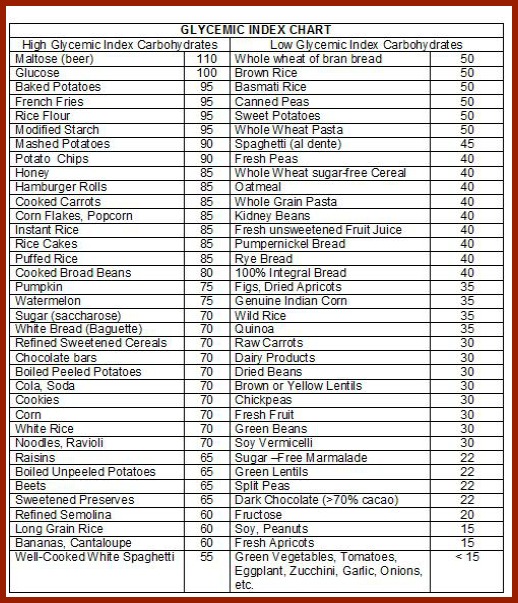
Blood-sugar gives you energy and your body makes this energy from the food you eat.
Food in -> digestion activated -> blood glucose (and *cough* the other stuff) out.
Here comes food magic. Have you ever gotten a head rush after devouring a double… who are we kidding… an entire packet of double chocolate chip cookies? Have you ever experienced elastic-band feeling hunger pains precisely 1.5 hours after breakfast? How about post-lunch-slump, do you feel tired and lethargic after eating your pre-packed lunch?
All of these feelings are signs your diet contains a significant amount of high glycemic foods.
Apart from getting rid of these attention grabbing emotions, following a low glycemic diet has a huge amount of health benefits – we’re talking heart health, joint health and skin health.
Which is why you’re here ‘eh. To figure out how following a low glycemic diet can make miracles for your skin.
Let’s take a look…
- Acne, spots and pimples – inflammatory lesions caused in-part by an excess of sebum… and an excess of sebum is linked to 2 hormones, insulin and insulin like growth factor (IGF-1) – both of which are triggered in huge amounts by high glycemic foods.

- Oily/combination skin type – past your teenage years but still suffer with skin oiliness? High glycemic foods cause an increased release of sebum making hormones.
- Skin sensitivity – skin types prone to sensitivity react to stress by inflaming themselves… and high glycemic foods cause inflammation.
- Fine lines and wrinkles – have you heard of glycation? It’s the reason why people with diabetes have skin that looks much older than their years. Glycation is a reaction caused by high blood sugar, a reaction which hardens and cross-links important skin proteins such as collagen and elastin.
Truth be told, following a low glycemic diet will not just help you find great skin, it will also help you find great health, because when your skin glows on the outside, it’s a sure-fire sign your body is also glowing on the inside.
Following a low glycemic diet is really simple, there’s no fussy carb counting, no strict protein-carb nutrient balance to follow, no daily calories allowance either. A low glycemic diet has only one rule, eat more foods with a low GI. Eat few foods with a high GI.
A low glycemic diet has only one rule, eat more foods with a low GI. Eat few foods with a high GI.
Now to get started you need to know what ranks as a low GI food and what ranks as a high GI food. Let me get you those measurements dear friend;
- Low GI foods rank between 0-55
- Medium GI foods 56-69
- High GI foods 70-100
Let’s start with a few examples;
Foods with low glycemic index include;
- Chickpeas
- Beans (haricots, kidney beans, butter beans, black beans, pinto beans…)
- Lentils
- Nuts and nut butters
- Fresh apples
- broccoli
- Full fat milk (although for great skin, this is a food I’d recommend trialling an elimination of, for these other reasons)
- Brown rice
- Oat bran
- Eggs
- Salmon
- Avocado
High glycemic foods include foods like;
- White bread
- Banana
- Popcorn
- Crisps/pretzels
- White potatoes
- Baked sweet potatoe/Yam
- Instant porridge
- White rice
- Watermelon
- Energy drinks e.
 g. Lucozade, Gatorade
g. Lucozade, Gatorade - Bagels
- French baguette
See these glycemic index charts for a complete list of low and high GI foods; Published in the journal of Diabetes Care 2008 – GI of over 2, 400 foods – part 1, part 2, the Diogenes GI Database (with downloadable glycemic index food list) – with lists for UK, Spanish, Greek, German, Dutch, Danish and Czech foods and a pre-split, easy scan list of low, medium and high GI foods per food group from the Low GI Health team.
Suffering from sensitive skin? Have you looked at your diet? #skintips #bbloggers pic.twitter.com/M85FgmkMJF
— Cheryl Woodman (@HonestyForSkin) 12 June 2017
Now you might of noticed a few foods that you thought of as healthy but actually rate as high on the glycemic index – strange ‘eh. Although most processed foods are high GI foods, not all natural foods are low GI foods.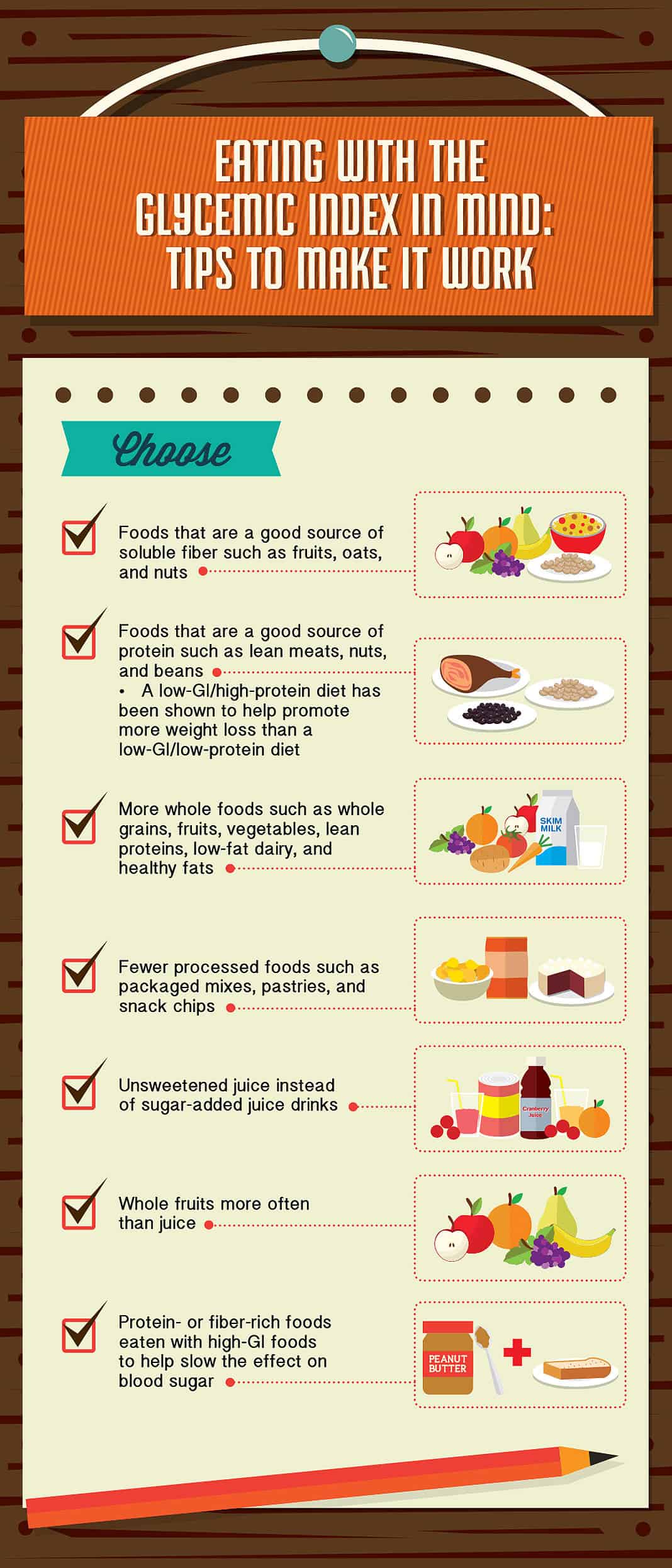 #MindBoggle
#MindBoggle
Fruits are living creatures, the older they are, aka the riper they are, the more highly they rate on the glycemic index. An un-ripe banana has a much lower GI than a very ripe banana – have you tasted both? Can you notice the difference?
Low glycemic fruits include;
- Apples
- Cherries
- Grapefruit
- Peaches
- Pears
- Strawberries
- Oranges
Whereas, medium to high glycemic fruits include;
- Banana
- Watermelon
- Cantaloupe
- Raisins
- Pineapple
The key takeaway; Although processed foods are generally high glycemic foods, some fruits are also high glycemic foods – while there are fewer, when following a low glycemic diet, it’s important to know which fruits to avoid or eat only a little of.
While we’re on healthy food group street, the same rings true for vegetables. There are lovely low glycemic vegetables and there are unhelpfully high glycemic vegetables. High glycemic vegetables will be broken down extremely quickly into blood sugar, causing high swings in your insulin hormones. Low glycemic vegetables will channel, a slowly but surely mental attitude, being broken down carefully and released as blood sugar gradually.
High glycemic vegetables will be broken down extremely quickly into blood sugar, causing high swings in your insulin hormones. Low glycemic vegetables will channel, a slowly but surely mental attitude, being broken down carefully and released as blood sugar gradually.
Examples of low glycemic vegetables include;
- Lettuce
- Broccoli
- Green beans
- Spinach
- Cauliflower
- Mushrooms
- Aubergine
- Raw carrots
Whereas, medium to high glycemic vegetables include;
- Pumpkin
- Parsnip
- Beetroot
- Cooked carrots
The key takeaway; Did you clock carrots twice? Once as a low glycemic food and once as a medium-high glycemic food? Raw carrots are a go on a low glycemic diet, however cooked carrots change carrot chemistry… and this is true for many other foods. When you cook food, you break it down which makes it easier and quicker for your body to digest, sometimes cooking also creates more sugar e. g. browned ‘caramelised’ onions. Foods that taste sweeter after cooking, have usually got a higher GI than when eaten in their raw form.
g. browned ‘caramelised’ onions. Foods that taste sweeter after cooking, have usually got a higher GI than when eaten in their raw form.
If you’ve gotten clued up on all of the above, you my friend are already a low glycemic diet pro. On your quest to see the difference this makes to your skin, you’re likely to stumble across another glycemic phrase – glycemic load.
This can be super helpful when trying to decide if what your eating is ‘overall’ a low glycemic diet pick.
Imagine running yourself a yummily warn bath. You have the hot tap at maximum and the cold tap at half. The bath fills to the three-quarter mark and you slacken off both taps, dip your toes in an add a little more cold to take off that temperature edge. You get in and 10 minutes later, the hot taps back on for a top-up.
Getting the perfect temperature takes skill.
Crafting a low GI diet is similar. Following a low GI diet does not mean you can only eat low GI foods – there’s still cold water in a warm bath ‘eh.
What matters is the amount of medium to high glycemic foods you eat… and this is where glycemic load can be very helpful.
Glycemic load takes into account the amount of carbohydrates in foods per serving i.e. the amount of nutrients that will get broken down quickly into blood sugar.
This my friend is all about quantity – and you can work out the glycemic load of any food by using this calculation;
(Carbohydrate content (g) X Glycemic Index)/100 = A food’s glycemic load
Now the other thing to know is low, medium and high glycemic loads have a different measuring ruler than glycemic index. It’s like the difference between centimeters and inches.
- Low glycemic load foods rate 0 to 10
- Medium glycemic load foods – 11 to 19
- High glycemic load foods – 20 and over
The key takeaway: When you’re following a low glycemic diet, you can use your glycemic load savvy to understand how to treat yourself within the rules of a low glycemic diet. Plus a few treats never hurt anyone, it’s better to allow yourself than to deny and spend your entire evening thinking about chocolate!
When your body is healthy on the inside, it glows on the outside. Skincare can help alleviate the symptoms of poor inner health, however if you don’t confront the cause, you’ll never see long-term improvement. You’re also likely to eventually feel, like the skincare you’ve chosen, isn’t helping.
Which is why the best approach to skincare is a careful combination of skincare products, diet and lifestyle. Of which diet has a huge impact.
A poor diet full of fried foods and processed foods e.g. high glycemic index foods will make you feel tired, down and energy-less. It will cause inflammation in your body, cause your heart stress (yes – that doesn’t just come from boys!) and often lead to bad skin.
A great diet full of low GI foods and healthy fats will give you energy, keep you fuller for longer and have you behaving like a spring chicken of age… It will also control your insulin release, resist hormonal swings and pave the way for great skin.
Which looks like skin that is less oily, skin that has smaller pores, skin that is less sensitive and skin that resists fine lines and wrinkles for longer. Not bad ‘eh.
What does your diet look like? Are you conscious of high and low glycemic foods? Wondering if your breakfast choices are an OK on the low glycemic diet? Ask me your questions in the comments below, looking forward to chatting…
Cheryl Woodman is a scientist & award winning skincare formulator who’s more friend next door than bow tie wearing professor. As creator of Honesty For Your Skin her aim is to help you care for your skin in the best ways possible. She’s founder of the natural & fragrance free skincare brand Honesty while also hosting 1 to 1 skincare coaching to help you get your best skin yet. Find out more here.
90,000 Glycemic Index – High and Low GI Foods
The Glycemic Index (GI) is the rate at which blood sugar increases. In any diet, it is worth considering the amount of carbohydrates. Everyone knows that with an excess of them, weight increases, but not everyone thinks why this is happening. When carbohydrates enter the body, they are transformed into glucose, which is consumed by cells to replenish energy. Insulin helps to get glucose to its destination. With a lack of it in the blood, the sugar index rises, and therefore the body still produces insulin.
However, this reaction leads to an excessive increase in insulin levels, which entails body fat. In other words, sudden surges in sugar lead to weight gain and the formation of a sweet tooth. That is why it is so important to track the glycemic index of different foods and take it into account in the diet.
The glycemic level is determined on a scale of 100 points. A high indicator is considered a value above 70, a low indicator below 35.
Why take into account the glycemic index indicator
The glycemic level should be considered for people who are trying to get rid of extra pounds and switch to a healthy diet.This metric helps us identify suitable and unhealthy foods. For example, when formulating a healthy diet, foods with a low glycemic index are included in the diet. A large glycemic index is excluded when losing weight, as it can cause obesity. After all, an increased glycemic level often causes diabetes mellitus.
Foods with a high glycemic index increase hunger and disrupt metabolism. This indicator only speaks about the rate of increase in blood glucose.Diabetics do not take this information into account, as the glycemic load is more important for them. For example, carrots have a high GI but have little stress on the body due to their low carbohydrate content.
Foods with a low glycemic index are mainly composed of vegetable fiber, which helps to reduce the level of bad cholesterol and stabilize the formation of insulin.
Products with an average glycemic index (buckwheat, muesli, oatmeal) are optimal food.However, this is subject to their moderate consumption. In large quantities, they can also negatively affect health.
Limiting the consumption of foods with a high glycemic level (for example, potatoes or white bread) will allow you to lose weight by normalizing metabolism. What is especially necessary for people suffering from overweight. Thus, it is possible to stabilize the sugar level.
Foods with a high glycemic index
- Mashed potatoes – 90
- Sweet corn – 70
- Beer – 110
- Marshmallow – 80
- Dates – 103
- White Bread – 100
- Rutabaga – 99
- Fried potatoes – 95
- Butter buns – 95
- Pancakes – 95
- Rice flour – 95
- Honey – 90
- Boiled carrots – 85
- Corn Flakes – 85
- Popcorn – 85
- Sliced Loaf – 80
- Condensed milk with sugar 8.5% – 80
- Semolina porridge – 75
- Watermelon – 70
- Waffles – 70.
Foods with a low glycemic index
- Eggplant – 10
- Apples – 35
- Milk chocolate – 35
- Fresh figs – 35
- Green Peas – 35
- Apricot – 35
- Pear – 33
- Dried Apples – 30
- Green beans – 30
- Black and red currant – 30
- Cream 10% – 30
- Peaches – 30
- Broccoli – 10
- Beet – 30
- Milk 3.2% – 28
- Tomato – 10
- Raspberry – 30
- Cucumber – 25
- Beef sausages – 28
- Lentil grain – 27.
Read Also: 10 Foods High In Zinc To Include In Your Diet
See also: 10 blood thinners
See also: Why alkaline foods are needed in the diet and what are their benefits
90,000 Foods with a low glycemic index: list
In 1981, Canadian doctor David Jenkins, in order to determine the most suitable diet for people suffering from diabetes, replenished medical terminology with a new concept – the glycemic index of a product, or GI for short.This designation is arbitrary and means the rate of degradation of a carbohydrate-containing product in the human body. It is considered to be the standard of the glycemic index of glucose, which is equal to 100 units. And, the faster the product is digested in the body, the higher its GI.
The Official Dietetics Division considers the consumption of foods with a low glycemic index to be as important as those of low calorie foods. This is necessary both for the purpose of losing weight and for maintaining the normal functioning of patients with diabetes mellitus.Both criteria are important because they often differ: many foods are low in calories but high in GI, and vice versa.
More about the glycemic index
All carbohydrate-containing foods belong to one of three groups:
- with a high GI – over 70;
- with an average of 56-69;
- with a low index – up to 55.
Foods with a low glycemic index are also called slow carbohydrates, which the body needs for normal functioning, since after processing they are converted into energy.With a high rate – these are fast, which pose a certain danger to humans. If we turn to medical terminology, then these two groups are correctly called complex carbohydrates (polysaccharides) and monosaccharides (respectively).
The glycemic index is determined by testing under laboratory conditions. Given the complexity, or rather the impossibility of carrying out these manipulations at home, it is proposed to use reference books and ready-made tables compiled specifically for diabetics to compose a diet and calculate the GI of a certain product.They can be found in print or on the Internet. There are also many ready-made menus for every day. It is important that for products with a low glycemic index, this indicator can rise due to a number of factors:
- method of processing;
- Selected recipe that may contain high GI ingredients;
- grade and type of product;
- type of processing.
Therefore, it is very important to pay attention to all factors and be extremely careful when drawing up a dietary menu.
It is important to remember that GI has nothing to do with calories. These two definitions exist independently of each other. Therefore, you should not assume that eating only foods with a low glycemic index will help you lose weight.
What happens in the body when substances with a high GI are supplied?
When carbohydrates enter the body, its further reaction depends solely on the former belonging to one of the two groups. Foods with a low glycemic index, as we already know, contain complex carbohydrates (polysaccharides).They are characterized by slow digestion and gradual breakdown, due to which there is no sudden release of the hormone insulin.
Monosaccharides, they are fast carbohydrates, on the contrary, are characterized by rapid digestion in the body. Due to the instant breakdown, the sugar level rises sharply. The pancreas reacts to this by stimulating the release of insulin. This condition is life-threatening for diabetics and negatively affects a healthy person, especially one who wants to lose weight.
Why are high carbohydrate foods dangerous?
Diabetes mellitus is insulin-dependent and non-insulin dependent. Regardless of the type, it is worth monitoring the amount and quality of carbohydrates consumed. Foods with a low glycemic index are equally needed and important in both cases.
But what is insulin? This substance is a hormone produced by the pancreas. Its role in the body’s work is to evenly distribute excess sugar throughout all tissues and organs.Part of the surplus is converted into fatty deposits.
They are a reserve of energy for the worst time. For example, people who lose weight by fasting often complain that they quickly gained the lost weight, and even more than that. Here he is a vivid example of an emergency for the body: thinking that it can be deprived of nutrition again, they store up for later in the form of fatty deposits. By the way, fat cannot be converted back into glucose, that is, into energy.
From the above, it follows that eating high-GI meals for those who want to lose weight will only answer with unnecessary body fat.But for patients with diabetes mellitus, this condition is extremely dangerous, since a sharp jump in sugar can be fatal. Moreover, both an excessive amount of carbohydrates and their lack are dangerous.
Foods with a low glycemic index
These include things that you can eat daily in almost unlimited quantities. Typically, this is something that can be consumed unprocessed or with minimal heat treatment. First of all, fruits. Rich in fiber, they are very beneficial to health.
Fruit also contains a lot of sugar. But it is natural, not synthesized, and therefore belongs to polysaccharides and is not capable of harm. In addition to fruits, this group includes vegetables, legumes, whole grains and some other products.
Products with an average GI level
They are also allowed for diabetics and those who are losing weight, but to a limited extent. Like foods with a glycemic index below 50, they do not pose a health hazard if not overused.This list usually includes the ingredients used for the main dishes. Thanks to such products, you can create a correct, healthy and varied menu.
Foods to be excluded from the diet: high GI
Here it is worth making a small correction: not completely abandon them, but significantly reduce the consumption. In general, you can often find the statement that occasionally you need to give the body “will”, feeding it with harmful goodies. At the same time, it is important to stop in time.For example, such products will be very useful after physical exertion, as they will quickly restore energy and return the spent strength.
However, such food is not suitable for permanent consumption. Causing a sharp rise in sugar, it becomes a conducive factor for the development of such serious diseases as diabetes, obesity, pathology in the work of the heart and blood vessels.
Table of glycemic index indicators for fruits, berries and vegetables
Every person from childhood knows foods containing the greatest number of nutrients.These are, of course, fruits, vegetables and berries. Here is a detailed list of low, medium and high glycemic index foods.
No. | Product | Food Glycemic Index | |||||||||||||||||||||||||||||||||||||||||||||||||||||||||||||||||||||||||||||||||||||||||||||||||||||||||||||||||||||||||||||||||||||||||||||||||||||||||||||||||||||||||||||||||||||||||||||||||||||||||||||||||||||||||||||||||||||||||||||||||||||||||||||||||||||||||||||||||||||||||||||||||||||||||||||||||||||||||||||||||||||||||||||||||||||||||||||||||||||||||||||||||||||||||||||||||||||||||||||||||||||||||||||||||||||||||||||||||||||||||||||||||||||||||||||||||||||||||||||||||||||||||||||||||||||||||||||||||||||||||||||||||||||||||||||||||||||||||||||||||||||||||||||||||||||||||||||||||||||||||||||||||||||||||||||||||||||||||||||||||||||||||||||||||||||||||||||||||||||||||||||||||||||||||||||||||||||||||||||||||||||||||||||||||||||||||||||||||||||||||||||||||||||||||||||||||||||||||||||||||||||||||||||||||||||||||||||||||||||||||||||||||||||||||||||||||||||||||||||||||||||||||||||||||||||||||||||||||||||||||||||||||||||||||||||||||||||||||||||||||||||||||||||||||||||||||||||||||||||
1 | Parsley, dill, lettuce | 9204 | 2 | Avocado | 10 | ||||||||||||||||||||||||||||||||||||||||||||||||||||||||||||||||||||||||||||||||||||||||||||||||||||||||||||||||||||||||||||||||||||||||||||||||||||||||||||||||||||||||||||||||||||||||||||||||||||||||||||||||||||||||||||||||||||||||||||||||||||||||||||||||||||||||||||||||||||||||||||||||||||||||||||||||||||||||||||||||||||||||||||||||||||||||||||||||||||||||||||||||||||||||||||||||||||||||||||||||||||||||||||||||||||||||||||||||||||||||||||||||||||||||||||||||||||||||||||||||||||||||||||||||||||||||||||||||||||||||||||||||||||||||||||||||||||||||||||||||||||||||||||||||||||||||||||||||||||||||||||||||||||||||||||||||||||||||||||||||||||||||||||||||||||||||||||||||||||||||||||||||||||||||||||||||||||||||||||||||||||||||||||||||||||||||||||||||||||||||||||||||||||||||||||||||||||||||||||||||||||||||||||||||||||||||||||||||||||||||||||||||||||||||||||||||||||||||||||||||||||||||||||||||||||||||||||||||||||||||||||||||||||||||||||||||||||||||||||||||||||||||||||||||||||||||||||||||||
3 | Bell pepper | 15 | |||||||||||||||||||||||||||||||||||||||||||||||||||||||||||||||||||||||||||||||||||||||||||||||||||||||||||||||||||||||||||||||||||||||||||||||||||||||||||||||||||||||||||||||||||||||||||||||||||||||||||||||||||||||||||||||||||||||||||||||||||||||||||||||||||||||||||||||||||||||||||||||||||||||||||||||||||||||||||||||||||||||||||||||||||||||||||||||||||||||||||||||||||||||||||||||||||||||||||||||||||||||||||||||||||||||||||||||||||||||||||||||||||||||||||||||||||||||||||||||||||||||||||||||||||||||||||||||||||||||||||||||||||||||||||||||||||||||||||||||||||||||||||||||||||||||||||||||||||||||||||||||||||||||||||||||||||||||||||||||||||||||||||||||||||||||||||||||||||||||||||||||||||||||||||||||||||||||||||||||||||||||||||||||||||||||||||||||||||||||||||||||||||||||||||||||||||||||||||||||||||||||||||||||||||||||||||||||||||||||||||||||||||||||||||||||||||||||||||||||||||||||||||||||||||||||||||||||||||||||||||||||||||||||||||||||||||||||||||||||||||||||||||||||||||||||||||||||||||||
5 | Broccoli | 15 | |||||||||||||||||||||||||||||||||||||||||||||||||||||||||||||||||||||||||||||||||||||||||||||||||||||||||||||||||||||||||||||||||||||||||||||||||||||||||||||||||||||||||||||||||||||||||||||||||||||||||||||||||||||||||||||||||||||||||||||||||||||||||||||||||||||||||||||||||||||||||||||||||||||||||||||||||||||||||||||||||||||||||||||||||||||||||||||||||||||||||||||||||||||||||||||||||||||||||||||||||||||||||||||||||||||||||||||||||||||||||||||||||||||||||||||||||||||||||||||||||||||||||||||||||||||||||||||||||||||||||||||||||||||||||||||||||||||||||||||||||||||||||||||||||||||||||||||||||||||||||||||||||||||||||||||||||||||||||||||||||||||||||||||||||||||||||||||||||||||||||||||||||||||||||||||||||||||||||||||||||||||||||||||||||||||||||||||||||||||||||||||||||||||||||||||||||||||||||||||||||||||||||||||||||||||||||||||||||||||||||||||||||||||||||||||||||||||||||||||||||||||||||||||||||||||||||||||||||||||||||||||||||||||||||||||||||||||||||||||||||||||||||||||||||||||||||||||||||||||
6 | Celery | 02 15 02 15 | |||||||||||||||||||||||||||||||||||||||||||||||||||||||||||||||||||||||||||||||||||||||||||||||||||||||||||||||||||||||||||||||||||||||||||||||||||||||||||||||||||||||||||||||||||||||||||||||||||||||||||||||||||||||||||||||||||||||||||||||||||||||||||||||||||||||||||||||||||||||||||||||||||||||||||||||||||||||||||||||||||||||||||||||||||||||||||||||||||||||||||||||||||||||||||||||||||||||||||||||||||||||||||||||||||||||||||||||||||||||||||||||||||||||||||||||||||||||||||||||||||||||||||||||||||||||||||||||||||||||||||||||||||||||||||||||||||||||||||||||||||||||||||||||||||||||||||||||||||||||||||||||||||||||||||||||||||||||||||||||||||||||||||||||||||||||||||||||||||||||||||||||||||||||||||||||||||||||||||||||||||||||||||||||||||||||||||||||||||||||||||||||||||||||||||||||||||||||||||||||||||||||||||||||||||||||||||||||||||||||||||||||||||||||||||||||||||||||||||||||||||||||||||||||||||||||||||||||||||||||||||||||||||||||||||||||||||||||||||||||||||||||||||||||||||||||||||||||||||||
15 | |||||||||||||||||||||||||||||||||||||||||||||||||||||||||||||||||||||||||||||||||||||||||||||||||||||||||||||||||||||||||||||||||||||||||||||||||||||||||||||||||||||||||||||||||||||||||||||||||||||||||||||||||||||||||||||||||||||||||||||||||||||||||||||||||||||||||||||||||||||||||||||||||||||||||||||||||||||||||||||||||||||||||||||||||||||||||||||||||||||||||||||||||||||||||||||||||||||||||||||||||||||||||||||||||||||||||||||||||||||||||||||||||||||||||||||||||||||||||||||||||||||||||||||||||||||||||||||||||||||||||||||||||||||||||||||||||||||||||||||||||||||||||||||||||||||||||||||||||||||||||||||||||||||||||||||||||||||||||||||||||||||||||||||||||||||||||||||||||||||||||||||||||||||||||||||||||||||||||||||||||||||||||||||||||||||||||||||||||||||||||||||||||||||||||||||||||||||||||||||||||||||||||||||||||||||||||||||||||||||||||||||||||||||||||||||||||||||||||||||||||||||||||||||||||||||||||||||||||||||||||||||||||||||||||||||||||||||||||||||||||||||||||||||||||||||||||||||||||||||||
8 | Radish | 15 | |||||||||||||||||||||||||||||||||||||||||||||||||||||||||||||||||||||||||||||||||||||||||||||||||||||||||||||||||||||||||||||||||||||||||||||||||||||||||||||||||||||||||||||||||||||||||||||||||||||||||||||||||||||||||||||||||||||||||||||||||||||||||||||||||||||||||||||||||||||||||||||||||||||||||||||||||||||||||||||||||||||||||||||||||||||||||||||||||||||||||||||||||||||||||||||||||||||||||||||||||||||||||||||||||||||||||||||||||||||||||||||||||||||||||||||||||||||||||||||||||||||||||||||||||||||||||||||||||||||||||||||||||||||||||||||||||||||||||||||||||||||||||||||||||||||||||||||||||||||||||||||||||||||||||||||||||||||||||||||||||||||||||||||||||||||||||||||||||||||||||||||||||||||||||||||||||||||||||||||||||||||||||||||||||||||||||||||||||||||||||||||||||||||||||||||||||||||||||||||||||||||||||||||||||||||||||||||||||||||||||||||||||||||||||||||||||||||||||||||||||||||||||||||||||||||||||||||||||||||||||||||||||||||||||||||||||||||||||||||||||||||||||||||||||||||||||||||||||||||
9 | Cucumbers | Cucumbers | |||||||||||||||||||||||||||||||||||||||||||||||||||||||||||||||||||||||||||||||||||||||||||||||||||||||||||||||||||||||||||||||||||||||||||||||||||||||||||||||||||||||||||||||||||||||||||||||||||||||||||||||||||||||||||||||||||||||||||||||||||||||||||||||||||||||||||||||||||||||||||||||||||||||||||||||||||||||||||||||||||||||||||||||||||||||||||||||||||||||||||||||||||||||||||||||||||||||||||||||||||||||||||||||||||||||||||||||||||||||||||||||||||||||||||||||||||||||||||||||||||||||||||||||||||||||||||||||||||||||||||||||||||||||||||||||||||||||||||||||||||||||||||||||||||||||||||||||||||||||||||||||||||||||||||||||||||||||||||||||||||||||||||||||||||||||||||||||||||||||||||||||||||||||||||||||||||||||||||||||||||||||||||||||||||||||||||||||||||||||||||||||||||||||||||||||||||||||||||||||||||||||||||||||||||||||||||||||||||||||||||||||||||||||||||||||||||||||||||||||||||||||||||||||||||||||||||||||||||||||||||||||||||||||||||||||||||||||||||||||||||||||||||||||||||||||||||||||||||||
15 | |||||||||||||||||||||||||||||||||||||||||||||||||||||||||||||||||||||||||||||||||||||||||||||||||||||||||||||||||||||||||||||||||||||||||||||||||||||||||||||||||||||||||||||||||||||||||||||||||||||||||||||||||||||||||||||||||||||||||||||||||||||||||||||||||||||||||||||||||||||||||||||||||||||||||||||||||||||||||||||||||||||||||||||||||||||||||||||||||||||||||||||||||||||||||||||||||||||||||||||||||||||||||||||||||||||||||||||||||||||||||||||||||||||||||||||||||||||||||||||||||||||||||||||||||||||||||||||||||||||||||||||||||||||||||||||||||||||||||||||||||||||||||||||||||||||||||||||||||||||||||||||||||||||||||||||||||||||||||||||||||||||||||||||||||||||||||||||||||||||||||||||||||||||||||||||||||||||||||||||||||||||||||||||||||||||||||||||||||||||||||||||||||||||||||||||||||||||||||||||||||||||||||||||||||||||||||||||||||||||||||||||||||||||||||||||||||||||||||||||||||||||||||||||||||||||||||||||||||||||||||||||||||||||||||||||||||||||||||||||||||||||||||||||||||||||||||||||||||||||||
11 | Mushrooms | 15 | |||||||||||||||||||||||||||||||||||||||||||||||||||||||||||||||||||||||||||||||||||||||||||||||||||||||||||||||||||||||||||||||||||||||||||||||||||||||||||||||||||||||||||||||||||||||||||||||||||||||||||||||||||||||||||||||||||||||||||||||||||||||||||||||||||||||||||||||||||||||||||||||||||||||||||||||||||||||||||||||||||||||||||||||||||||||||||||||||||||||||||||||||||||||||||||||||||||||||||||||||||||||||||||||||||||||||||||||||||||||||||||||||||||||||||||||||||||||||||||||||||||||||||||||||||||||||||||||||||||||||||||||||||||||||||||||||||||||||||||||||||||||||||||||||||||||||||||||||||||||||||||||||||||||||||||||||||||||||||||||||||||||||||||||||||||||||||||||||||||||||||||||||||||||||||||||||||||||||||||||||||||||||||||||||||||||||||||||||||||||||||||||||||||||||||||||||||||||||||||||||||||||||||||||||||||||||||||||||||||||||||||||||||||||||||||||||||||||||||||||||||||||||||||||||||||||||||||||||||||||||||||||||||||||||||||||||||||||||||||||||||||||||||||||||||||||||||||||||||||
12 | |||||||||||||||||||||||||||||||||||||||||||||||||||||||||||||||||||||||||||||||||||||||||||||||||||||||||||||||||||||||||||||||||||||||||||||||||||||||||||||||||||||||||||||||||||||||||||||||||||||||||||||||||||||||||||||||||||||||||||||||||||||||||||||||||||||||||||||||||||||||||||||||||||||||||||||||||||||||||||||||||||||||||||||||||||||||||||||||||||||||||||||||||||||||||||||||||||||||||||||||||||||||||||||||||||||||||||||||||||||||||||||||||||||||||||||||||||||||||||||||||||||||||||||||||||||||||||||||||||||||||||||||||||||||||||||||||||||||||||||||||||||||||||||||||||||||||||||||||||||||||||||||||||||||||||||||||||||||||||||||||||||||||||||||||||||||||||||||||||||||||||||||||||||||||||||||||||||||||||||||||||||||||||||||||||||||||||||||||||||||||||||||||||||||||||||||||||||||||||||||||||||||||||||||||||||||||||||||||||||||||||||||||||||||||||||||||||||||||||||||||||||||||||||||||||||||||||||||||||||||||||||||||||||||||||||||||||||||||||||||||||||||||||||||||||||||||||||||||||||||
Zucchini | 15 | ||||||||||||||||||||||||||||||||||||||||||||||||||||||||||||||||||||||||||||||||||||||||||||||||||||||||||||||||||||||||||||||||||||||||||||||||||||||||||||||||||||||||||||||||||||||||||||||||||||||||||||||||||||||||||||||||||||||||||||||||||||||||||||||||||||||||||||||||||||||||||||||||||||||||||||||||||||||||||||||||||||||||||||||||||||||||||||||||||||||||||||||||||||||||||||||||||||||||||||||||||||||||||||||||||||||||||||||||||||||||||||||||||||||||||||||||||||||||||||||||||||||||||||||||||||||||||||||||||||||||||||||||||||||||||||||||||||||||||||||||||||||||||||||||||||||||||||||||||||||||||||||||||||||||||||||||||||||||||||||||||||||||||||||||||||||||||||||||||||||||||||||||||||||||||||||||||||||||||||||||||||||||||||||||||||||||||||||||||||||||||||||||||||||||||||||||||||||||||||||||||||||||||||||||||||||||||||||||||||||||||||||||||||||||||||||||||||||||||||||||||||||||||||||||||||||||||||||||||||||||||||||||||||||||||||||||||||||||||||||||||||||||||||||||||||||||||||||||||||||
14 | Greens | 15 | |||||||||||||||||||||||||||||||||||||||||||||||||||||||||||||||||||||||||||||||||||||||||||||||||||||||||||||||||||||||||||||||||||||||||||||||||||||||||||||||||||||||||||||||||||||||||||||||||||||||||||||||||||||||||||||||||||||||||||||||||||||||||||||||||||||||||||||||||||||||||||||||||||||||||||||||||||||||||||||||||||||||||||||||||||||||||||||||||||||||||||||||||||||||||||||||||||||||||||||||||||||||||||||||||||||||||||||||||||||||||||||||||||||||||||||||||||||||||||||||||||||||||||||||||||||||||||||||||||||||||||||||||||||||||||||||||||||||||||||||||||||||||||||||||||||||||||||||||||||||||||||||||||||||||||||||||||||||||||||||||||||||||||||||||||||||||||||||||||||||||||||||||||||||||||||||||||||||||||||||||||||||||||||||||||||||||||||||||||||||||||||||||||||||||||||||||||||||||||||||||||||||||||||||||||||||||||||||||||||||||||||||||||||||||||||||||||||||||||||||||||||||||||||||||||||||||||||||||||||||||||||||||||||||||||||||||||||||||||||||||||||||||||||||||||||||||||||||||||||
15 | 204 15 | 204 15 16 | Eggplant | 20 | |||||||||||||||||||||||||||||||||||||||||||||||||||||||||||||||||||||||||||||||||||||||||||||||||||||||||||||||||||||||||||||||||||||||||||||||||||||||||||||||||||||||||||||||||||||||||||||||||||||||||||||||||||||||||||||||||||||||||||||||||||||||||||||||||||||||||||||||||||||||||||||||||||||||||||||||||||||||||||||||||||||||||||||||||||||||||||||||||||||||||||||||||||||||||||||||||||||||||||||||||||||||||||||||||||||||||||||||||||||||||||||||||||||||||||||||||||||||||||||||||||||||||||||||||||||||||||||||||||||||||||||||||||||||||||||||||||||||||||||||||||||||||||||||||||||||||||||||||||||||||||||||||||||||||||||||||||||||||||||||||||||||||||||||||||||||||||||||||||||||||||||||||||||||||||||||||||||||||||||||||||||||||||||||||||||||||||||||||||||||||||||||||||||||||||||||||||||||||||||||||||||||||||||||||||||||||||||||||||||||||||||||||||||||||||||||||||||||||||||||||||||||||||||||||||||||||||||||||||||||||||||||||||||||||||||||||||||||||||||||||||||||||||||||||||||||||||||||||||
17 | Apricots | 20 | |||||||||||||||||||||||||||||||||||||||||||||||||||||||||||||||||||||||||||||||||||||||||||||||||||||||||||||||||||||||||||||||||||||||||||||||||||||||||||||||||||||||||||||||||||||||||||||||||||||||||||||||||||||||||||||||||||||||||||||||||||||||||||||||||||||||||||||||||||||||||||||||||||||||||||||||||||||||||||||||||||||||||||||||||||||||||||||||||||||||||||||||||||||||||||||||||||||||||||||||||||||||||||||||||||||||||||||||||||||||||||||||||||||||||||||||||||||||||||||||||||||||||||||||||||||||||||||||||||||||||||||||||||||||||||||||||||||||||||||||||||||||||||||||||||||||||||||||||||||||||||||||||||||||||||||||||||||||||||||||||||||||||||||||||||||||||||||||||||||||||||||||||||||||||||||||||||||||||||||||||||||||||||||||||||||||||||||||||||||||||||||||||||||||||||||||||||||||||||||||||||||||||||||||||||||||||||||||||||||||||||||||||||||||||||||||||||||||||||||||||||||||||||||||||||||||||||||||||||||||||||||||||||||||||||||||||||||||||||||||||||||||||||||||||||||||||||||||||||||
19 | Cherry | 22 | |||||||||||||||||||||||||||||||||||||||||||||||||||||||||||||||||||||||||||||||||||||||||||||||||||||||||||||||||||||||||||||||||||||||||||||||||||||||||||||||||||||||||||||||||||||||||||||||||||||||||||||||||||||||||||||||||||||||||||||||||||||||||||||||||||||||||||||||||||||||||||||||||||||||||||||||||||||||||||||||||||||||||||||||||||||||||||||||||||||||||||||||||||||||||||||||||||||||||||||||||||||||||||||||||||||||||||||||||||||||||||||||||||||||||||||||||||||||||||||||||||||||||||||||||||||||||||||||||||||||||||||||||||||||||||||||||||||||||||||||||||||||||||||||||||||||||||||||||||||||||||||||||||||||||||||||||||||||||||||||||||||||||||||||||||||||||||||||||||||||||||||||||||||||||||||||||||||||||||||||||||||||||||||||||||||||||||||||||||||||||||||||||||||||||||||||||||||||||||||||||||||||||||||||||||||||||||||||||||||||||||||||||||||||||||||||||||||||||||||||||||||||||||||||||||||||||||||||||||||||||||||||||||||||||||||||||||||||||||||||||||||||||||||||||||||||||||||||||||||
20 | Lemon | 25 | |||||||||||||||||||||||||||||||||||||||||||||||||||||||||||||||||||||||||||||||||||||||||||||||||||||||||||||||||||||||||||||||||||||||||||||||||||||||||||||||||||||||||||||||||||||||||||||||||||||||||||||||||||||||||||||||||||||||||||||||||||||||||||||||||||||||||||||||||||||||||||||||||||||||||||||||||||||||||||||||||||||||||||||||||||||||||||||||||||||||||||||||||||||||||||||||||||||||||||||||||||||||||||||||||||||||||||||||||||||||||||||||||||||||||||||||||||||||||||||||||||||||||||||||||||||||||||||||||||||||||||||||||||||||||||||||||||||||||||||||||||||||||||||||||||||||||||||||||||||||||||||||||||||||||||||||||||||||||||||||||||||||||||||||||||||||||||||||||||||||||||||||||||||||||||||||||||||||||||||||||||||||||||||||||||||||||||||||||||||||||||||||||||||||||||||||||||||||||||||||||||||||||||||||||||||||||||||||||||||||||||||||||||||||||||||||||||||||||||||||||||||||||||||||||||||||||||||||||||||||||||||||||||||||||||||||||||||||||||||||||||||||||||||||||||||||||||||||||||||
22 | Raspberries | 25 | |||||||||||||||||||||||||||||||||||||||||||||||||||||||||||||||||||||||||||||||||||||||||||||||||||||||||||||||||||||||||||||||||||||||||||||||||||||||||||||||||||||||||||||||||||||||||||||||||||||||||||||||||||||||||||||||||||||||||||||||||||||||||||||||||||||||||||||||||||||||||||||||||||||||||||||||||||||||||||||||||||||||||||||||||||||||||||||||||||||||||||||||||||||||||||||||||||||||||||||||||||||||||||||||||||||||||||||||||||||||||||||||||||||||||||||||||||||||||||||||||||||||||||||||||||||||||||||||||||||||||||||||||||||||||||||||||||||||||||||||||||||||||||||||||||||||||||||||||||||||||||||||||||||||||||||||||||||||||||||||||||||||||||||||||||||||||||||||||||||||||||||||||||||||||||||||||||||||||||||||||||||||||||||||||||||||||||||||||||||||||||||||||||||||||||||||||||||||||||||||||||||||||||||||||||||||||||||||||||||||||||||||||||||||||||||||||||||||||||||||||||||||||||||||||||||||||||||||||||||||||||||||||||||||||||||||||||||||||||||||||||||||||||||||||||||||||||||||||||||
23 | Cherry | 902 902 902 | 30 | ||||||||||||||||||||||||||||||||||||||||||||||||||||||||||||||||||||||||||||||||||||||||||||||||||||||||||||||||||||||||||||||||||||||||||||||||||||||||||||||||||||||||||||||||||||||||||||||||||||||||||||||||||||||||||||||||||||||||||||||||||||||||||||||||||||||||||||||||||||||||||||||||||||||||||||||||||||||||||||||||||||||||||||||||||||||||||||||||||||||||||||||||||||||||||||||||||||||||||||||||||||||||||||||||||||||||||||||||||||||||||||||||||||||||||||||||||||||||||||||||||||||||||||||||||||||||||||||||||||||||||||||||||||||||||||||||||||||||||||||||||||||||||||||||||||||||||||||||||||||||||||||||||||||||||||||||||||||||||||||||||||||||||||||||||||||||||||||||||||||||||||||||||||||||||||||||||||||||||||||||||||||||||||||||||||||||||||||||||||||||||||||||||||||||||||||||||||||||||||||||||||||||||||||||||||||||||||||||||||||||||||||||||||||||||||||||||||||||||||||||||||||||||||||||||||||||||||||||||||||||||||||||||||||||||||||||||||||||||||||||||||||||||||||||||||||||||||||||||||
25 | Carrots | 30 | |||||||||||||||||||||||||||||||||||||||||||||||||||||||||||||||||||||||||||||||||||||||||||||||||||||||||||||||||||||||||||||||||||||||||||||||||||||||||||||||||||||||||||||||||||||||||||||||||||||||||||||||||||||||||||||||||||||||||||||||||||||||||||||||||||||||||||||||||||||||||||||||||||||||||||||||||||||||||||||||||||||||||||||||||||||||||||||||||||||||||||||||||||||||||||||||||||||||||||||||||||||||||||||||||||||||||||||||||||||||||||||||||||||||||||||||||||||||||||||||||||||||||||||||||||||||||||||||||||||||||||||||||||||||||||||||||||||||||||||||||||||||||||||||||||||||||||||||||||||||||||||||||||||||||||||||||||||||||||||||||||||||||||||||||||||||||||||||||||||||||||||||||||||||||||||||||||||||||||||||||||||||||||||||||||||||||||||||||||||||||||||||||||||||||||||||||||||||||||||||||||||||||||||||||||||||||||||||||||||||||||||||||||||||||||||||||||||||||||||||||||||||||||||||||||||||||||||||||||||||||||||||||||||||||||||||||||||||||||||||||||||||||||||||||||||||||||||||||||||
26 | |||||||||||||||||||||||||||||||||||||||||||||||||||||||||||||||||||||||||||||||||||||||||||||||||||||||||||||||||||||||||||||||||||||||||||||||||||||||||||||||||||||||||||||||||||||||||||||||||||||||||||||||||||||||||||||||||||||||||||||||||||||||||||||||||||||||||||||||||||||||||||||||||||||||||||||||||||||||||||||||||||||||||||||||||||||||||||||||||||||||||||||||||||||||||||||||||||||||||||||||||||||||||||||||||||||||||||||||||||||||||||||||||||||||||||||||||||||||||||||||||||||||||||||||||||||||||||||||||||||||||||||||||||||||||||||||||||||||||||||||||||||||||||||||||||||||||||||||||||||||||||||||||||||||||||||||||||||||||||||||||||||||||||||||||||||||||||||||||||||||||||||||||||||||||||||||||||||||||||||||||||||||||||||||||||||||||||||||||||||||||||||||||||||||||||||||||||||||||||||||||||||||||||||||||||||||||||||||||||||||||||||||||||||||||||||||||||||||||||||||||||||||||||||||||||||||||||||||||||||||||||||||||||||||||||||||||||||||||||||||||||||||||||||||||||||||||||||||||||||||
Tomato | 30 | ||||||||||||||||||||||||||||||||||||||||||||||||||||||||||||||||||||||||||||||||||||||||||||||||||||||||||||||||||||||||||||||||||||||||||||||||||||||||||||||||||||||||||||||||||||||||||||||||||||||||||||||||||||||||||||||||||||||||||||||||||||||||||||||||||||||||||||||||||||||||||||||||||||||||||||||||||||||||||||||||||||||||||||||||||||||||||||||||||||||||||||||||||||||||||||||||||||||||||||||||||||||||||||||||||||||||||||||||||||||||||||||||||||||||||||||||||||||||||||||||||||||||||||||||||||||||||||||||||||||||||||||||||||||||||||||||||||||||||||||||||||||||||||||||||||||||||||||||||||||||||||||||||||||||||||||||||||||||||||||||||||||||||||||||||||||||||||||||||||||||||||||||||||||||||||||||||||||||||||||||||||||||||||||||||||||||||||||||||||||||||||||||||||||||||||||||||||||||||||||||||||||||||||||||||||||||||||||||||||||||||||||||||||||||||||||||||||||||||||||||||||||||||||||||||||||||||||||||||||||||||||||||||||||||||||||||||||||||||||||||||||||||||||||||||||||||||||||||||||||
28 | Beetroot | 30 | |||||||||||||||||||||||||||||||||||||||||||||||||||||||||||||||||||||||||||||||||||||||||||||||||||||||||||||||||||||||||||||||||||||||||||||||||||||||||||||||||||||||||||||||||||||||||||||||||||||||||||||||||||||||||||||||||||||||||||||||||||||||||||||||||||||||||||||||||||||||||||||||||||||||||||||||||||||||||||||||||||||||||||||||||||||||||||||||||||||||||||||||||||||||||||||||||||||||||||||||||||||||||||||||||||||||||||||||||||||||||||||||||||||||||||||||||||||||||||||||||||||||||||||||||||||||||||||||||||||||||||||||||||||||||||||||||||||||||||||||||||||||||||||||||||||||||||||||||||||||||||||||||||||||||||||||||||||||||||||||||||||||||||||||||||||||||||||||||||||||||||||||||||||||||||||||||||||||||||||||||||||||||||||||||||||||||||||||||||||||||||||||||||||||||||||||||||||||||||||||||||||||||||||||||||||||||||||||||||||||||||||||||||||||||||||||||||||||||||||||||||||||||||||||||||||||||||||||||||||||||||||||||||||||||||||||||||||||||||||||||||||||||||||||||||||||||||||||||||||
29 9000 | 30 | Grapefruit | 30 | ||||||||||||||||||||||||||||||||||||||||||||||||||||||||||||||||||||||||||||||||||||||||||||||||||||||||||||||||||||||||||||||||||||||||||||||||||||||||||||||||||||||||||||||||||||||||||||||||||||||||||||||||||||||||||||||||||||||||||||||||||||||||||||||||||||||||||||||||||||||||||||||||||||||||||||||||||||||||||||||||||||||||||||||||||||||||||||||||||||||||||||||||||||||||||||||||||||||||||||||||||||||||||||||||||||||||||||||||||||||||||||||||||||||||||||||||||||||||||||||||||||||||||||||||||||||||||||||||||||||||||||||||||||||||||||||||||||||||||||||||||||||||||||||||||||||||||||||||||||||||||||||||||||||||||||||||||||||||||||||||||||||||||||||||||||||||||||||||||||||||||||||||||||||||||||||||||||||||||||||||||||||||||||||||||||||||||||||||||||||||||||||||||||||||||||||||||||||||||||||||||||||||||||||||||||||||||||||||||||||||||||||||||||||||||||||||||||||||||||||||||||||||||||||||||||||||||||||||||||||||||||||||||||||||||||||||||||||||||||||||||||||||||||||||||||||||||||||||||||
31 | Pear | 30 | 2 34 | ||||||||||||||||||||||||||||||||||||||||||||||||||||||||||||||||||||||||||||||||||||||||||||||||||||||||||||||||||||||||||||||||||||||||||||||||||||||||||||||||||||||||||||||||||||||||||||||||||||||||||||||||||||||||||||||||||||||||||||||||||||||||||||||||||||||||||||||||||||||||||||||||||||||||||||||||||||||||||||||||||||||||||||||||||||||||||||||||||||||||||||||||||||||||||||||||||||||||||||||||||||||||||||||||||||||||||||||||||||||||||||||||||||||||||||||||||||||||||||||||||||||||||||||||||||||||||||||||||||||||||||||||||||||||||||||||||||||||||||||||||||||||||||||||||||||||||||||||||||||||||||||||||||||||||||||||||||||||||||||||||||||||||||||||||||||||||||||||||||||||||||||||||||||||||||||||||||||||||||||||||||||||||||||||||||||||||||||||||||||||||||||||||||||||||||||||||||||||||||||||||||||||||||||||||||||||||||||||||||||||||||||||||||||||||||||||||||||||||||||||||||||||||||||||||||||||||||||||||||||||||||||||||||||||||||||||||||||||||||||||||||||||||||||||||||||||||||||||||||
33 | Plum | 35 | |||||||||||||||||||||||||||||||||||||||||||||||||||||||||||||||||||||||||||||||||||||||||||||||||||||||||||||||||||||||||||||||||||||||||||||||||||||||||||||||||||||||||||||||||||||||||||||||||||||||||||||||||||||||||||||||||||||||||||||||||||||||||||||||||||||||||||||||||||||||||||||||||||||||||||||||||||||||||||||||||||||||||||||||||||||||||||||||||||||||||||||||||||||||||||||||||||||||||||||||||||||||||||||||||||||||||||||||||||||||||||||||||||||||||||||||||||||||||||||||||||||||||||||||||||||||||||||||||||||||||||||||||||||||||||||||||||||||||||||||||||||||||||||||||||||||||||||||||||||||||||||||||||||||||||||||||||||||||||||||||||||||||||||||||||||||||||||||||||||||||||||||||||||||||||||||||||||||||||||||||||||||||||||||||||||||||||||||||||||||||||||||||||||||||||||||||||||||||||||||||||||||||||||||||||||||||||||||||||||||||||||||||||||||||||||||||||||||||||||||||||||||||||||||||||||||||||||||||||||||||||||||||||||||||||||||||||||||||||||||||||||||||||||||||||||||||||||||||||||
34 | Apple | 35 | |||||||||||||||||||||||||||||||||||||||||||||||||||||||||||||||||||||||||||||||||||||||||||||||||||||||||||||||||||||||||||||||||||||||||||||||||||||||||||||||||||||||||||||||||||||||||||||||||||||||||||||||||||||||||||||||||||||||||||||||||||||||||||||||||||||||||||||||||||||||||||||||||||||||||||||||||||||||||||||||||||||||||||||||||||||||||||||||||||||||||||||||||||||||||||||||||||||||||||||||||||||||||||||||||||||||||||||||||||||||||||||||||||||||||||||||||||||||||||||||||||||||||||||||||||||||||||||||||||||||||||||||||||||||||||||||||||||||||||||||||||||||||||||||||||||||||||||||||||||||||||||||||||||||||||||||||||||||||||||||||||||||||||||||||||||||||||||||||||||||||||||||||||||||||||||||||||||||||||||||||||||||||||||||||||||||||||||||||||||||||||||||||||||||||||||||||||||||||||||||||||||||||||||||||||||||||||||||||||||||||||||||||||||||||||||||||||||||||||||||||||||||||||||||||||||||||||||||||||||||||||||||||||||||||||||||||||||||||||||||||||||||||||||||||||||||||||||||||||||
36 | Mandarin | 40 | |||||||||||||||||||||||||||||||||||||||||||||||||||||||||||||||||||||||||||||||||||||||||||||||||||||||||||||||||||||||||||||||||||||||||||||||||||||||||||||||||||||||||||||||||||||||||||||||||||||||||||||||||||||||||||||||||||||||||||||||||||||||||||||||||||||||||||||||||||||||||||||||||||||||||||||||||||||||||||||||||||||||||||||||||||||||||||||||||||||||||||||||||||||||||||||||||||||||||||||||||||||||||||||||||||||||||||||||||||||||||||||||||||||||||||||||||||||||||||||||||||||||||||||||||||||||||||||||||||||||||||||||||||||||||||||||||||||||||||||||||||||||||||||||||||||||||||||||||||||||||||||||||||||||||||||||||||||||||||||||||||||||||||||||||||||||||||||||||||||||||||||||||||||||||||||||||||||||||||||||||||||||||||||||||||||||||||||||||||||||||||||||||||||||||||||||||||||||||||||||||||||||||||||||||||||||||||||||||||||||||||||||||||||||||||||||||||||||||||||||||||||||||||||||||||||||||||||||||||||||||||||||||||||||||||||||||||||||||||||||||||||||||||||||||||||||||||||||||||||
37 | Grapes | ||||||||||||||||||||||||||||||||||||||||||||||||||||||||||||||||||||||||||||||||||||||||||||||||||||||||||||||||||||||||||||||||||||||||||||||||||||||||||||||||||||||||||||||||||||||||||||||||||||||||||||||||||||||||||||||||||||||||||||||||||||||||||||||||||||||||||||||||||||||||||||||||||||||||||||||||||||||||||||||||||||||||||||||||||||||||||||||||||||||||||||||||||||||||||||||||||||||||||||||||||||||||||||||||||||||||||||||||||||||||||||||||||||||||||||||||||||||||||||||||||||||||||||||||||||||||||||||||||||||||||||||||||||||||||||||||||||||||||||||||||||||||||||||||||||||||||||||||||||||||||||||||||||||||||||||||||||||||||||||||||||||||||||||||||||||||||||||||||||||||||||||||||||||||||||||||||||||||||||||||||||||||||||||||||||||||||||||||||||||||||||||||||||||||||||||||||||||||||||||||||||||||||||||||||||||||||||||||||||||||||||||||||||||||||||||||||||||||||||||||||||||||||||||||||||||||||||||||||||||||||||||||||||||||||||||||||||||||||||||||||||||||||||||||||||||||||||||||||||||
47 | |||||||||||||||||||||||||||||||||||||||||||||||||||||||||||||||||||||||||||||||||||||||||||||||||||||||||||||||||||||||||||||||||||||||||||||||||||||||||||||||||||||||||||||||||||||||||||||||||||||||||||||||||||||||||||||||||||||||||||||||||||||||||||||||||||||||||||||||||||||||||||||||||||||||||||||||||||||||||||||||||||||||||||||||||||||||||||||||||||||||||||||||||||||||||||||||||||||||||||||||||||||||||||||||||||||||||||||||||||||||||||||||||||||||||||||||||||||||||||||||||||||||||||||||||||||||||||||||||||||||||||||||||||||||||||||||||||||||||||||||||||||||||||||||||||||||||||||||||||||||||||||||||||||||||||||||||||||||||||||||||||||||||||||||||||||||||||||||||||||||||||||||||||||||||||||||||||||||||||||||||||||||||||||||||||||||||||||||||||||||||||||||||||||||||||||||||||||||||||||||||||||||||||||||||||||||||||||||||||||||||||||||||||||||||||||||||||||||||||||||||||||||||||||||||||||||||||||||||||||||||||||||||||||||||||||||||||||||||||||||||||||||||||||||||||||||||||||||||||||||
39 | Kiwi | 50 | |||||||||||||||||||||||||||||||||||||||||||||||||||||||||||||||||||||||||||||||||||||||||||||||||||||||||||||||||||||||||||||||||||||||||||||||||||||||||||||||||||||||||||||||||||||||||||||||||||||||||||||||||||||||||||||||||||||||||||||||||||||||||||||||||||||||||||||||||||||||||||||||||||||||||||||||||||||||||||||||||||||||||||||||||||||||||||||||||||||||||||||||||||||||||||||||||||||||||||||||||||||||||||||||||||||||||||||||||||||||||||||||||||||||||||||||||||||||||||||||||||||||||||||||||||||||||||||||||||||||||||||||||||||||||||||||||||||||||||||||||||||||||||||||||||||||||||||||||||||||||||||||||||||||||||||||||||||||||||||||||||||||||||||||||||||||||||||||||||||||||||||||||||||||||||||||||||||||||||||||||||||||||||||||||||||||||||||||||||||||||||||||||||||||||||||||||||||||||||||||||||||||||||||||||||||||||||||||||||||||||||||||||||||||||||||||||||||||||||||||||||||||||||||||||||||||||||||||||||||||||||||||||||||||||||||||||||||||||||||||||||||||||||||||||||||||||||||||||||||
40 | |||||||||||||||||||||||||||||||||||||||||||||||||||||||||||||||||||||||||||||||||||||||||||||||||||||||||||||||||||||||||||||||||||||||||||||||||||||||||||||||||||||||||||||||||||||||||||||||||||||||||||||||||||||||||||||||||||||||||||||||||||||||||||||||||||||||||||||||||||||||||||||||||||||||||||||||||||||||||||||||||||||||||||||||||||||||||||||||||||||||||||||||||||||||||||||||||||||||||||||||||||||||||||||||||||||||||||||||||||||||||||||||||||||||||||||||||||||||||||||||||||||||||||||||||||||||||||||||||||||||||||||||||||||||||||||||||||||||||||||||||||||||||||||||||||||||||||||||||||||||||||||||||||||||||||||||||||||||||||||||||||||||||||||||||||||||||||||||||||||||||||||||||||||||||||||||||||||||||||||||||||||||||||||||||||||||||||||||||||||||||||||||||||||||||||||||||||||||||||||||||||||||||||||||||||||||||||||||||||||||||||||||||||||||||||||||||||||||||||||||||||||||||||||||||||||||||||||||||||||||||||||||||||||||||||||||||||||||||||||||||||||||||||||||||||||||||||||||||||||||
9020 501 901 901 901 9000 9000 901 901 901 901 901 901 204 | Mango | 50 | |||||||||||||||||||||||||||||||||||||||||||||||||||||||||||||||||||||||||||||||||||||||||||||||||||||||||||||||||||||||||||||||||||||||||||||||||||||||||||||||||||||||||||||||||||||||||||||||||||||||||||||||||||||||||||||||||||||||||||||||||||||||||||||||||||||||||||||||||||||||||||||||||||||||||||||||||||||||||||||||||||||||||||||||||||||||||||||||||||||||||||||||||||||||||||||||||||||||||||||||||||||||||||||||||||||||||||||||||||||||||||||||||||||||||||||||||||||||||||||||||||||||||||||||||||||||||||||||||||||||||||||||||||||||||||||||||||||||||||||||||||||||||||||||||||||||||||||||||||||||||||||||||||||||||||||||||||||||||||||||||||||||||||||||||||||||||||||||||||||||||||||||||||||||||||||||||||||||||||||||||||||||||||||||||||||||||||||||||||||||||||||||||||||||||||||||||||||||||||||||||||||||||||||||||||||||||||||||||||||||||||||||||||||||||||||||||||||||||||||||||||||||||||||||||||||||||||||||||||||||||||||||||||||||||||||||||||||||||||||||||||||||||||||||||||||||||||||||||||||
42 | Papaya | 59 | |||||||||||||||||||||||||||||||||||||||||||||||||||||||||||||||||||||||||||||||||||||||||||||||||||||||||||||||||||||||||||||||||||||||||||||||||||||||||||||||||||||||||||||||||||||||||||||||||||||||||||||||||||||||||||||||||||||||||||||||||||||||||||||||||||||||||||||||||||||||||||||||||||||||||||||||||||||||||||||||||||||||||||||||||||||||||||||||||||||||||||||||||||||||||||||||||||||||||||||||||||||||||||||||||||||||||||||||||||||||||||||||||||||||||||||||||||||||||||||||||||||||||||||||||||||||||||||||||||||||||||||||||||||||||||||||||||||||||||||||||||||||||||||||||||||||||||||||||||||||||||||||||||||||||||||||||||||||||||||||||||||||||||||||||||||||||||||||||||||||||||||||||||||||||||||||||||||||||||||||||||||||||||||||||||||||||||||||||||||||||||||||||||||||||||||||||||||||||||||||||||||||||||||||||||||||||||||||||||||||||||||||||||||||||||||||||||||||||||||||||||||||||||||||||||||||||||||||||||||||||||||||||||||||||||||||||||||||||||||||||||||||||||||||||||||||||||||||||||||
43 | Maize | 70 | |||||||||||||||||||||||||||||||||||||||||||||||||||||||||||||||||||||||||||||||||||||||||||||||||||||||||||||||||||||||||||||||||||||||||||||||||||||||||||||||||||||||||||||||||||||||||||||||||||||||||||||||||||||||||||||||||||||||||||||||||||||||||||||||||||||||||||||||||||||||||||||||||||||||||||||||||||||||||||||||||||||||||||||||||||||||||||||||||||||||||||||||||||||||||||||||||||||||||||||||||||||||||||||||||||||||||||||||||||||||||||||||||||||||||||||||||||||||||||||||||||||||||||||||||||||||||||||||||||||||||||||||||||||||||||||||||||||||||||||||||||||||||||||||||||||||||||||||||||||||||||||||||||||||||||||||||||||||||||||||||||||||||||||||||||||||||||||||||||||||||||||||||||||||||||||||||||||||||||||||||||||||||||||||||||||||||||||||||||||||||||||||||||||||||||||||||||||||||||||||||||||||||||||||||||||||||||||||||||||||||||||||||||||||||||||||||||||||||||||||||||||||||||||||||||||||||||||||||||||||||||||||||||||||||||||||||||||||||||||||||||||||||||||||||||||||||||||||||||||
45 | Melon | 65 | |||||||||||||||||||||||||||||||||||||||||||||||||||||||||||||||||||||||||||||||||||||||||||||||||||||||||||||||||||||||||||||||||||||||||||||||||||||||||||||||||||||||||||||||||||||||||||||||||||||||||||||||||||||||||||||||||||||||||||||||||||||||||||||||||||||||||||||||||||||||||||||||||||||||||||||||||||||||||||||||||||||||||||||||||||||||||||||||||||||||||||||||||||||||||||||||||||||||||||||||||||||||||||||||||||||||||||||||||||||||||||||||||||||||||||||||||||||||||||||||||||||||||||||||||||||||||||||||||||||||||||||||||||||||||||||||||||||||||||||||||||||||||||||||||||||||||||||||||||||||||||||||||||||||||||||||||||||||||||||||||||||||||||||||||||||||||||||||||||||||||||||||||||||||||||||||||||||||||||||||||||||||||||||||||||||||||||||||||||||||||||||||||||||||||||||||||||||||||||||||||||||||||||||||||||||||||||||||||||||||||||||||||||||||||||||||||||||||||||||||||||||||||||||||||||||||||||||||||||||||||||||||||||||||||||||||||||||||||||||||||||||||||||||||||||||||||||||||||||||
902 | |||||||||||||||||||||||||||||||||||||||||||||||||||||||||||||||||||||||||||||||||||||||||||||||||||||||||||||||||||||||||||||||||||||||||||||||||||||||||||||||||||||||||||||||||||||||||||||||||||||||||||||||||||||||||||||||||||||||||||||||||||||||||||||||||||||||||||||||||||||||||||||||||||||||||||||||||||||||||||||||||||||||||||||||||||||||||||||||||||||||||||||||||||||||||||||||||||||||||||||||||||||||||||||||||||||||||||||||||||||||||||||||||||||||||||||||||||||||||||||||||||||||||||||||||||||||||||||||||||||||||||||||||||||||||||||||||||||||||||||||||||||||||||||||||||||||||||||||||||||||||||||||||||||||||||||||||||||||||||||||||||||||||||||||||||||||||||||||||||||||||||||||||||||||||||||||||||||||||||||||||||||||||||||||||||||||||||||||||||||||||||||||||||||||||||||||||||||||||||||||||||||||||||||||||||||||||||||||||||||||||||||||||||||||||||||||||||||||||||||||||||||||||||||||||||||||||||||||||||||||||||||||||||||||||||||||||||||||||||||||||||||||||||||||||||||||||||||||||||||||
| 902 904 9000 902 902 902 902 904 47 | Potatoes | 70 | |||||||||||||||||||||||||||||||||||||||||||||||||||||||||||||||||||||||||||||||||||||||||||||||||||||||||||||||||||||||||||||||||||||||||||||||||||||||||||||||||||||||||||||||||||||||||||||||||||||||||||||||||||||||||||||||||||||||||||||||||||||||||||||||||||||||||||||||||||||||||||||||||||||||||||||||||||||||||||||||||||||||||||||||||||||||||||||||||||||||||||||||||||||||||||||||||||||||||||||||||||||||||||||||||||||||||||||||||||||||||||||||||||||||||||||||||||||||||||||||||||||||||||||||||||||||||||||||||||||||||||||||||||||||||||||||||||||||||||||||||||||||||||||||||||||||||||||||||||||||||||||||||||||||||||||||||||||||||||||||||||||||||||||||||||||||||||||||||||||||||||||||||||||||||||||||||||||||||||||||||||||||||||||||||||||||||||||||||||||||||||||||||||||||||||||||||||||||||||||||||||||||||||||||||||||||||||||||||||||||||||||||||||||||||||||||||||||||||||||||||||||||||||||||||||||||||||||||||||||||||||||||||||||||||||||||||||||||||||||||||||||||||||||||||||||||||||||||||||||
48 | Corn | 70 | |||||||||||||||||||||||||||||||||||||||||||||||||||||||||||||||||||||||||||||||||||||||||||||||||||||||||||||||||||||||||||||||||||||||||||||||||||||||||||||||||||||||||||||||||||||||||||||||||||||||||||||||||||||||||||||||||||||||||||||||||||||||||||||||||||||||||||||||||||||||||||||||||||||||||||||||||||||||||||||||||||||||||||||||||||||||||||||||||||||||||||||||||||||||||||||||||||||||||||||||||||||||||||||||||||||||||||||||||||||||||||||||||||||||||||||||||||||||||||||||||||||||||||||||||||||||||||||||||||||||||||||||||||||||||||||||||||||||||||||||||||||||||||||||||||||||||||||||||||||||||||||||||||||||||||||||||||||||||||||||||||||||||||||||||||||||||||||||||||||||||||||||||||||||||||||||||||||||||||||||||||||||||||||||||||||||||||||||||||||||||||||||||||||||||||||||||||||||||||||||||||||||||||||||||||||||||||||||||||||||||||||||||||||||||||||||||||||||||||||||||||||||||||||||||||||||||||||||||||||||||||||||||||||||||||||||||||||||||||||||||||||||||||||||||||||||||||||||||||||
50 | Pumpkin | 75 | |||||||||||||||||||||||||||||||||||||||||||||||||||||||||||||||||||||||||||||||||||||||||||||||||||||||||||||||||||||||||||||||||||||||||||||||||||||||||||||||||||||||||||||||||||||||||||||||||||||||||||||||||||||||||||||||||||||||||||||||||||||||||||||||||||||||||||||||||||||||||||||||||||||||||||||||||||||||||||||||||||||||||||||||||||||||||||||||||||||||||||||||||||||||||||||||||||||||||||||||||||||||||||||||||||||||||||||||||||||||||||||||||||||||||||||||||||||||||||||||||||||||||||||||||||||||||||||||||||||||||||||||||||||||||||||||||||||||||||||||||||||||||||||||||||||||||||||||||||||||||||||||||||||||||||||||||||||||||||||||||||||||||||||||||||||||||||||||||||||||||||||||||||||||||||||||||||||||||||||||||||||||||||||||||||||||||||||||||||||||||||||||||||||||||||||||||||||||||||||||||||||||||||||||||||||||||||||||||||||||||||||||||||||||||||||||||||||||||||||||||||||||||||||||||||||||||||||||||||||||||||||||||||||||||||||||||||||||||||||||||||||||||||||||||||||||||||||||||||||
51 | Dates | 146 9020 you can diversify your menu 9029 9020It is important not to forget that foods with a low glycemic index (carbohydrate content within the normal range) can become harmful and dangerous when cooked! What about other productsBelow is a table of glycemic index indicators for flour products, cereals, nuts and legumes
Those who want to lose weight often refuse bread.But in vain! For example, whole grain bread is a good low glycemic index for weight loss and is also low in calories. Therefore, you can use it. Table of indicators of the glycemic index for drinksEverything is simple here: if without sugar, then you can. Freshly squeezed juices are generally very beneficial for health, including in the diet of diabetics.
products, as well as some dishesIt is simply impossible to list all the dishes and individual components.Therefore, sometimes you have to search separately for recipes and foods with a low glycemic index for diabetics. But the most popular ones have already been listed above. Here is another table listing commonly eaten foods and low, medium, and high GI foods.
Low GI Weight Loss Foods: Low Carb versus Low Calorie Diet Is BetterWhen choosing between a low carb diet and a low calorie diet, it is important to remember that both options have disadvantages.A low-calorie diet is fraught with weight gain after its completion, as there is a high risk of breaking loose by pouncing on your favorite chocolates and buns. Low-carbohydrate is dangerous because girls often refuse to eat carbohydrates altogether in order to maintain their figure in perfect condition. This is very dangerous for health, since the body needs carbohydrates no less than proteins, fats, vitamins and microelements. And weight, by the way, after such a diet is no more difficult to gain than after a low-calorie diet. What to do in this situation? Understand and accept that diet is not a temporary condition. It’s a way of life. Only by consuming healthy foods, excluding fatty, fried, salty, sweet, starchy foods, can you not only lose weight well, but also maintain your achievement for the rest of your life. Of course, 2-3 times a month you can and even need to forget about foods with a low glycemic index and calorie content (unless there is diabetes), arranging days when your favorite foods are consumed.But without fanaticism. The essence of the low-carb dietIt is based on maintaining sugar levels within normal limits throughout this time, due to which there is no feeling of hunger, and, accordingly, the body does not sound the alarm, does not delay metabolic processes and does not stimulate the storage of energy in case fasting. Therefore, there is no fatty deposits. For a low carb diet, use all of the low glycemic index foods listed above.Which ones – you can choose yourself, depending on your taste preferences. But at the same time, remember that vegetables should not be fried, and some even boiled. For example, baked and fried potatoes have a GI of 95, boiled carrots – 101, and boiled beets – 65. But stewed cabbage has only 15. In a low-carb diet, glycemic load (GL) is also important. This is the ratio of nutrients in the composition of the product. For example, in the table above, you can see that watermelon and pumpkin have a GI of 75 units, and a melon – 65, which is also a lot. However, do not write them off. Watermelon is rich in antioxidants. It, like pumpkin with melon, contains vitamins A, C and other substances important for the body. But pineapple is rich in such a rare element as bromelain – an excellent anti-inflammatory agent that is useful for gastrointestinal diseases. All of them, along with high GI, have low GL, and therefore find their place in the diet. Both low and high glycemic index foods are equally important in a low carbohydrate diet.But the latter should be consumed only in the morning, since after sleep the body is engaged in restoring forces, converting everything into energy, and at this time it is not up to reserves. Glycemic Index Diet: Guide – LIFEKOREA.ruThe Glycemic Index Diet: The Complete GuideThe Glycemic Index Diet is based on the concept of the Glycemic Index (GI). Research has shown that a glycemic index diet can lead to weight loss, lower blood sugar levels, and a lower risk of heart disease and type 2 diabetes. However, the methodology by which foods are judged in the diet has been criticized for being unreliable and failing to reflect the overall health of foods. This article provides a detailed overview of the low GI diet, including what it is, how to follow it, and its advantages and disadvantages. What is the glycemic index (GI)? Carbohydrates are found in bread, cereals, fruits, vegetables and dairy products. They are an essential part of a healthy diet. When you eat any type of carbohydrate, your digestive system breaks it down into simple sugars that enter your bloodstream. Not all carbohydrates are the same, as different types have unique effects on blood sugar. The Glycemic Index (GI) is a measurement system that ranks foods according to their effect on blood sugar. It was developed in the early 1980s by Dr. David Jenkins, a Canadian professor. The levels at which various foods increase blood sugar are ranked relative to the absorption of 50 grams of pure glucose.Pure glucose is used as a control product and has a GI value of 100. Three GI estimates:
Glycemic Index Diet: FoodsLow GI foods are the preferred choice. They are slowly digested and absorbed, causing a slower and less rise in blood sugar levels. Accordingly, foods with a high GI value should be limited. They are quickly digested and absorbed, resulting in rapid increases and decreases in blood sugar levels. It is important to note that foods are assigned a GI value only if they contain carbohydrates. Consequently, foods without carbohydrates will not be found on the GI lists. Examples of these products include:
Conclusion: The glycemic index (GI) is a ranking system that classifies foods containing carbohydrates based on their effect on blood sugar.It was created in the early 1980s by Dr. David Jenkins. Factors that influence the GI of food A number of factors can influence the GI value of a food, including:
Conclusion: The GI of a food depends on a number of factors, including the type of sugar it contains, the structure of the starch, how it is cooked, and the level of ripeness. Carbohydrate quantity is also important The rate at which foods raise your blood sugar depends on three factors: the types of carbohydrates they contain, their nutritional profile, and the amount you eat. However, GI is a relative measure that does not take into account the amount of food eaten. For this reason, he is often criticized. To address this issue, a glycemic load (GL) rating was developed. GN is a measure of how carbohydrates affect blood sugar, taking into account both type (GI) and amount (grams per serving). Like GI, GN has three classifications:
GL is still the most important factor to consider when following a low GI diet. However, the Glycemic Index Foundation, an Australian non-profit organization dedicated to raising awareness of the low GI diet, recommends that people also monitor their GL and strive to keep their overall daily GL levels below 100. Otherwise, the easiest way to achieve an GL below 100 is to choose low-GI foods whenever possible and consume them in moderation. Conclusion: Glycemic load (GL) is a measure of the type and amount of carbohydrates you eat.When following a low GI diet, it is recommended to maintain a daily GL of less than 100. Glycemic Index Diet and Diabetes Diabetes is a complex disease that affects millions of people around the world. Those with diabetes cannot process sugars efficiently, which can make it difficult to maintain healthy blood sugar levels. However, good blood sugar control helps prevent and delay the onset of complications, including heart disease, stroke, and nerve and kidney damage. Several studies show that a glycemic index diet lowers blood sugar levels in people with diabetes. A 2019 review of 54 studies found that low-GI diets reduced hemoglobin A1C (a long-term marker for blood sugar control), body weight, and fasting blood sugar in people with prediabetes or diabetes. Moreover, some studies have linked high GI diets with a greater risk of type 2 diabetes.One study of more than 205,000 people found that those who ate the highest GI diet had a 33% higher risk of developing type 2 diabetes than those who ate the lowest GI foods. A systematic review of 24 studies showed that for every 5 GI points, the risk of developing type 2 diabetes increased by 8%. A low GI diet may also improve pregnancy outcomes in women with gestational diabetes, a form of diabetes that occurs during pregnancy. Moreover, a low GI diet has been shown to reduce the risk of macrosomia by 73%. It is a condition in which newborns weigh more than 4 kilograms at birth and is associated with numerous short and long term complications for both mother and baby. Conclusion: A low GI diet appears to lower blood sugar levels in people with diabetes. Higher GI diets have also been associated with an increased risk of type 2 diabetes. Other benefits Studies have shown that a low GI diet may have other health benefits:
Conclusion: Low GI diets have been associated with weight and cholesterol reduction.On the other hand, high GI diets have been linked to heart disease and an increased risk of certain cancers. Low GI food No need to count calories or track your protein, fat or carbs on a low GI diet. Instead, a low GI diet involves replacing high GI foods with low GI alternatives. There are many healthy and nutritious foods to choose from. You should build your diet with the following low GI foods:
The following foods contain little or no carbohydrates and therefore have no GI value. These foods can be included in a low GI diet:
Conclusion: A low GI diet involves replacing high GI foods with low GI alternatives.For a balanced diet, consume low-GI options from each food group. Foods to avoid on a low GI diet Nothing is strictly prohibited on a low GI diet. However, try to replace the following high GI foods with as many alternatives as possible:
Conclusion: To follow a low GI diet, limit your intake of the high GI foods listed above and replace them with low GI alternatives. Sample menu with low GI for 1 week This sample menu shows what 1 week on a low GI diet might look like. It even includes several recipes from the Glycemic Index Foundation. Feel free to adjust or add low GI snacks based on your own needs and preferences. Monday
Tuesday
Wednesday
Thursday
Friday
Saturday
Sunday
Conclusion: The example meal plan above shows what 1 week on a low GI diet might look like.However, you can customize the plan to suit your tastes and dietary preferences. Low GI Healthy Snacks If you’re feeling hungry between meals, here are some helpful low-GI snack ideas:
Conclusion: Snacks between meals are allowed on a low GI diet.Some healthy snack ideas are listed above. Glycemic Index Diet: DisadvantagesWhile a low GI diet has several advantages, it also has several disadvantages. First, the GI does not provide a complete picture of nutrition. It is also important to consider the fat, protein, sugar and fiber content of food, regardless of its GI. For example, frozen fries have a GI of 75. Some baked potatoes, a healthier alternative, have a GI of 93 or more. In fact, there are many unhealthy low GI foods such as the Twix bar (GI 44) and ice cream (GI 27–55 for low fat versions). Another disadvantage is that GI measures the effect of a single food on blood sugar. However, most foods are consumed as part of a larger mixed meal, making it difficult to predict GI in these circumstances. Finally, as mentioned earlier, the GI does not take into account the amount of carbohydrates you eat.However, it is an important factor in determining their effect on blood sugar levels. For example, watermelon has a high GI of 72–80 and therefore would not be considered the best option on a low GI diet. However, watermelon is also low in carbohydrates, containing less than 8 grams of carbohydrates per 100 grams. In fact, a typical serving of watermelon has a low GI of 4-5 and has minimal effect on blood sugar levels. This emphasizes that using the GI of a single product may not always be the best indicator of blood sugar levels.It is also important to consider the carbohydrate and GI content of all foods. Conclusion: A low GI diet has its drawbacks. GI can be difficult to calculate, it does not always reflect the healthiness of food and does not take into account the amount of carbohydrates consumed. In conclusion A low glycemic index (low GI) diet involves replacing high GI foods with low GI alternatives. It has a number of potential health benefits, including lowering blood sugar, losing weight, and reducing the risk of heart disease and type 2 diabetes. However, this diet also has many disadvantages. In the end, it is important to eat a healthy, balanced diet based on a variety of whole and unprocessed foods, regardless of their GI. 90,000 Low glycemic index foods ascending table. Low glycemic index foods for weight loss – list and menu. Foods with high GI The glycemic index of foods (GI) is a measure of the effect of food on the rate at which blood sugar rises.The concept of the glycemic index is actively used to form a diet for diseases of the endocrine, digestive systems, and for weight loss. There are three product groups:
Why it is important to consider the GI of products | |||||||||||||||||||||||||||||||||||||||||||||||||||||||||||||||||||||||||||||||||||||||||||||||||||||||||||||||||||||||||||||||||||||||||||||||||||||||||||||||||||||||||||||||||||||||||||||||||||||||||||||||||||||||||||||||||||||||||||||||||||||||||||||||||||||||||||||||||||||||||||||||||||||||||||||||||||||||||||||||||||||||||||||||||||||||||||||||||||||||||||||||||||||||||||||||||||||||||||||||||||||||||||||||||||||||||||||||||||||||||||||||||||||||||||||||||||||||||||||||||||||||||||||||||||||||||||||||||||||||||||||||||||||||||||||||||||||||||||||||||||||||||||||||||||||||||||||||||||||||||||||||||||||||||||||||||||||||||||||||||||||||||||||||||||||||||||||||||||||||||||||||||||||||||||||||||||||||||||||||||||||||||||||||||||||||||||||||||||||||||||||||||||||||||||||||||||||||||||||||||||||||||||||||||||||||||||||||||||||||||||||||||||||||||||||||||||||||||||||||||||||||||||||||||||||||||||||||||||||||||||||||||||||||||||||||||||||||||||||||||||||||||||||||||||||||||||||||||||||
| Product List | GI | Calories per 100 g |
|---|---|---|
| Bakery products, flour and cereals | ||
| Rye bread | 50 | 200 |
| Rye bran bread | 45 | 175 |
| Whole grain bread (no flour added) | 40 | 300 |
| Whole grain crisps | 45 | 295 |
| Rye crispbread | 45 | |
| Oat flour | 45 | |
| Rye flour | 40 | 298 |
| Flaxseed flour | 35 | 270 |
| Buckwheat flour | 50 | 353 |
| Quinoa flour | 40 | 368 |
| Buckwheat | 40 | 308 |
| Brown rice | 50 | 111 |
| Basmati rice, unpeeled | 45 | 90 |
| Oats | 40 | 342 |
| Whole Grain Bulgur | 45 | 335 |
| Meat and seafood | ||
| Pork | 0 | 316 |
| Beef | 0 | 187 |
| Chicken | 0 | 165 |
| Pork cutlets | 50 | 349 |
| Pork sausages | 28 | 324 |
| Pork sausage | 50 | Up to 420 depending on grade |
| Veal sausage | 34 | 316 |
| All types of fish | 0 | From 75 to 150 depending on the grade |
| Fish cakes | 0 | 168 |
| Crab sticks | 40 | 94 |
| Seaweed | 0 | 5 |
| Fermented milk dishes | ||
| Skim milk | 27 | 31 |
| Low-fat cottage cheese | 0 | 88 |
| Curd 9% fat | 0 | 185 |
| Yoghurt without additives | 35 | 47 |
| Low-fat kefir | 0 | 30 |
| Sour cream 20% | 0 | 204 |
| Cream 10% | 30 | 118 |
| Feta cheese | 0 | 243 |
| Brynza | 0 | 260 |
| Hard cheese | 0 | From 360 to 400 depending on the grade |
| Fats, sauces | ||
| Butter | 0 | 748 |
| All types of vegetable oils | 0 | From 500 to 900 kcal |
| Salo | 0 | 841 |
| Mayonnaise | 0 | 621 |
| Soy Sauce | 20 | 12 |
| Ketchup | 15 | 90 |
| Vegetables | ||
| Broccoli | 10 | 27 |
| White cabbage | 10 | 25 |
| Cauliflower | 15 | 29 |
| Bow | 10 | 48 |
| Olives | 15 | 361 |
| Carrot | 35 | 35 |
| Cucumbers | 20 | 13 |
| Olives | 15 | 125 |
| Bell pepper | 10 | 26 |
| Radish | 15 | 20 |
| Arugula | 10 | 18 |
| Lettuce | 10 | 17 |
| Celery | 10 | 15 |
| Tomatoes | 10 | 23 |
| Garlic | 30 | |
| Spinach | 15 | 23 |
| Fried mushrooms | 15 | 22 |
| Fruits and berries | ||
| Apricot | 20 | 40 |
| Quince | 35 | 56 |
| Cherry | 27 | 27 |
| Orange | 35 | 39 |
| Grapes | 40 | 64 |
| Cherry | 22 | 49 |
| Blueberry | 42 | 34 |
| Garnet | 25 | 83 |
| Grapefruit | 22 | 35 |
| Pear | 34 | 42 |
| Kiwi | 50 | 49 |
| Coconut | 45 | 354 |
| Strawberry | 32 | 32 |
| Lemon | 25 | 29 |
| Mango | 55 | 67 |
| Mandarin | 40 | 38 |
| Raspberry | 30 | 39 |
| Peach | 30 | 42 |
| Pomelo | 25 | 38 |
| Plums | 22 | 43 |
| Currant | 30 | 35 |
| Blueberry | 43 | 41 |
| Sweet cherry | 25 | 50 |
| Prunes | 25 | 242 |
| Apples | 30 | 44 |
| Nuts, legumes | ||
| Walnuts | 15 | 710 |
| Peanuts | 20 | 612 |
| Cashew | 15 | |
| Almond | 25 | 648 |
| Hazelnut | 0 | 700 |
| Pine nuts | 15 | 673 |
| Pumpkin seeds | 25 | 556 |
| Peas | 35 | 81 |
| Lentils | 25 | 116 |
| Beans | 40 | 123 |
| Chickpeas | 30 | 364 |
| Mash | 25 | 347 |
| Beans | 30 | 347 |
| Sesame | 35 | 572 |
| Quinoa | 35 | 368 |
| Soy Tofu Cheese | 15 | 76 |
| Soy milk | 30 | 54 |
| Hummus | 25 | 166 |
| Canned Peas | 45 | 58 |
| Peanut butter | 32 | 884 |
| Beverages | ||
| Tomato juice | 15 | 18 |
| Tea | 0 | |
| Coffee without milk and sugar | 52 | 1 |
| Cocoa with milk | 40 | 64 |
| Kvass | 30 | 20 |
| White dry wine | 0 | 66 |
| Red dry wine | 44 | 68 |
| Dessert wine | 30 | 170 |
Glycemic Index Diet
The Glycemic Index Diet is an effective means of losing weight, since the diet is based on low GI foods.
Eating foods with a high GI promotes rapid weight gain. High insulin levels cause blood glucose to replenish fat cells. Insulin also blocks the body’s ability to take energy from fat stores.
Eating with a low glycemic index for 10 days leads to a weight loss of 2-3 kilograms, which is facilitated by the following factors:
- The absence of fast carbohydrates in foods, as a result of which there is no increase in the reserve of adipose tissue;
- in the absence of fast carbohydrates in the diet, there is a decrease in edema and the removal of excess water from the body;
- Reduced hunger caused by normal blood sugar levels.
The diet should be based on the following principle: three main meals and 1-2 snacks in the form of fruits or vegetables. At the same time, it is forbidden to eat food with an indicator above 70 in the first time after the start of the diet.
Upon reaching the desired weight, you can diversify the diet by adding food products with higher rates in a limited amount: 100-150 grams once a week.
The diet has a lot of advantages, as it contributes not only to weight loss, but also to the healing of the whole organism, namely:
- accelerate metabolism;
- normalization of the gastrointestinal tract;
- Strengthening the immune system due to the lack of sugar in the diet, which significantly reduces the body’s defenses;
- reducing the likelihood of heart and liver diseases;
- no deficiency of vitamins and minerals due to the consumption of large amounts of vegetables and fruits.
For type 2 diabetes mellitus
Proper nutrition is an essential element in the treatment of type 2 diabetes. Eating low-GI foods slightly increases blood glucose levels, which makes it possible to avoid insulin therapy.
When treating the disease, a 9-table low-calorie diet or a low-carbohydrate diet with a reduced content of complex carbohydrates is used. At the same time, despite the choice of diet, it is imperative to abandon foods with a high glycemic index.
A proper diet for diabetes allows not only to maintain blood glucose within the normal range, but also to lose excess weight, which, as a rule, is combined with diabetes.
How to lower your GI
The glycemic index of food, in most cases, is a constant value, but there are some techniques that can reduce the indicators of both a single product and a combined dish from different products, namely:
- The GI of raw vegetables is always 20-30 units lower than that of heat-treated ones.
- To reduce carbohydrates, it is necessary to simultaneously consume high-quality fat (cheeses, coconut oil, etc.) or protein (eggs, fish, meat). But this technique does not work when consuming sugar and fat at the same time.
- The more fiber consumed per meal, the lower the GI of the total meal.
- To reduce the GI of rice, it is necessary to boil the rice grits with the addition of vegetable oil (1 tablespoon per liter of water), and then strain and freeze.Oil and freezing alter the structure of the starch in rice, resulting in lower glycemic levels.
- The glycemic index decreases after the food has cooled down.
- Use whole grains instead of chops, flakes, etc.
- Do not boil cereals and vegetables during cooking.
- Eat vegetables and fruits with the peel, as the peel is the best source of fiber.
- Refuel food with lemon juice, as acid slightly reduces the rate of breakdown of carbohydrates in food.
Foods with a low glycemic index for weight loss are those that do not increase blood sugar during meals. They are important not only for diabetics, but also for people who wish to lose weight. This is because in food containing carbohydrates, not only calorie content is important, but also the glycemic index. What is this concept, what is it for, how does GI help you lose weight? Do you want to know? Read the article!
What is the Glycemic Index
The glycemic index is the main indicator of how quickly a product is absorbed by the body, how much insulin and glucose rise after a meal.Based on the rate of absorption, Michel Montignac, a renowned French nutritionist, identified three categories of foods: low, medium, high GI. The high GI includes bakery products, sweet, flour, fatty. They interfere with finding a slender body, losing extra pounds.
For people who want to lose weight, doctors recommend to eat all carbohydrates with a low glycemic index – slow carbohydrates. The use of a medium GI is allowed if you have achieved certain results in weight loss: some fruits, vegetables.At the last stage, when a person switches to maintaining weight and slimness, in rare cases, the use of sweets is allowed, you can eat whole grain bread, other unhealthy foods with a high glycemic index.
What affects
In addition to the fact that eating food that contains sugar and other harmful substances leads to an increase in insulin and glucose, this indicator also affects:
- for a feeling of satiety. This is due to the fact that bakery products, sweets, sweets do not satisfy hunger like cereals, pasta from durum wheat, etc.The feeling of fullness quickly passes, so the person begins to overeat;
- for weight loss. People who prefer foods with fast carbohydrates are more likely to be obese than those who prefer less high-calorie foods.Using low GI foods for weight loss in your diet can help you lose weight faster.
90,027 for the number of calories eaten. According to studies, those who ate a lot of high-glycemic foods gained 90 calories more than the rest of the subjects. This is directly related to the fact that sweets, starchy foods are quickly absorbed, so there is a desire to eat something else faster in order to fill up;
However, before starting such a diet, you must visit your doctor who will examine your health. Keep in mind that low blood sugar can lead to hypoglycemic conditions. This condition will negatively affect health, and the risk of developing pathologies will increase. You shouldn’t only eat complex carbohydrates. If you can control what you eat, then a little sweet in the morning won’t hurt.
How to calculate GI
First you need to define the starting point. In our case, this is glucose. Its index is 100. Anything above 70 is a high GI. It includes: Borodino bread, fried and baked potatoes, white rice, store mayonnaise, marmalade, chickpeas, nuts. Foods between 40 and 70 are considered the average: risotto, boiled potatoes, muesli, raw and boiled beets. If the mark is below 40, then these are products with a low GI for weight loss: oatmeal, buckwheat, cereals, peanuts, sweet potatoes.
There is a negative calorie or zero GI food. The main product in this category is grapefruit, natural juices from it. The body spends more effort on its processing than when consuming the fruit. But they should not be abused, because the high acid level in grapefruit, if consumed frequently, can lead to ulcers and other stomach problems.
Food Glycemic Index – Weight Loss Table
Glycemic table of products for weight loss – the best option for calculating GI.It will help you find out the indicator of the product of interest.
Do not forget that the indicators in the table are inaccurate. With different cooking methods (with the addition of salt, pepper, flour), the glucose value will differ. In a salty dish, the GI increases. For example, boiled carrots have a higher index than chocolate. But eating the former is much better.
How to lower the glycemic index
This indicator can be reduced by proper formulation of the diet.What methods are there to trick the GI? How to cook prohibited foods and what to keep in the refrigerator? There are several secrets:
- Combination of proteins with carbohydrates. Scientists have shown that protein inhibits and slows down the entry of glucose into the bloodstream. GI decreases.
- Sour foods. Such as lemon, soy sauce, orange, due to their high acid content, help to reduce the rate of glucose absorption.
- Pasta. They must be of hard varieties, and they must not be cooked until fully cooked.
- Potatoes. Better to make puree out of it. The potatoes do not need to be peeled, just cut and boiled. You can add a little butter and milk. Such a dish will lose about 10-15 positions in the GI.
- Fruits and vegetables. Blood sugar levels depend on their maturity. For example, a young banana has a GI of 40, and a ripe banana has a GI of 65. In addition, thermally unprocessed fruits and vegetables contain less starch, which is why sugar and glucose do not rise so much.
Which foods have the lowest GI
Low GI products for weight loss are greens and vegetables.Fiber can be distinguished: lettuce, dried and fresh parsley, dill, onions, cucumbers, canned peas, broccoli, cabbage, tomatoes, mushrooms. Their GI ranges from 0 to 15. Meat products can be added to this list: poultry, animals, all types of fish, seafood, eggs, low-fat cottage cheese and yogurt. The GI of the above products is even less than that of herbs and vegetables, ranging from 0 to 5.
List of low glycemic index foods
In addition to fiber, meat, there are other types of foods with a low GI for weight loss, containing a low level of glucose in the composition.Among them are fruits and cereals. They are the main sources of carbohydrates, fast and slow, that energize the human body. The use of such food should be emphasized. But here it is important not to overdo it and take only those products that will not cause harm.
Fruit
As mentioned earlier, the rate of glucose absorption depends on the condition of the food. Fruits are of different types: fresh, dried, canned. So, a green apple has a fresh GI of 30, dried – 55, canned – about 80.You do not need to peel the fruit, since it contains fiber, which slows down the absorption of glucose into the blood.
Low GI fruits are listed below:
- Pineapple – 65.
- Grapefruit – 22.
- Mango – 55.
- Lentils – 25.
- Peach – 35.
- Cherry – 25.
- Blueberry – 28.
- Raspberry – 30.
- Cranberry – 20.
- Strawberry – 32.
- Kiwi – 50.
Groats
Porridge is the basis of our diet.Not a single breakfast, lunch and dinner can do without them. You need to know what cereals are useful in order to gain a slender body. Low GI cereals are listed below:
- yam;
- boiled basmati rice;
- some varieties of spaghetti;
- oatmeal – 45;
- pearl barley – 20;
As in any other dish, the glucose level depends on the method of preparation of cereals, additives that are used during the preparation of the dish. Before preparing food, find out the GI of the products used: drinks (tea, coffee), sugar (brown, white).This will count calories and identify low glycemic index foods for weight loss. Look for healthy recipes for homemade daily cooking. Be sure to add them to the menu. They will not only help you stay in shape longer, but also delight you with delicious flavors!
Videos
The concept of the glycemic index is relatively new. It was discovered in the early eighties of the last century by the Canadian doctor Jenkins. What is the glycemic index of food? This is an indicator that demonstrates how the amount of sugar in the blood rises after eating any food relative to glucose.Its GI is taken as a basis and is one hundred units.
How is it distributed by the glycemic index
So, taking the GI of pure glucose as a standard, it can be argued that the list of foods with a high level of the index is made up of those samples in which it exceeds 70 units. An index ranging from 70 to 56 represents products with an average. And less than 55 units of the indicator are products with a low GI. They are the most useful for the human body.
It is believed that the human body is initially programmed to consume food with a low GI.While food with a high GI is for the most part an invention of the second half of the last century. Its production is profitable with a low cost and an abundance of sugar in the composition, which makes people buy such food products again and again, only having tried them once. After all, it is profitable, tasty and satisfying.
Glycemic Index for Diabetics
Fortunately, the list of harmful foods has long been known to the public. Thanks to this, a modern person has the opportunity to know for sure what he uses, and to have an idea in advance of what harm this may cause to his health.Food glycemic indexes are more important for diabetics than for anyone else.
The action of the hormone insulin
The fact is that insulin is a hormone whose “duty” is to regulate metabolism and control sugar levels by inhibiting the appearance of glucose molecules in the liver. Thanks to him, the cells of the body can store glucose in the form of glycogen, the body accumulates fat deposits more efficiently and spends them more slowly.Some of the insulin is collected in the pancreas, and an increase in sugar levels is an excellent reason for the release and production of additional volume.
Insulin production in diabetic patients
In fact, insulin production in a healthy person is continuous and uninterrupted. The only difference is how fast it happens. In a person with diabetes mellitus, the production of the hormone is disrupted, and the use of sugar-containing foods in this case is a direct threat to life.The table of foods with a low glycemic index available at hand can be a real lifesaver and a tip for a diabetic patient.
Foods with the lowest index
For example, seafood, meat and eggs are indexed at zero. That is, you can use them without fear of health problems. Next on the list are a variety of spices, then vegetables (including raw cabbage). Especially useful are leafy lettuce, avocado, cucumber, eggplant, as well as bran – an extremely useful product for the health of the stomach and intestines.Many nuts also include a low glycemic index food table. Eggplant has the highest GI. It is followed by berries – currants (black and red), raspberries and strawberries, cherries. Then – dairy products, beets and tomatoes. And only after that – fresh fruit, as well as low-fat yogurt without any additives.
Dried fruits – prunes and dried apricots (dates, by the way, have literally transcendental glycemic index – 135 units), slightly damp pasta, brown rice and buckwheat porridge – have a slightly higher GI.
Glycemic index and caloric content of foods
Many people believe that the higher the index, the higher the energy value, respectively. However, contrary to the mistaken opinion of most people, the glycemic index of foods has nothing to do with energy value. A weight loss chart usually contains information about calories, sometimes supplemented by nutritional values, that is, the content of fats, carbohydrates and proteins in food. The data on whether a particular food will trigger a spike in blood sugar is largely neglected.But the table of foods with a low glycemic index is a storehouse of knowledge on how to effectively and permanently lose pounds, as well as what to use in order to avoid weight gain in the future.
An experiment challenging the relationship between calorie content and GI
There was a previously reliable, at first glance, statement that the amount of sugar in the blood is equal to the amount of carbohydrates contained in food consumed by a person. Scientists from Toronto risked refuting this hypothesis and, having passed the theoretical part, went straight to practice.Having recruited a group of people for this purpose, they began to offer them various dishes and products, along the way measuring the level of sugar in the subjects’ blood. At that time, the results of the study came as a real shock to the public and a real sensation. It turned out, for example, that toast bread made from refined wheat flour provokes a jump twice as much as when eating relatively sweeter and fatty ice cream.
Benefits of separate nutrition in terms of the glycemic index
When a high GI product enters the body, sugar almost instantly “jumps”, and the body, trying to lower its level, responds with a sharp release of insulin – “first aid”.The breakdown is slowed down, the entry of new sugar is blocked, but at the same time, the processing of carbohydrates into fatty acids is accelerated. Thus, the latter are quickly released into fatty deposits.
How “safe” foods become sources of fatty deposits
For example, potatoes. There is nothing terrible and threatening to the figure in eating a moderate portion of boiled root vegetables, because, in fact, there is practically nothing for the hormone insulin to “produce” fat. However, it is curious that if this very potato is not boiled in water, but fried in vegetable oil (or, even worse, in lard), and is eaten with a juicy, no less fatty piece of meat, fish or a portion of salad dressed with mayonnaise, all the fats that are in this dish, insulin will immediately send it directly to the subcutaneous fat.
Scheme of insulin action
In this case, the calorie content of individual foods will no longer be a compelling argument, as well as the calorie content of the daily diet. Everything happens according to an extremely simple scheme: blood sugar has increased, the amount of hormone produced has increased sharply, fatty acids are sent to the deposits. Accordingly, it is the glycemic index of foods that plays a decisive role. A weight loss chart that combines nutritional and energy data is unfortunately lacking this important information.
Fats, proteins and glycemic index
By the way, proteins and fats have zero GI, which means that their consumption will not in any way affect the amount of sugar in the blood and the intensity of insulin production. However, one has only to bite them with something with a high index, and there is no way to find salvation from gaining excess weight. This unpleasant nuance regarding fats is especially relevant. It is for this reason that separate nutrition can rightfully be considered not an unfounded myth, but a completely valid theory, knowledge of which is indispensable for those who set themselves the goal of losing weight.
Against its background, other methods like meaningless calorie counting have no result. In general, the misinformation of the population and the receipt of data from unscrupulous sources become the reason that an obese person is struggling to keep himself in tight knit, consumes a minimum of calories, deprives his body of nutrients for the sake of losing weight, and as a result remains complete, reducing only the duration of his life.
Glycemic index and metabolism
After reviewing the above, you can ask a fair question: if GI really has such an effect, then why are there thin people? After all, logically, everyone should be complete.
The fact is that the metabolic rate of each person is different. It is genetically incorporated from the very birth and continues to form and change throughout the entire cycle of existence. For fans of hunger strikes, it is very low, and for people who lead an active and healthy lifestyle, on the contrary, it is quite high.
If the exchange is relatively fast, then there is no noticeable increase in sugar levels. At least, this happens very rarely. Due to the high rate of metabolic processes, the human body processes sugar in the shortest possible time, supplying the released energy.
In general, glucose is constantly present in the blood plasma, only changing its amount in it. Its minimum volume is observed the next morning after a night’s sleep and, accordingly, a long period without food. Thus, the level of insulin in the blood is also constant. In direct proportion to the amount of sugar, the amount of the hormone also increases, which deposits the surplus of the first in the liver and muscles.
If the metabolic rate is high, any increase in the amount of glucose at the same instant is compensated by the corresponding portion of the hormone.The excess amount of sugars is burned due to heat exchange, when excess energy is removed outside or goes to glycogen. After completing the process, the body returns to its normal mode of operation.
If you cannot boast of the metabolic rate, then the body will not be able to extinguish the “sugar surge” with the required speed. In this case, the main accumulative base of the human body – fatty deposits – is activated. And everything that did not have time to be immediately processed is safely deposited in fat.Sweet fresh fruits contain sugar. But still they are not so dangerous for his blood level and figure.
Lowest Glycemic Foods
Meat of animals, poultry, any kind of fish and seafood, eggs | |
Spicy herbs, lettuce, avocado, basil and parsley, onions, all types of cabbage, mushrooms, green peppers | |
Spinach, soy, ginger root, walnut and almond, bran, cucumber | |
Eggplant | |
Berries, tangerines, dark chocolate, low-fat cottage cheese, beetroot, carrots | |
Beans, pomegranate, low-fat yogurt, chickpeas, plums and apples | |
Buckwheat, pasta and brown rice, dried fruits, grapes | |
Kiwi, persimmon, mango, apple juice without additives |
Thus, based on this table, you can draw up a daily diet that will avoid problems with high blood sugar, and will also help you lose weight or keep it at the desired level.
Maintaining optimal weight throughout life is the need of every person. There is a wealth of information on how to lose weight through diet or exercise.
But most of those craving to look perfect are faced with the following problems: inability to adhere to food restrictions for a long time, depression caused by a lack of vitamins due to unbalanced nutrition, disruptions in the body from sudden weight loss. What well-wishers are silent about, advising new recipes for losing weight.
In order to really understand what is needed to select the correct nutrition, you need to understand such concepts as the glycemic and insulin index, what it is and what it means.
What is the glycemic index of foods (GI), how to find it and calculate it
Everyone knows the division of food by origin into plants and animals. Also, you have probably heard about the importance of protein foods and the dangers of carbohydrates, especially for diabetics. But is everything so simple in this variety?
To better understand the impact of nutrition, you just need to learn how to determine the index.Even the fruit index varies in size, depending on their type, despite the fact that they are used in many diets. According to reviews, dairy and meat products behave especially ambiguously, the nutritional value of which depends, in particular, on the method of their preparation.
The index indicates the rate of absorption of carbohydrate-containing foods by the body and an increase in blood sugar levels, in other words, the amount of glucose that is formed during digestion. What does it mean in practice – products with a high index are saturated with a large amount of simple sugars, respectively, with a greater speed they give their energy to the body.Products with a low index on the contrary, slowly and evenly.
The formula for calculating the GI allows you to determine the index with an equal proportion of pure carbohydrate:
GI = Area of the triangle of the carbohydrate under study / Area of the glucose triangle x 100
For ease of use, the calculation scale consists of 100 units, where 0 is no carbohydrate and 100 is pure glucose. The glycemic index has no connection with calorie content or the feeling of fullness, and it is also not constant.The factors affecting its value include:
- way of processing dishes;
- grade and type;
- type of processing;
- recipe.
As a generally accepted concept, the glycemic index of foods was introduced by Dr. David Jenkins, professor at the University of Canada in 1981. The purpose of his calculation was to determine the most favorable diet for people with diabetes. 15 years of testing led to the creation of a new classification based on the quantitative indicator of GI, which in turn radically changed the approach to the nutritional value of foods.
Products with a low glycemic index
This category is most suitable for losing weight and for diabetics, due to the fact that it slowly and evenly releases useful energy to the body. So, for example, fruits are a source of health – food with a low index, which is able to burn fat thanks to L-carnitine, has a high nutritional value. However, the fruit index is not as high as it seems. Which foods contain low and low index carbohydrates are shown in the table below.
It is worth remembering that the indicator in question has nothing to do with calorie content and should not be forgotten when drawing up a weekly menu.
Complete Table – List of Carbohydrates and List of Low Index Foods
| Product | GI |
|---|---|
| cranberries (fresh or frozen) | 47 |
| grapefruit juice (sugar free) | 45 |
| canned green peas | 45 |
| brown basmati rice | 45 |
| coconut | 45 |
| grapes | 45 |
| orange fresh | 45 |
| whole grain bread toast | 45 |
| whole grain breakfast cereals (sugar and honey free) | 43 |
| buckwheat | 40 |
| dried figs | 40 |
| pasta, cooked al dente | 40 |
| carrot juice (sugar free) | 40 |
| dried apricots | 40 |
| prunes | 40 |
| wild (black) rice | 35 |
| chickpeas | 35 |
| fresh apple | 35 |
| meat with beans | 35 |
| Dijon mustard | 35 |
| dried tomatoes | 34 |
| fresh green peas | 35 |
| Chinese noodles and vermicelli | 35 |
| sesame | 35 |
| orange | 35 |
| fresh plum | 35 |
| fresh quince | 35 |
| soy sauce (sugar free) | 35 |
| fat-free natural yoghurt | 35 |
| fructose ice cream | 35 |
| beans | 34 |
| nectarine | 34 |
| garnet | 34 |
| peach | 34 |
| compote (sugar free) | 34 |
| tomato juice | 33 |
| yeast | 31 |
| soy milk | 30 |
| apricot | 30 |
| brown lentils | 30 |
| grapefruit | 30 |
| green beans | 30 |
| garlic | 30 |
| fresh carrots | 30 |
| fresh beets | 30 |
| jam (sugar free) | 30 |
| fresh pear | 30 |
| tomato (fresh) | 30 |
| fat-free cottage cheese | 30 |
| yellow lentils | 30 |
| blueberries, lingonberries, blueberries | 30 |
| dark chocolate (over 70% cocoa) | 30 |
| almond milk | 30 |
| milk (any fat content) | 30 |
| passion fruit | 30 |
| fresh mandarin | 30 |
| blackberry | 20 |
| cherry | 25 |
| green lentils | 25 |
| golden beans | 25 |
| fresh raspberries | 25 |
| red currant | 25 |
| soy flour | 25 |
| strawberry, wild strawberry | 25 |
| pumpkin seeds | 25 |
| gooseberry | 25 |
| peanut butter (sugar free) | 20 |
| artichoke | 20 |
| eggplant | 20 |
| soy yogurt | 20 |
| almonds | 15 |
| broccoli | 15 |
| head cabbage | 15 |
| cashews | 15 |
| celery | 15 |
| bran | 15 |
| Brussels sprouts | 15 |
| cauliflower | 15 |
| chili pepper | 15 |
| fresh cucumber | 15 |
| hazelnuts, pine nuts, pistachios, walnuts | 15 |
| asparagus | 15 |
| ginger | 15 |
| mushrooms | 15 |
| squash | 15 |
| onions | 15 |
| pesto | 15 |
| leek | 15 |
| olives | 15 |
| peanuts | 15 |
| pickles and pickles | 15 |
| rhubarb | 15 |
| tofu (bean curd) | 15 |
| soy | 15 |
| spinach | 15 |
| avocado | 10 |
| lettuce | 9 |
| parsley, basil, vanillin, cinnamon, oregano | 5 |
As you can see – meat, fish, poultry and eggs are absent in the tables, since they practically do not contain carbohydrates.In fact, these are products with a zero index.
Accordingly, for weight loss, the best solution would be to combine protein foods and foods with a low and low index. This approach has been successfully used in many protein diets, has proven its effectiveness and harmlessness, as evidenced by numerous positive reviews.
How to reduce the glycemic index of foods and is it possible? There are several ways to lower the GI:
- food should contain as much fiber as possible, then its total GI will be lower;
- Pay attention to the method of cooking, for example, mashed potatoes have an index higher than boiled potatoes;
- Another way is to combine proteins with carbohydrates, since the latter increase the absorption of the former.
As regards products with a negative index, this includes most vegetables, especially green ones.
Average GI
To maintain adequate nutrition, you should also pay attention to the table with an average index
:
| Product | GI |
|---|---|
| wheat flour | 69 |
| fresh pineapple | 66 |
| instant oatmeal | 66 |
| orange juice | 65 |
| jam | 65 |
| beets (boiled or stewed) | 65 |
| black yeast bread | 65 |
| marmalade | 65 |
| muesli with sugar | 65 |
| canned pineapple | 65 |
| raisins | 65 |
| maple syrup | 65 |
| rye bread | 65 |
| boiled potatoes in their jacket | 65 |
| sorbent | 65 |
| yam (sweet potato) | 65 |
| whole grain bread | 65 |
| canned vegetables | 65 |
| macaroni and cheese | 64 |
| sprouted wheat grains | 63 |
| wheat flour pancakes | 62 |
| pizza on thin wheat dough with tomatoes and cheese | 61 |
| banana | 60 |
| chestnut | 60 |
| ice cream (with added sugar) | 60 |
| long grain rice | 60 |
| lasagna | 60 |
| industrial mayonnaise | 60 |
| melon | 60 |
| oatmeal | 60 |
| cocoa powder (with added sugar) | 60 |
| fresh papaya | 59 |
| arabic pita | 57 |
| sweet canned corn | 57 |
| grape juice (sugar free) | 55 |
| ketchup | 55 |
| mustard | 55 |
| spaghetti | 55 |
| sushi | 55 |
| bulgur | 55 |
| canned peaches | 55 |
| shortbread cookies | 55 |
| basmati rice | 50 |
| cranberry juice (sugar free) | 50 |
| kiwi | 50 |
| pineapple juice without sugar | 50 |
| lychee | 50 |
| mango | 50 |
| persimmon | 50 |
| brown brown rice | 50 |
| apple juice (sugar free) | 50 |
Foods with a high glycemic index
There are three main ways to use the energy received by the body from carbohydrates: creating a reserve for the future, restoring glycogen stores in muscle tissue, using it at the moment.
With a constant excess of glucose in the blood, the natural order of insulin production breaks down due to the depletion of the pancreas. As a result, metabolism changes significantly towards the priority of accumulation, rather than restoration.
It is carbohydrates with a high index that are most rapidly converted into glucose, and when the body does not have an objective need for replenishing energy, it is directed to preservation in fat reserves.
But are products with and containing a high index so harmful in themselves? In reality, no.Their list is dangerous only when used excessively, uncontrollably and aimlessly at the level of habit. After a grueling workout, physical work, outdoor activities, it is worth resorting to food of this category, for a high-quality and quick set of strength. Which foods have the most glucose, and this can be seen in the table.
Products containing a high index:
| Product | GI |
|---|---|
| beer | 110 |
| dates | 103 |
| glucose | 100 |
| modified starch | 100 |
| white bread toast | 100 |
| rutabaga | 99 |
| buns | 95 |
| baked potatoes | 95 |
| fried potatoes | 95 |
| potato casserole | 95 |
| rice noodles | 92 |
| canned apricots | 91 |
| gluten-free white bread | 90 |
| white (glutinous) rice | 90 |
| carrots (boiled or stewed) | 85 |
| hamburger buns | 85 |
| corn flakes | 85 |
| unsweetened popcorn | 85 |
| rice pudding with milk | 85 |
| mashed potatoes | 83 |
| cracker | 80 |
| muesli with nuts and raisins | 80 |
| sweet donut | 76 |
| pumpkin | 75 |
| watermelon | 75 |
| French molding | 75 |
| rice porridge with milk | 75 |
| lasagna (from soft wheat) | 75 |
| unsweetened waffles | 75 |
| millet | 71 |
| chocolate bar (Mars, Snickers, Twix and the like) | 70 |
| milk chocolate | 70 |
| sweet soda (“Coca-Cola”, “Pepsi-Cola” and the like) | 70 |
| croissant | 70 |
| soft wheat noodles | 70 |
| pearl barley | 70 |
| potato chips | 70 |
| risotto with white rice | 70 |
| brown sugar | 70 |
| white sugar | 70 |
| couscous | 70 |
| semolina | 70 |
Glycemic and insulin index
But modern medicine, including dietetics, did not stop at the study of GI.As a result, they were able to more clearly assess the level of glucose entering the blood, and the time it takes to be released from it thanks to insulin.
Plus showed that GI and AI differ slightly (the pair correlation coefficient is 0.75). It turned out that without carbohydrate food or with a low content of it, in the process of digestion, it can also cause an insulin response. This brought new changes to the common cause.
“Insulin Index” (AI), as a term, was introduced by Jenny Brand-Miller, a professor from Australia, as a characterization of food in terms of the effect on the release of insulin into the blood.This approach made it possible to accurately predict the amount of insulin injection, and create a list of which products have the most and least pronounced ability to stimulate insulin production.
Despite this, the glycemic load of food is the main factor for the formation of an optimal diet. Therefore, the need to determine the index before embarking on the formation of a diet for diabetics is undeniable.
How to Use GI for Diabetes and Weight Loss
Based on the glycemic index of foods, a complete table for diabetics will be the most important help in solving their problem.Since the index of foods, their glycemic load and calorie content are not directly related, it is enough to draw up a list of acceptable and prohibited ones corresponding to your needs and preferences, sort them alphabetically, for greater clarity. Separately pick up a number of low-fat meat and dairy products, and then just remember to look into it every morning. Over time, a habit will develop and tastes will change, and the need for tight control of oneself will disappear.
One of the modern trends in adjusting the diet, taking into account the nutritional value of products, is the Montignac method, which includes several rules.In his opinion, from carbohydrate-containing foods, it is necessary to choose those with a small index. From lipid-containing – depending on the properties of their constituent fatty acids. With regard to proteins, their origin (vegetable or animal) is important here.
Montignac table. Glycemic index of foods in diabetes / for weight loss
| “Bad” carbohydrates (high index) | “Good” carbohydrates (low index) | |
|---|---|---|
| malt 110 | bran bread 50 | |
| glucose 100 | unpeeled rice 50 | |
| white bread 95 | peas 50 | |
| baked potatoes 95 | cereals, unrefined 50 | |
| honey 90 | oat flakes 40 | |
| popcorn 85 | fruit.fresh juice without sugar 40 | |
| carrot 85 | coarsely ground gray bread 40 | |
| sugar 75 | coarse pasta 40 | |
| muesli 70 | Colored beans 40 | |
| slab chocolate 70 | dry peas 35 | |
| boiled potatoes 70 | dairy products 35 | |
| corn 70 | Turkish peas 30 | |
| peeled rice 70 | lentils 30 | |
| biscuits 70 | dry beans 30 | |
| beet 65 | rye bread 30 | |
| gray bread 65 | fresh fruit 30 | |
| melon 60 | dark chocolate (60% cocoa) 22 | |
| banana 60 | fructose 20 | |
| jam 55 | soybean 15 | |
| premium pasta 55 | green vegetables, tomatoes – less than 15 | |
| lemons, mushrooms – less than 15 |
While this approach is not a panacea, it has proven to be credible as an alternative to the failed classic diet vision.And not only in the fight against obesity, but also as a way of nutrition to maintain health, vigor and longevity.
To stay healthy, vigorous and cheerful, you just need to watch what you eat.
If there is a problem such as diabetes, you need to count not only calories, but also the glycemic index (GI). Sometimes high calorie foods have a low GI and vice versa.
The High, Medium and Low Index Food Table was originally researched and calculated by Professor David Jenkins specifically for the diabetic diet.This was done in order to identify products dangerous for patients. It took scientists many years to compile such a table.
But now every person diagnosed with diabetes knows how to avoid the consequences.
Types of diabetes
Several types of diabetes mellitus have been identified today:
- insulin-dependent – when beta cells are destroyed in the blood. In this case, the person constantly needs insulin;
- non-insulin dependent – there is insulin in the blood, but the cells are insensitive to it;
- gestational – appears in pregnant women in the last term, but disappears after childbirth;
90,027 prediabetes – high blood sugar, but not to the point where diabetes is diagnosed.
The first and second types of diabetics can eat foods:
- raw;
- boiled;
- baked;
- with a low glycemic index.
90,027 for a couple;
Approved Low GI Foods for Diabetics
Foods with a low glycemic index are slow carbohydrates, the coefficient of which does not exceed 50 units according to the table. These include:
- soy and all soy products – yoghurts, milk, cheeses;
- walnuts, hazelnuts, peanuts, almonds;
- white cabbage, cauliflower, Brussels sprouts, broccoli;
- not baked pears and apples, quince, tangerines, orange, plum, apricots;
- all berries;
- buckwheat and wild rice porridge;
- low-fat or low-fat dairy products;
- white meat and fish.
90,027 beans, lentils and beans;
90,027 any fresh vegetables and juices from them;
90,027 whole grain or soy flour bread;
Depending on the characteristics of the organism or the method of preparation of the food, the GI value may vary. For example, raw carrots have a score of 35, while boiled carrots have a score of 85.
The less a product is processed, the healthier and safer it is.
Reduce the glycemic index will help:
- reduction of time for thermal processing of products;
- Preparation of products either whole or coarsely;
- Eat slow carbs along with fats and fiber.
High GI Prohibited Foods for Diabetics
Diabetics of types 1 and 2 are strictly prohibited everything that has an index above 50:
- fried;
- alcohol;
- spicy and salty foods;
- ketchup and mayonnaise;
- baked goods made from wheat yeast or puff pastry;
- sugar, sweet juice, ice cream, chocolate, dried fruits and other fast carbohydrates;
90,027 fast food and chips;
90,027 sugary carbonated drinks;
90,027 smoked meats;
90,027 grapes and bananas in any form;
90,027 instant cereals, muesli and cereals;
If you eat a small chocolate bar at most once every 2 weeks, then there will be no greater harm to the body.
In healthy people, due to a sharp jump in sugar, the pancreas begins to urgently produce insulin, which:
- distributes glucose throughout the body or stores it as a fat layer, thereby lowering sugar levels;
- prevents fat from being converted back to glucose.
GI and weight loss
For weight loss, GI will give a positive result, if at the same time you carefully monitor the processing of foods – exclude fried, salty, smoked and sweet foods.
But it should be borne in mind that among the products with a high index there are minerals and vitamins that are important and necessary for the health of the body. They are found in dried fruits, beef liver, watermelon, honey, sweet fruits.
It is worth switching to such a menu not immediately, but gradually. If earlier all foods were eaten, the indicator of which according to the table of the glycemic index is higher than 70, then first you need to switch to foods with an average of 50 to 70. And after a while to slow carbohydrates, that is, the lowest in the index (up to 40), not forgetting to sometimes include healthy foods with a high index in the diet.
For those wishing to lose weight for weight loss, nutritionists are even recommended to add foods with high indicators to the menu in the table, but they must be consumed along with fats and proteins.
Losing weight should adhere to the following rules:
- Bread should be consumed only from wholemeal flour, whole grains or sour dough;
- porridge for breakfast is obligatory: barley, buckwheat or oatmeal;
- It is necessary to significantly reduce the consumption of potatoes;
- Eat fresh vegetables and fruits daily.
- in the daily diet should be present a vegetable salad, preferably seasoned with olive oil.
Daily Diet
- Eating at breakfast not one, but several foods with a low index (oatmeal and yogurt, or an apple and cottage cheese), you will not feel hungry for a long time. That’s why you should start your morning not with sweet tea with rolls or cookies, but with porridge and a glass of milk – with complex carbohydrates with a low glycemic index.
- Dine preferably with vegetable soups.
They are cooked simply in water without broth and potatoes. As a second, palm-sized meat and vegetables or cereals for a side dish are ideal. Pay particular attention to the choice of cereals: the larger the grains, the more benefits. For weight loss, it is recommended to replace white rice with brown – it has a lower GI. - In the afternoon snack, it is allowed to have a snack with fruit that has a low glycemic index or squeeze juice. It will be very helpful to mix several types of juice.But you shouldn’t buy them in stores – now on the shelves there are juice products only with preservatives.
- Dinner is worth fresh cottage cheese, boiled fish with vegetable garnish and herbs. You can decorate your meal with fruits (apples, apricots, plums) and berries. The last meal is recommended three hours before bedtime. If you are used to going to bed early, for example, at 22:00, then you need to eat at 19:00. You have a lot of things to do, and you are light a little later – you can arrange additional meals. You should drink a glass of yogurt at night and eat bran bread.Half an apple will work as well. The same goes for those who stay up late.
Low glycemic index foods
The glycemic index does not indicate the amount of carbohydrates in foods, but how quickly the blood glucose level will rise. For example, potatoes and pumpkin have the same GI, but there are much more carbohydrates in potatoes, which is why these two vegetables are absorbed differently.
The following table shows low glycemic index foods and their quotient.For convenience, the listing starts with a high indicator and ends, respectively, with the lowest.
Foods with low GI remain in the body for a long time, gradually break down, and thereby prevent a sharp rise in glucose in the blood, and the feeling of hunger does not make itself felt for a long time.
The ideal option for losing weight would be a combination of protein foods and foods with a low glycemic index. But foods with a high GI also need to be consumed.
It’s just best to do it in the morning. Only in this way all the extra calories will be used for energy production, and not for storing fat.
Before you radically change your daily diet, you should consult with a physician or endocrinologist. In this case, it is worth using the meter more often, especially if you are constantly taking medications or are insulin dependent.
Insulin index – what is it: table of high AI products
Published: 03/01/2020 Time to read: 6 minutes12260
If the glycemic index has been talked about for a long time and often, then the concept of “insulin index” has not been heard by everyone. But these two parameters have a clear connection, but there is also a fundamental difference between them. In this article, you will learn what this difference is and what it is best to focus on when drawing up a diet.
Concept of insulin index
The insulin index (II) is usually understood as the amount of insulin that is synthesized in our body as a response to the use of a particular product.This indicator was introduced by Professor Jenny Brand-Miller. It was the topic of her research at the University of Sydney that the mechanisms of assimilation of carbohydrates from food by the body became.
Interesting fact: The result of this work was the creation of a table of glycemic responses for 62 common foods. Later, in 2002, expanded GI tables were developed.
- Subsequently, just these works served as the starting point for the formation of the so-called theory of the glycemic index (GI).And then Brand-Miller’s developments formed the basis of the dietary concepts of Pierre Ducan and Michel Montignac. It is generally accepted that the insulin index is a more detailed parameter than the glycemic index.
- The fact is that studies have shown a direct relationship between the consumption of not only carbohydrate foods, but also some types of protein foods and an increase in the level of the hormone insulin in the blood. At the same time, the difference in the glycemic and insulin indices for the same types of food can be very significant.
- We can say that the theory of the insulin index continues and improves the theory of the glycemic index. However, the first focuses not on an increase in blood glucose levels, but on how much of the hormone insulin the body synthesizes after a meal. The fundamental difference between AI and GI is that in the first case, the sources of proteins and fats, as well as combinations of other substances, are studied.
Insulin and its role in our body
Insulin is one of the key hormones.
- In the human body, its function is to serve as a conductor for glucose coming from food.
- It helps this substance to be delivered to cells, where it begins to be converted and used as an energy source.
When insulin production is insufficient. In such a situation, the body is unable to assimilate substances such as carbohydrates from foods. This negative process can lead to the accumulation of excess sugar in the blood.In medicine, this pathological condition is usually called type 1 diabetes mellitus. When such a diagnosis is made, the deficiency of its own insulin requires correction with special injections containing this hormone.
When the body refuses to use insulin. There is another ailment called type 2 diabetes. This disease is caused by the fact that the human body generally refuses to use insulin, although it can be produced in normal quantities.One of the factors responsible for the development of diabetes is an incorrect diet, in which people regularly and too abundantly consume foods rich in fast carbohydrates. Such a diagnosis is associated with the appearance of overweight and obesity, as well as the development against the background of a whole list of unpleasant and dangerous diseases.
GI and AI Diet: Key Differences
The dietary system, which implies the need to take into account the glycemic index in foods, implies an almost complete rejection of food, which is characterized by a high level of GI.It includes, in particular, bakery products, potatoes, white rice. Also, this diet implies a moderate inclusion in the diet of food that has an average GI. These are pasta made from durum wheat, rye flour bread. Low-GI products remain in priority, namely: vegetables, unsweetened fruits, buckwheat, bulgur and other whole grains and products from them. If we focus on the theory of the insulin index, such a nutritional system will undergo some adjustments.
- First, the effect on blood insulin levels of foods that are sources of fats and proteins is taken into account, even if they are not characterized by a noticeable presence of carbohydrates.
- Secondly, quantitative information on the composition of specific sweets, foods and dishes rich in simple carbohydrates requires a separate clarification. After all, such food, even in spite of a moderate glycemic index, can lead to a noticeable jump in insulin in the blood.
Insulin index of meat products
GI theory basically does not consider foods rich in fats and proteins if they do not contain carbohydrates.It is generally accepted that they do not affect blood sugar levels, which means that they have a zero glycemic index. But a number of studies have shown that meat and even fish can increase glucose levels, that is, have a formal GI value. Moreover, the value of their AI turns out to be even higher. Where does this discrepancy come from? The reason is that our body can convert some amino acids (valine, methionine, histidine) into glucose, the source of which is protein food.With this conversion, a special form of glucose (the so-called non-carbohydrate) is formed, which is deposited mainly in the liver, muscles and kidney cortex. It is the process of such glucosynthesis that is taken as the basis of a keto diet and a carbohydrate-free diet aimed at burning fat.
Table of GI and AI content in products
Referring to the lists of the glycemic index of food, it should be understood that the indicators in them are nothing more than averaged data.Depending on a whole list of factors, these figures can vary within a fairly wide numerical range – from 5 to 30%.
- To find out the GI, you usually take a serving that contains about 50 g of pure carbs. While the calculation of the insulin index in products is made for a portion, the energy value of which corresponds to 1000 kJ (approximately this corresponds to 240 kcal).
- Has an impact on insulin index values, as well as the body’s response to food intake in the form of changes in insulin production and eating conditions, for example on an empty stomach.The developers of this theory believe that in reality the figure may slightly (as in the case of the GI), but still differ.
- Another factor influencing the synthesis of the hormone insulin is the physical form of a person. Below is a look-up table that lists foods with their corresponding glycemic and insulin index values.
In the matter of controlling the diet for the purpose of treatment, as well as the prevention of diseases associated with metabolic disorders, hormone synthesis and a number of other problems, or rational weight loss, one should not forget about additional helpers.If it seems to you a real problem to limit yourself or give up almost completely from foods with high glycemic and insulin indices, take a look at Herbalife Yellow Tablets. The composition of the supplement, consisting of active substances such as chromium and garcinia cambogia extract, reduces cravings for sweets and snacks, which are increasingly not a healthy carbohydrate snack on the run.
Why you need to know the insulin index
From the point of view of information content, AI is more specific, therefore it is of more applied value.It is necessary to take into account the insulin index of the food consumed in order to more accurately control the insulin content in the blood after a meal. This is primarily true for those who have been diagnosed with diabetes, but it is also useful for those who are struggling with extra pounds. An important point is that foods that are sources of lactose (milk sugar) can cause a sudden release of the hormone insulin. But the GI of such products as milk and yogurt, cheese and cottage cheese cannot be called high.Also, the combination in the diet of foods that have both a high AI and a high fat content leads to an increase in insulin production, so this is not a successful culinary composition.
Learn how to eat
balanced
and control your weight
2020-01-03
Author: Be Fit
Rate the material!
Add a review
Reviews
Michael
| 22.05.2020 11:24
AI is a very hot topic now !!! My friend, carried away in earnest healthy lifestyle, absorbed every word in interviews with all sorts of “smart people” who advised to eat low-fat cottage cheese every day for the prevention of atherosclerosis of the coronary vessels; all sorts of dyspepsia and colitis !!!
Prince Irina
| 06.01.2020 14:31
Interesting table, I’ll take note of it.It would be great if manufacturers began to write the insulin index of products on the packaging!
90,000 What is the Glycemic Index? Glycemic Index Table of Foods
Glycemic Index You constantly hear, even dieters, how many calories are in foods, Glycemic index He knows this is important too.
In an article for those who do not know and want to know “What is the glycemic index?” with the answer to question “Glycemic index table of foods”, “foods with a high glycemic index”, “factors affecting the glycemic index”, “glycemic index and glycemic load” Information on topics will be provided.
What is the glycemic index?
When blood sugar levels suddenly rise, the pancreas immediately releases large amounts of the hormone insulin to lower blood sugar levels.
Insulin rapidly lowers blood sugar levels. You start to feel lethargic. You need to eat something to recuperate.
These spikes and falls in blood sugar have a huge impact on emotions and energy levels.
To be healthy and full of energy or maintain weight, you need to know how to balance your blood sugar.
How does the glycemic index affect the body?
How can we determine which type of carbohydrate in food is released slowly or quickly? “ Glycemic Index With …
Glycemic Index, The ability of food to raise blood sugar after it has entered the body. Foods with a high glycemic index raises blood sugar quickly, glycemic foods with a low index slow rises or balances.
Have you ever wondered why when you eat sugary foods you get hungry faster and feel a scratch in your stomach? This is the reason for this Glycemic index …
Foods with a high glycemic index It digests quickly, makes you fast faster and you eat with meals.
Conversely, low ones keep you satiated longer. They stabilize blood sugar levels, provide weight control, and even prevent fat accumulation.
Glycemic Index First, in 1981 Dr. It was developed by a group of researchers led by David Jenkins.
As a result of a study to determine the best foods for diabetics, list of glycemic indices It was observed that the classification can be beneficial for everyone.
Thus, diabetes, cardiovascular disease It has been determined that weight can be reduced and weight control can be achieved.
This classification is based on the effect of pure glucose on blood sugar. Glucose is the sugar that increases blood sugar levels the fastest. This is why glucose Glycemic index This is 100. Other foods are rated respectively from 0 to 100.
Food The higher the glycemic index value, the higher the blood sugar level after eating. One factors affecting the value of the glycemic index of food It can be listed as follows;
What factors influence the glycemic index?
Method of preparation
Cooking food as it makes it easier to digest. The glycemic index is increasing.
Physical form of food
Foods covered with a fibrous layer, such as cereals and legumes – the layer creates a digestive barrier – is digested more slowly and therefore Glycemic index s are reduced.
The type of starch it contains
Amylase and amylopectin are types of starch found in foods. For example; Foods containing amylase, such as legumes. the value of the glycemic index is low. Foods high in amylopectin, such as wheat flour, have a high index.
Lif
Types of water-soluble fibers glycemic value drops ni. Like apples and oats …
The amount and type of sugar it contains
Contains natural sugar The glycemic index of foods is below. But nowadays, it seems that such products are a little difficult to find.
Natural and refined sugars are used together in most products sold as natural sugars. For example; natural honey glycemic value This is 58. But most of all honey on the market Glycemic index it will come out much higher.
Low Glycemic Index Don’t just eat every meal. The low ones can have a high fat content.
For example; potato chips glycemic value It is lower than boiled potatoes, but very high in fat content.If you want to lose weight, you should pay attention to this.
How is the glycemic index calculated?
Calculation of the glycemic index The following values are:
0-55 Foods with a low glycemic index
56-69 Foods with an average glycemic index
70-100 foods with a high glycemic index 331 9000
If you want to lose weight Glycemic index You need to eat foods over 50 years old.
Glycemic Index You should avoid foods over 70 years old. You can eat 50 to 70 foods by mixing them together.
What is glycemic load?
When you eat foods that contain carbohydrates, your blood sugar rises rapidly and falls rapidly. How high it goes up and how long it stays high depends on the quality of the carbohydrates as well as their quantity.
Glycemic Load (GL) Combines the quantity and quality of carbohydrates.It is also the best way to compare blood glucose values for different food types and amounts.
About a specific food or food glycemic load To calculate its value, the following formula is used:
Glycemic load = Glycemic index x Carbohydrate content (g) per serving ÷ 100.
For example, glycemic value apples Its 38 and contain 13 grams of carbohydrates.
Glycemic load = 38 x 13/100 = 5
Glycemic index of potatoes Its 85 and contains 14 grams of carbohydrates.
Glycemic load = 85 x 14/100 = 12
Therefore, your potatoes have a glycemic effect You can assume that the glycemic effect of apples will be twice as high. Glycemic index Similarly to glycemic load can be classified as low, moderate or high:
Low glycemic load: 10 or less
Medium glycemic load : 11 – 19
: High glycemic load or more
Daily for general health Glycemic load You should strive to keep your reputation below 100. Glycemic Load This is a slightly more detailed calculation that gives more detailed results on the effect of food on blood sugar.
However, in general about the effect of food on blood sugar glycemic load and not skin Glycemic index values are taken into account.
Benefits of Low Glycemic Foods
Low Glycemic Foods In addition to controlling blood sugar, nutrient diets have other health benefits.
– They won’t get hungry quickly.
– They do not cause a sharp rise in blood sugar, they keep it constant.
– They help you lose weight.
– They help maintain weight.
– They reduce appetite.
– Your sweet crises they get in the way.
– They provide fat burning rather than muscle and water loss.
– They maintain constant energy.
– They prevent emotional fluctuations.
– They reduce the risk of diabetes.
– They reduce the release of insulin. Insulin not only regulates blood sugar, but also determines when and how fat is stored. Thus, fats are easier to burn and more difficult to store.
Food glycemic index table
Vegetable glycemic index
| FOOD | GLYCEMIC INDEX (GI) | 50 | ||||||||||||||||||||
| pumpkin | 64 | |||||||||||||||||||||
| Peas (fresh) | 35 | |||||||||||||||||||||
| Peas (canned) | 45 | |||||||||||||||||||||
| broccoli | 15 | |||||||||||||||||||||
| cabbage | 15 | |||||||||||||||||||||
| Kabak | 15 | |||||||||||||||||||||
| Green beans | 30 | |||||||||||||||||||||
| Turp | 15 | |||||||||||||||||||||
| spinach 15 | ||||||||||||||||||||||
| cucumber | 15 | |||||||||||||||||||||
| eggplant | 20 | |||||||||||||||||||||
| onion | 15 | |||||||||||||||||||||
| garlic | 15 | |||||||||||||||||||||
| Fresh pepper | 10 | |||||||||||||||||||||
| Chili pepper | 15 | |||||||||||||||||||||
| turnip | 45 | |||||||||||||||||||||
| Turnip (cooked) | 85 | |||||||||||||||||||||
| 65 | ||||||||||||||||||||||
| leeks | 15 | |||||||||||||||||||||
| carrots | 70 | |||||||||||||||||||||
| Carrots (cooked) | 85 | |||||||||||||||||||||
| Potatoes (baked in the oven | ||||||||||||||||||||||
| from the oven | ) | 82 | ||||||||||||||||||||
| Mashed potatoes) | 87 90 204 | |||||||||||||||||||||
| Fried potatoes) | 98 | |||||||||||||||||||||
| Potato flour (starch) | 95 | |||||||||||||||||||||
| Sweet potato | 65 | |||||||||||||||||||||
| Baked potato | Baked potato | 9013 | ||||||||||||||||||||
| Tomato (dry) | 35 | |||||||||||||||||||||
| Tomato sauce | 45 | |||||||||||||||||||||
| tomato paste | 35 | |||||||||||||||||||||
| Freshwater squash | 75 | |||||||||||||||||||||
| 15 | ||||||||||||||||||||||
| brine | 15 | |||||||||||||||||||||
| Sauerkraut | 15 | |||||||||||||||||||||
| Parsley, basil, oregano | 5 | 9013 | asparagus | sorrel | 15 | |||||||||||||||||
| Brussels lye cabbage | 15 | |||||||||||||||||||||
| cauliflower | 15 | |||||||||||||||||||||
| ginger | 15 |
9316 9316 9316 9316 9016 9316 9316 EGL 9016 9316 9316 E
Peaches
Narali 35
918 grain
| FOOD | (GI) | ||||||
| oat | 40 | ||||||
| Oatmeal, porridge | 60 | ||||||
| Bran (oats, wheat…) | 15 | ||||||
| corn flakes | 93 | ||||||
| white flour | 85 | ||||||
| Semolina | 50 | ||||||
| Semolina 904 | Semolina 904 | Rice flour | 95 | ||||
| Potato flour | 90 | ||||||
| Corn flour | 70 | ||||||
| rye flour | 45 | ||||||
| noodles | 46 | ||||||
| couscous | 65 | ||||||
| noodles | 35 | ||||||
| bulgur | 48 | ||||||
| baguette | Baguette | ||||||
| Gluten Free White Bread | 90 90 204 | ||||||
| black bread | 50 | ||||||
| White sandwich bread | 85 | ||||||
| Rice flour bread | 70 | ||||||
| Toast | |||||||
| hamburger bread | 61 | ||||||
| Breakfast cereals | 30 | ||||||
| Sugar paste | 70 | ||||||
| Pasta | 50 | Spread | |||||
| Spread | Spaghetti (rare) | 44 | |||||
| cookies | 70 | ||||||
| Oatmeal cookies | 55 | ||||||
| sesame seeds | 35 | ||||||
| red beans | 38 | ||||||
| Nohut | 41 | ||||||
| 31 | |||||||
| Green lentils | 25 | ||||||
| Red lentils | 26 | ||||||
| Brown lentils | 30 | ||||||
| 87 | |||||||
| rice | 70 | ||||||
| Red rice | 55 | ||||||
| brown rice | 50 | ||||||
| Basmati rice | 50 | 42 | |||||
| Dried pods | 80 | ||||||
| Canned chickpeas and beans | 35 | ||||||
| Arpa | 25 |
milk products 9316 9316 and 9316 milk products 9316 9316 and 9316 milk products 9316
35
sugars 9318 9316 sugars 9316 9316 sugars
9000
Drinks glycemic index
FOOD| Ya. 50 | Orange juice | 52 | Grapefruit juice | 45 | Grape juice (sugar free) | 55 | Cranberry juice | Cranberry juice | (unsweetened) | 50 | Mango juice (unsweetened) | 55 | Peach juice | 38 | Lemon juice (unsweetened) | 20 | juice | 43 | vinegar | 5 | Bira | 110 | Crayfish, vodka, whiskey, wine | 0 | Fanta | Column | 60 | soda | 68 | cappuccino | 47 | Coffee tea | 0 | |
Glycemic index
9016 9016 9016 Glycemic index 9016 9320 9016 9016 9016 9016 9016 (GI) Pine nuts 15 Pistachio nuts 15 Sunflower seeds 35 9020 Pumpkin seeds 25 peanuts 15 chestnut 60 walnuts 15 peanuts 14 almonds 15 nuts 15
Glycemic index of ready meals and snacks
| FOOD | 64 | FOOD | 64 | 25 | ||||||||
| Peanut butter | 40 | |||||||||||
| Peanut butter | 25 | |||||||||||
| Almond butter 9 0204 | 35 | |||||||||||
| Dark chocolate (70% cocoa) | 25 | |||||||||||
| Chocolate (with milk) | 45 | |||||||||||
| white chocolate | 44 | |||||||||||
| Chocolate powder (with 9020 sugar) | ||||||||||||
| Cocoa powder (unsweetened) | 20 | |||||||||||
| wafer | 71 | |||||||||||
| Pretzel | 55 | |||||||||||
| Vanilla waffles | 77 | 77 | sarella | 55 | ||||||||
| Popcorn | 55 | |||||||||||
| Corn Chips | 72 | |||||||||||
| Chips | 70 | |||||||||||
| Mayonnaise (industrial) | 60 | |||||||||||
| ketch pck | 55 | |||||||||||
| Mustard (with sugar) | 55 |
Confectionery glycemic index
| FOOD | FOOD | 85 | ||||||||
| Lasagne | 60 | |||||||||
| Potato pancakes | 75 | |||||||||
| Puff pastry | 59 | |||||||||
| Simit | 55201 cake | 46 | ||||||||
| Vanilla cake | 42 | |||||||||
| Chocolate cake (with chocolate cream) | 38 | |||||||||
| Apple muffin | 50 | |||||||||
| pizza | 60 | |||||||||
| asks | 66 | |||||||||
| Örek | 69 |
EGI
| Rice pilaf | 85 |
| Creamy biscuits | 55 |
| Bulgur pilaf | 55 |
| beans | 40 |
| soup 201 | |
| 38 | |
| Lentil soup | 44 |
| Meat ravioli | 39 |
| sushi | 55 |
931 63 Glycemic index of meat and meat products
| FOOD | (GI) |
| All types of meat (red, chicken, fish) | 0 |
| 0204 | |
| Animal and vegetable oils | 0 |
| egg | 0 |
Food glycemic index For a more detailed search on Click here .
what is, the benefits and harms, tables
Most diets are not complete without the concept of the glycemic index. Usually it is used to divide foods into harmful and healthy, on the basis of this the diet is built. However, many misconceptions have formed around this concept; some healthy foods are unreasonably excluded from the diet of supporters of healthy eating.
In the article we briefly describe what the glycemic index, glycemic load and energy density of foods are.Pros and cons of foods with a high glycemic index, tables.
What is the glycemic index?
GI – an indicator by which the rate of penetration of glucose into the blood is estimated. The higher this indicator, the faster glucose enters the bloodstream and the sharper the jump in its level will be. The scale of glycemic indices is built relative to glucose – its GI is maximum and is equal to 100. The higher the GI, the faster the blood sugar level will rise.
The term “glycemic index” came to sport from medicine.This concept was developed in the 90s of the last century by the Canadian nutritionist D. Jenkins. The scientist worked on a menu for diabetics and measured the blood sugar levels of volunteers after eating various foods. So Professor Jenkins coined the term “glycemic index” (GI or GI). Then the concept of GI began to be used in dietetics and sports.
By regulating glucose (sugar) levels, you can improve performance and increase energy stores. With a low glucose level, the work of the brain slows down, all processes in the body are inhibited, we feel it as hunger, a breakdown.As soon as you eat something, your glucose level rises and you get a burst of energy. When glucose levels exceed needs, the body stores the excess in stores called fat. It is important to avoid sudden spikes in glucose levels so that the body can use it and not store it.
How do foods with different glycemic indexes work?
After a snack, the amount of sugar in the blood rises within 30 minutes. If you ate fast carbs, then this time is reduced. The pancreas seeks to lower glucose levels, produces insulin and directs it to the needs of the body: either for energy or for stores.It depends on which carbohydrates and how much you ate – fast or slow. The fast ones cause a sharp jump and create a surplus, while the slow ones nourish the body gradually. Therefore, when the total calorie content of the diet is reduced, foods with a low GI are preferable – they retain a feeling of fullness longer with the same calorie content.
Pros and cons of high glycemic index
Pros of high GI foods:
- Quickly saturates the body and replenishes glycogen stores
- Easy to digest
- Delicious
Cons of high GI foods:
- Rapidly increase insulin
- Excess carbohydrates go into fat stores
- After a short time, hunger reappears
Pros and cons of low glycemic index
Pros of low GI foods:
- Gradually nourishes the body and prolongs the feeling of satiety
- Does not cause a sharp increase in blood glucose
- They do not have time to get into adipose tissue, i.e.because it is slowly consumed for the needs of the body
Cons of low GI foods:
- They replenish glycogen stores for a long time, so they are not suitable for fast energy production
- Low energy density. For example, it is impossible to get a large amount of carbohydrates from buckwheat, because such amounts simply cannot be eaten. Therefore, fast carbohydrates are needed to quickly replenish energy
- Taste. Generally, low GI foods are not as tasty as high GI foods
Food Glycemic Index
Food groups are as follows:
- Low GI (less than 40)
- Medium GI (40 to 70)
- High GI (above 70)
But not everything is so simple.The classifications are based on the glycemic index of one product, but this practically does not happen in nutrition. The diet consists of a mixture of foods with different carbohydrates and different processing methods – this significantly changes the overall GI of the dish.
The glycemic index may vary depending on food temperature, processing method, freshness and many other factors.
What determines the glycemic index?
- Fiber content. The more dietary fiber fiber in food, the longer it is absorbed and the lower its GI.
- Food preparation method. Heat treatment of foods increases their glycemic index, so french fries and just boiled potatoes have different GIs.
- Fat and protein content. For example, eating pasta with meat sauce lowers the glycemic index of a dish.
- Acidic foods lower the GI, while salty foods, on the contrary, increase it.
Why do athletes need the glycemic index?
Skillful application of GI knowledge can help the athlete reap many benefits:
- Recovery – High GI foods can help you recover faster after training.It quickly raises blood glucose levels, which the body immediately uses for its intended purpose and restores energy reserves. The key difference with the less active person is that this sugar is consumed immediately as fuel and is not deposited in fat. These foods quickly provide energy to the body, so in the marathons, food outlets consist mainly of foods with a high GI.
- Stamina – Low GI foods improve stamina. This is due to the slow release of energy.If it is better to eat foods with a high GI during and after the marathon, then 2-4 hours before the marathon, you need mainly foods with a medium and low GI.
What is glycemic load?
In addition to GI, there is also the concept of glycemic load (GL) – the amount of carbohydrates per 100 g of product. The higher the glycemic load, the more carbohydrates will enter the body. The glycemic index is an indicator of the speed, the glycemic load is the quantity.
For example, a watermelon has a GI of 72, and the glycemic load is low – 4 g of carbohydrates per 100 g.1 kg of watermelon contains only 40 g of carbohydrates, so watermelon is a useful product even for losing weight, despite its high GI. The same discrepancy in sports drinks, potatoes, carrots. Therefore, these foods should not be deleted from the diet just because of the GI value.
Glycemic load of food:
- 20 or more – high
- 11-19 – medium
- 11 and below – low
Usually, to calculate the glycemic turkey (GI), a product of such a weight is used that will contain 50 grams pure carbohydrate.And to calculate the glycemic load (GL), use the formula GL = (carbohydrates per 100 g of product) / 100 * GI. For example, for a watermelon, GN = 4/100 * 72 = 3.6.
Bottom Line: Should you eliminate high GI foods?
It is necessary to monitor the GI of the diet, but without fanaticism and taking into account other factors. There are no good or bad carbohydrates, just everyone has their own purpose. For example, after a hard workout, you should quickly recover with high glycemic carbohydrates. Excess weight is also gained not from bad carbohydrates, but from the total excess of calories consumed.
You should not rely entirely on the GI data, because it can change depending on the combination of products, the type of processing and even the time of consumption. For example, the GI of pasta can range from 40 to 80 units. Glycemic index tables are approximate values and should be used as a guide only.
Important! If you have problems with insulin secretion, consult your doctor for treatment and diet.
Glycemic index of products: tables
Glucose – the standard by which the GI is measured is 100.The glycemic index of foods is measured relative to glucose. Below are lists of high and low glycemic index foods.
Foods with a low glycemic index
List of foods with a high glycemic index
List of foods with an average glycemic index
Fruits with a low glycemic index
Vegetables with a low glycemic index
index

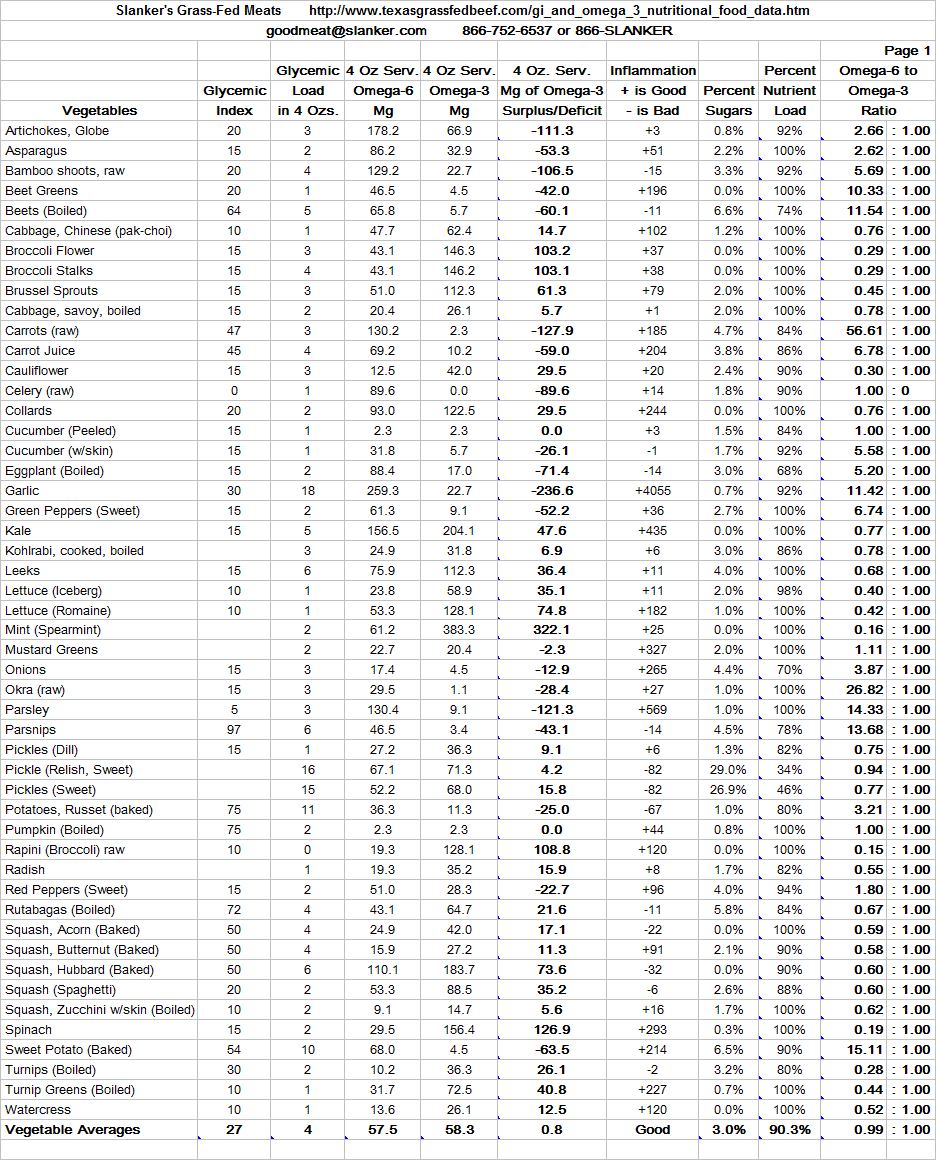 3)
3)
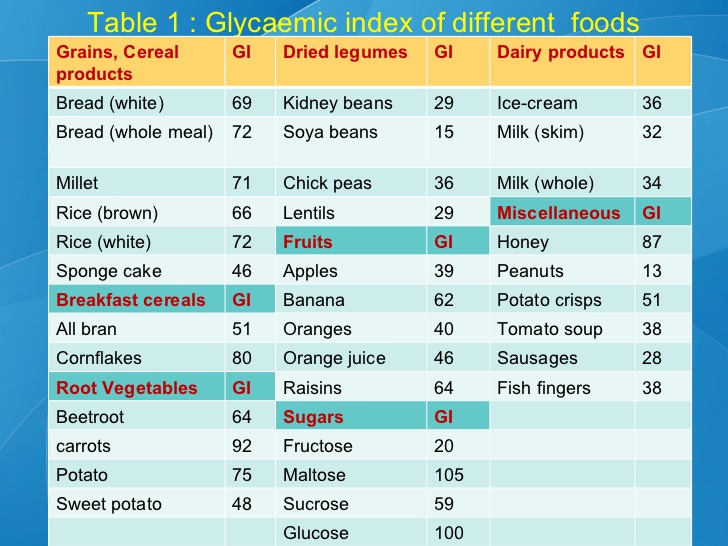 g. Lucozade, Gatorade
g. Lucozade, Gatorade